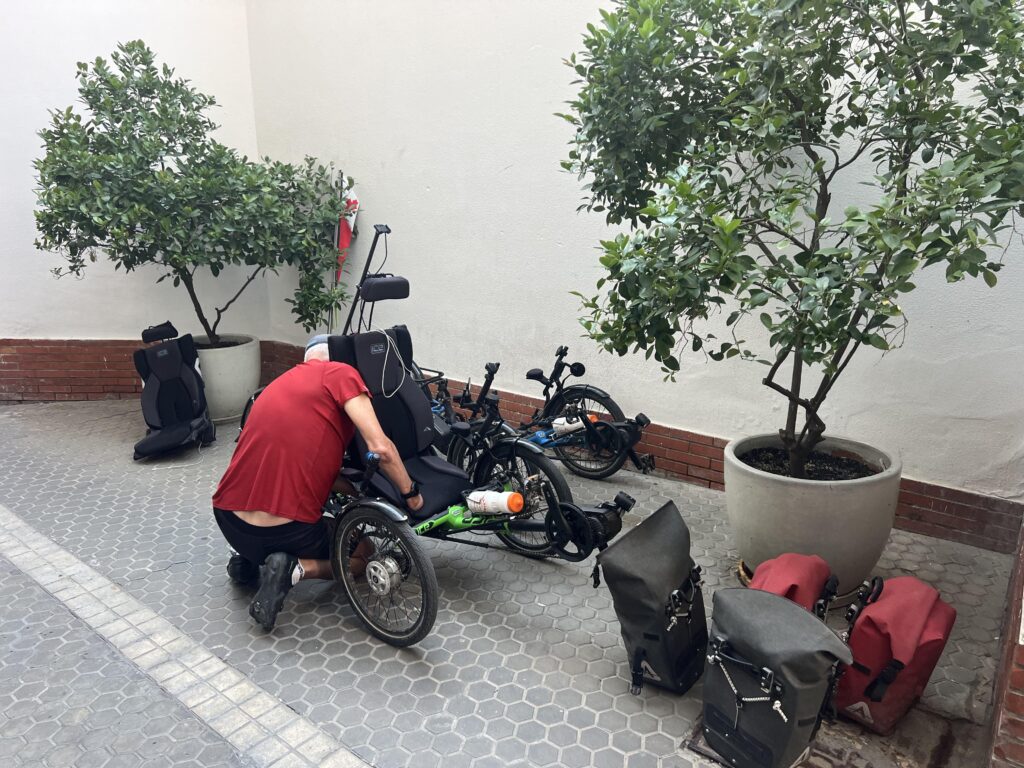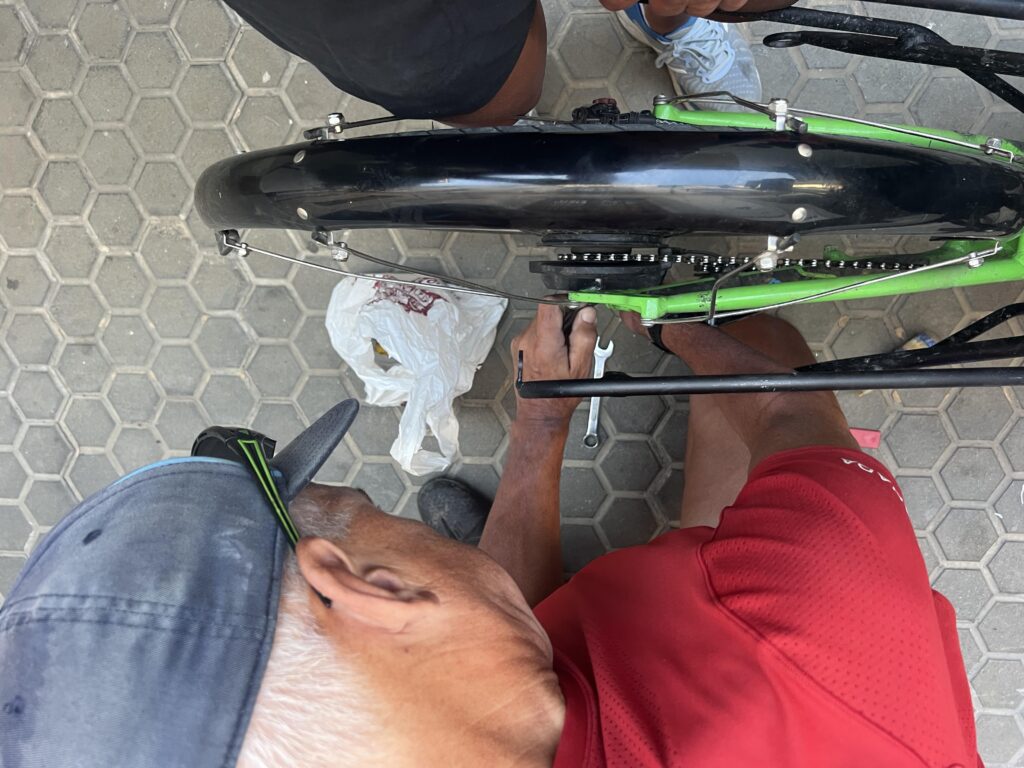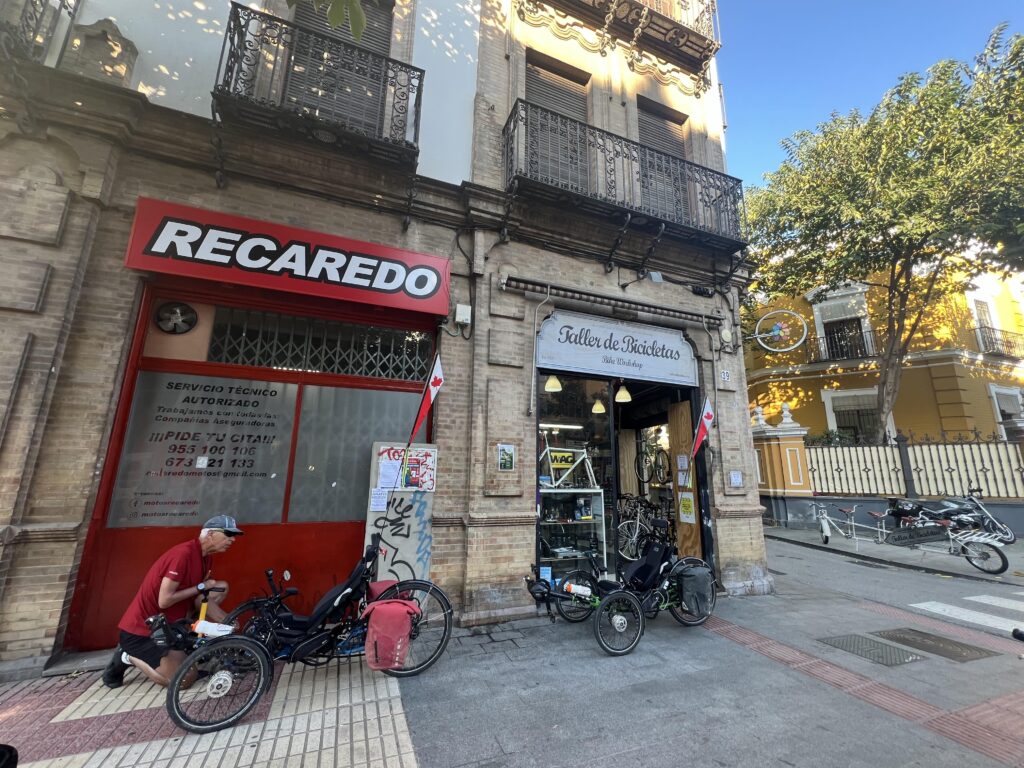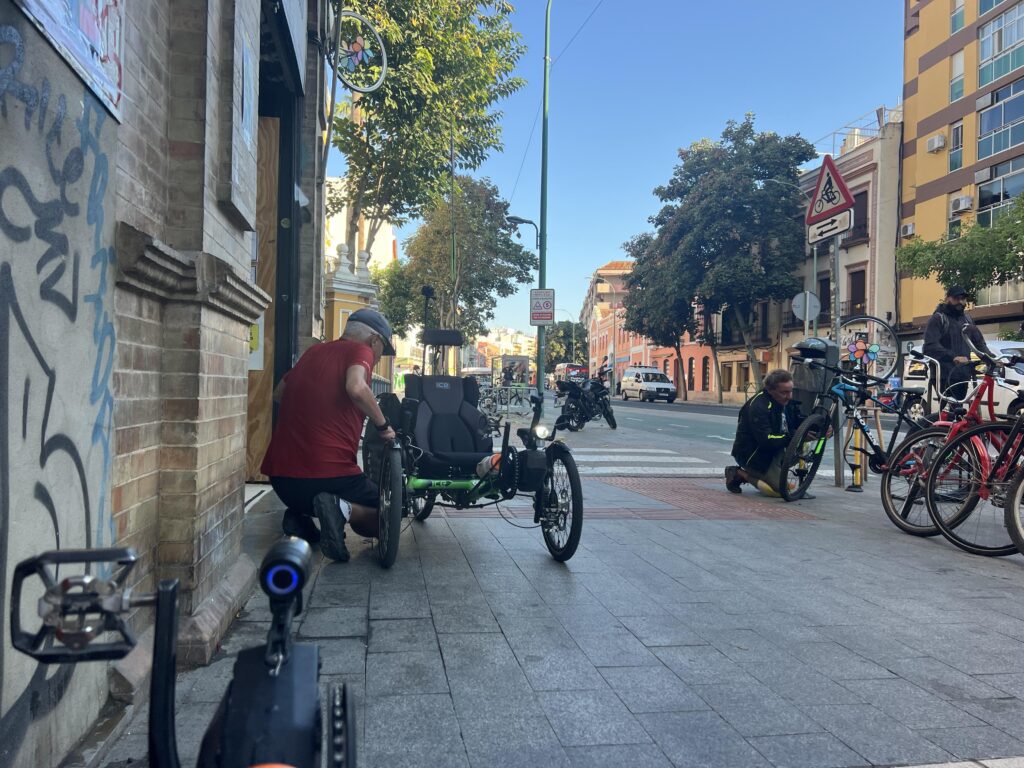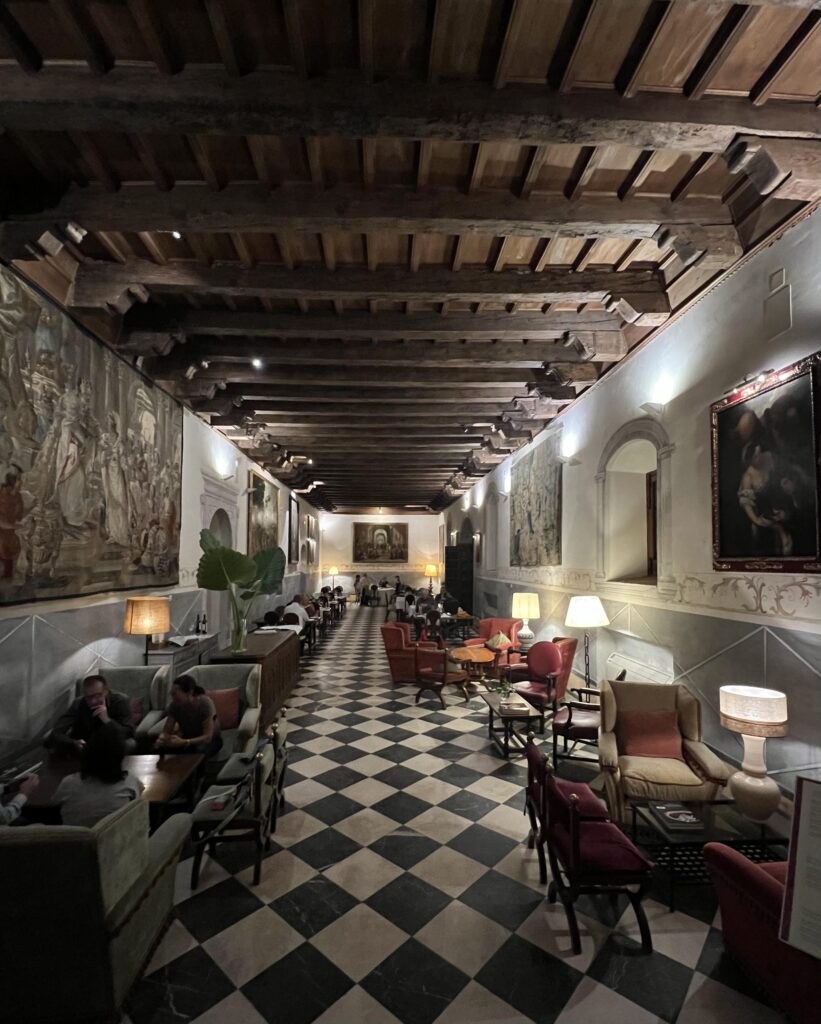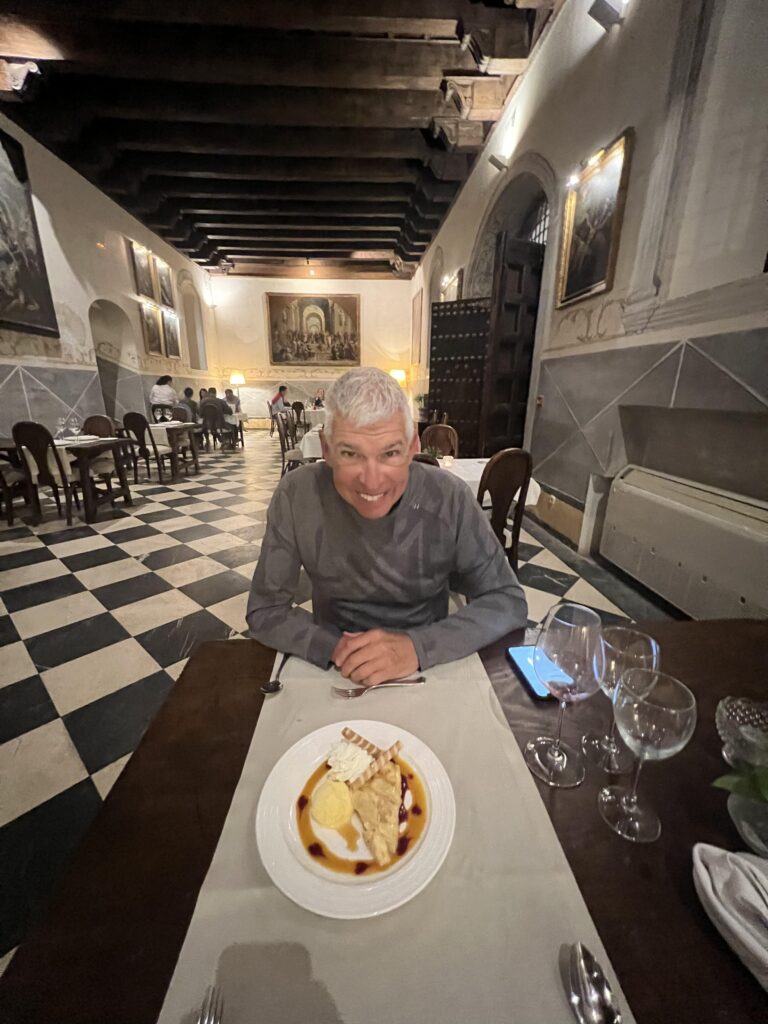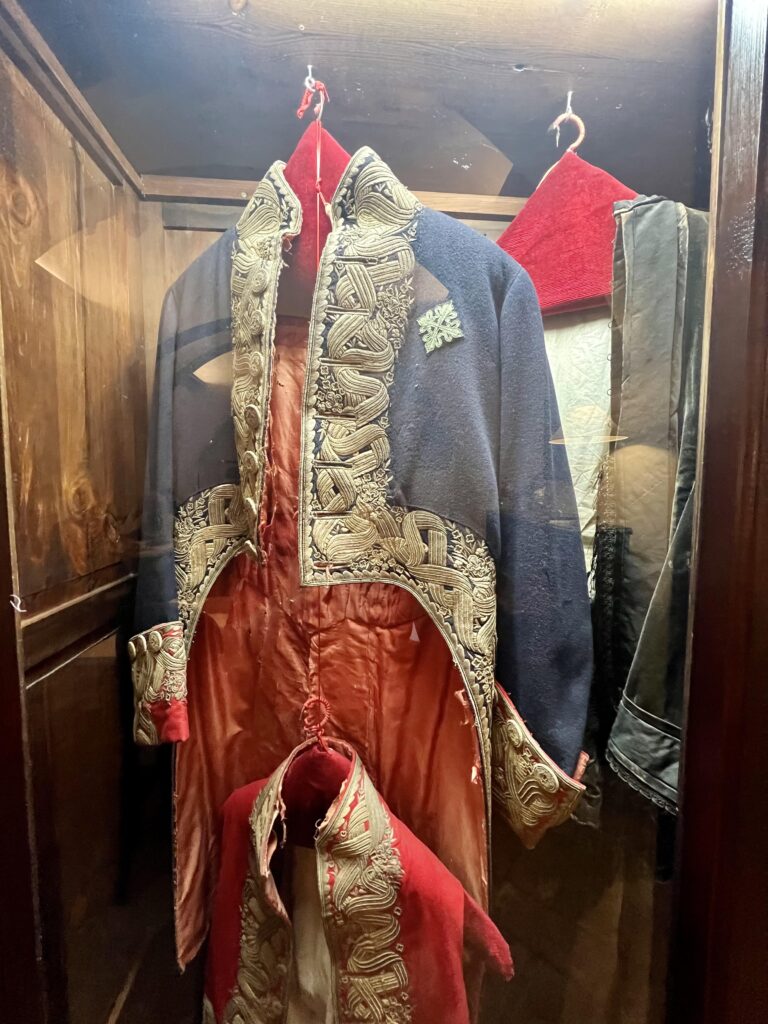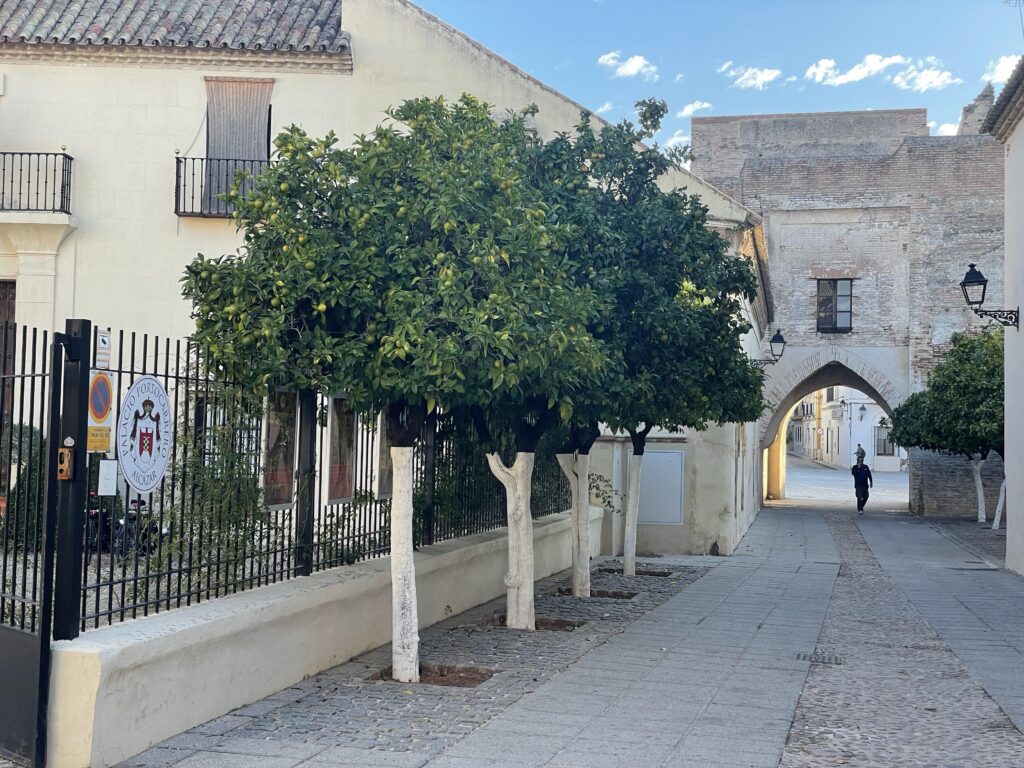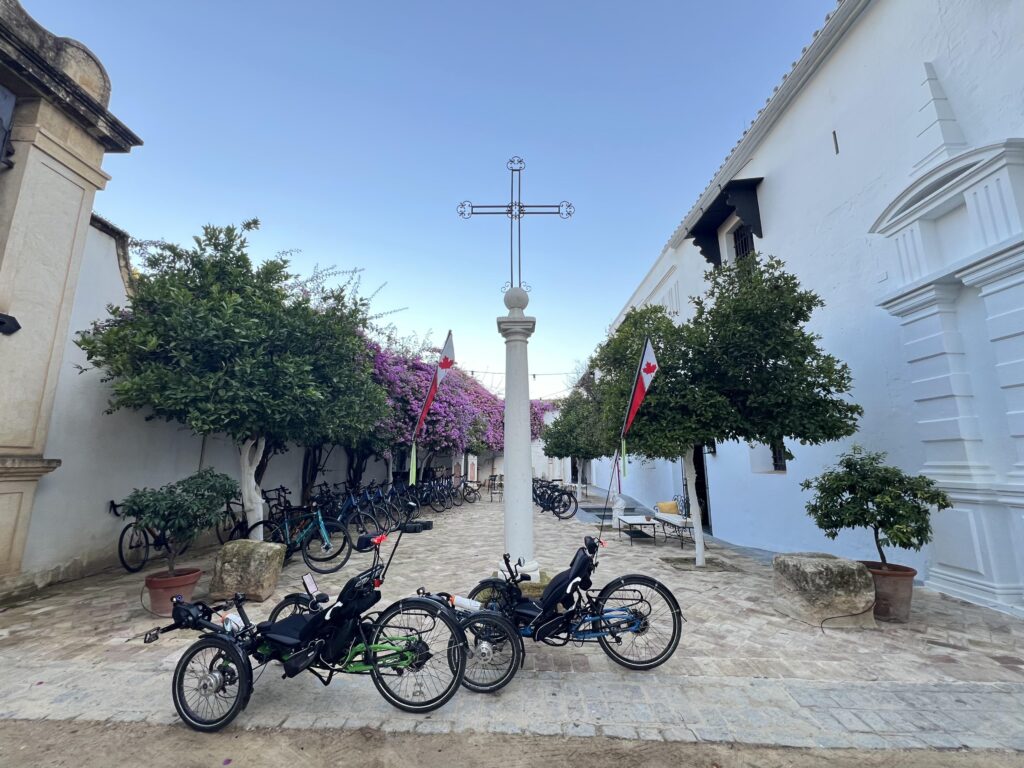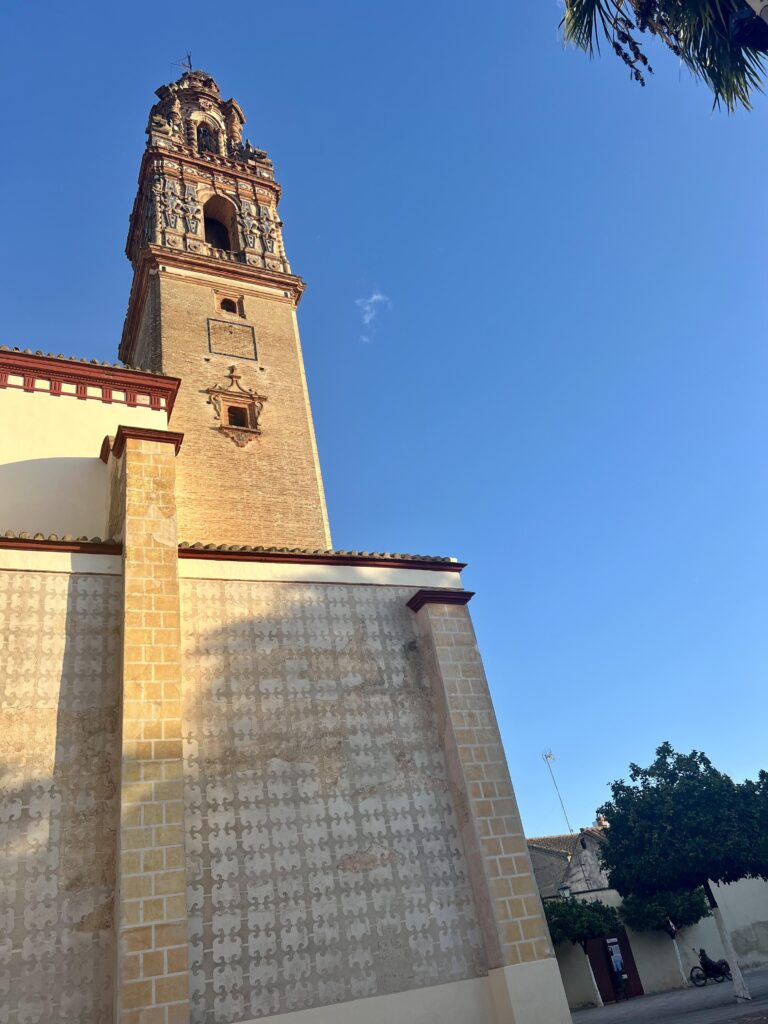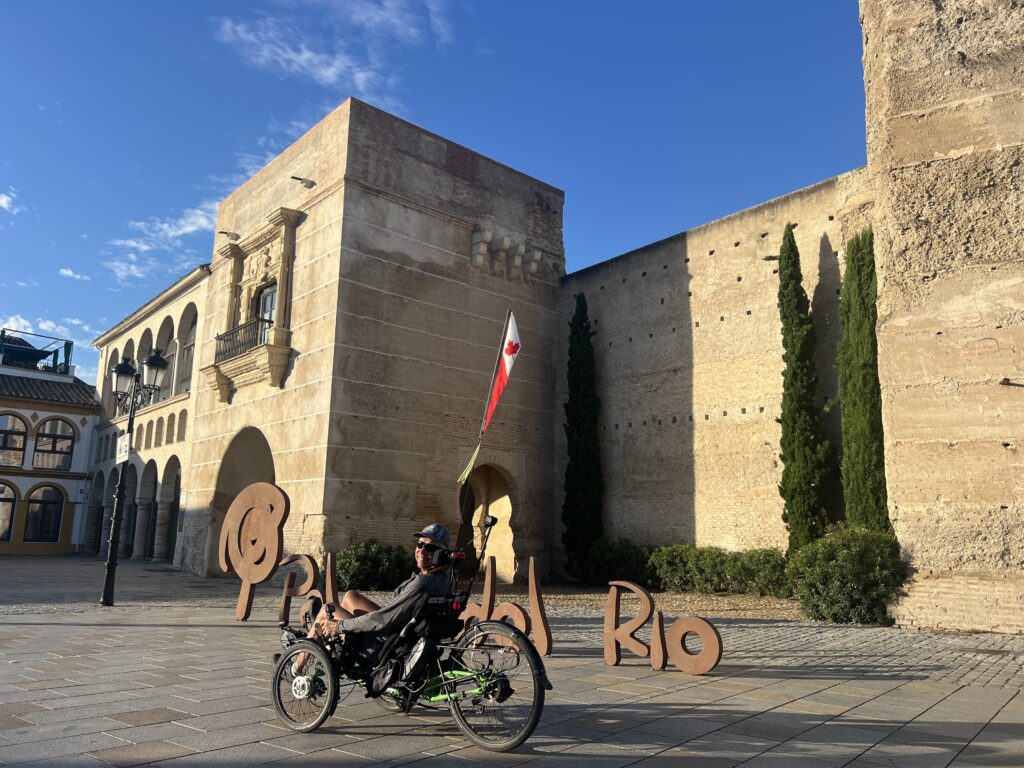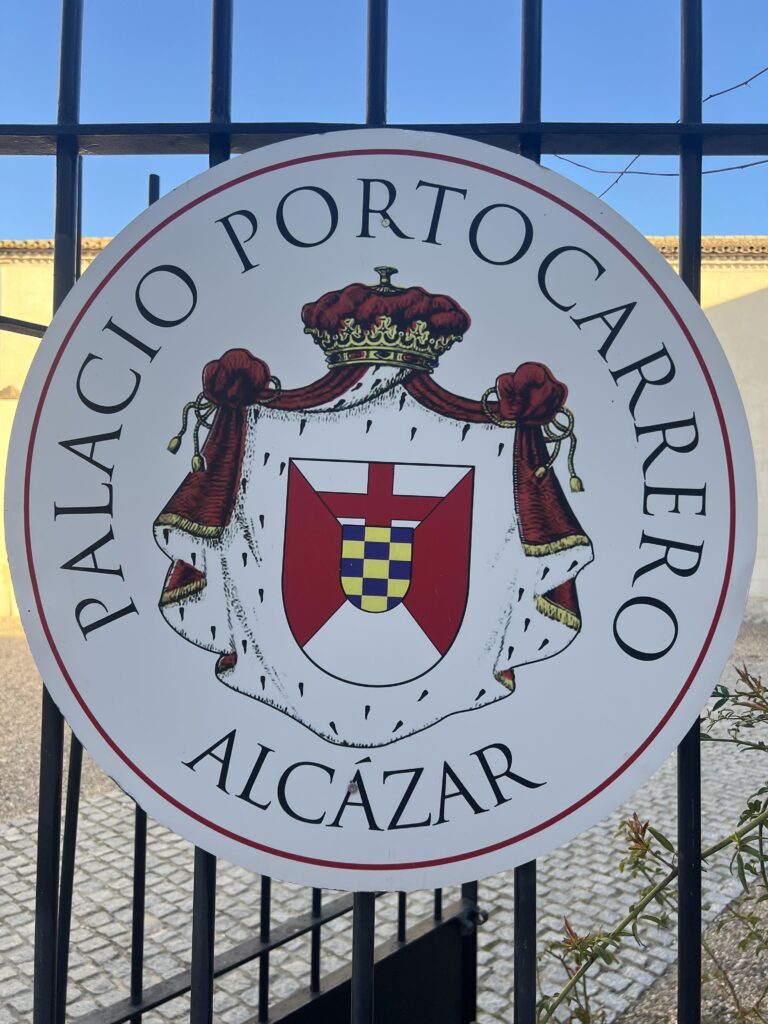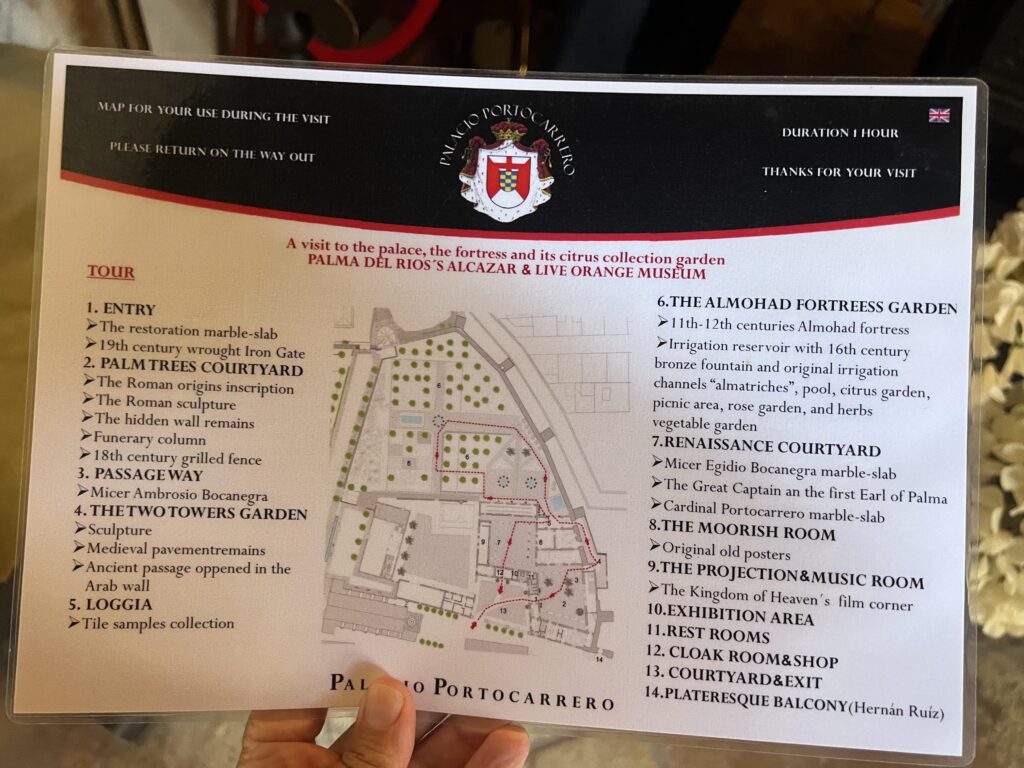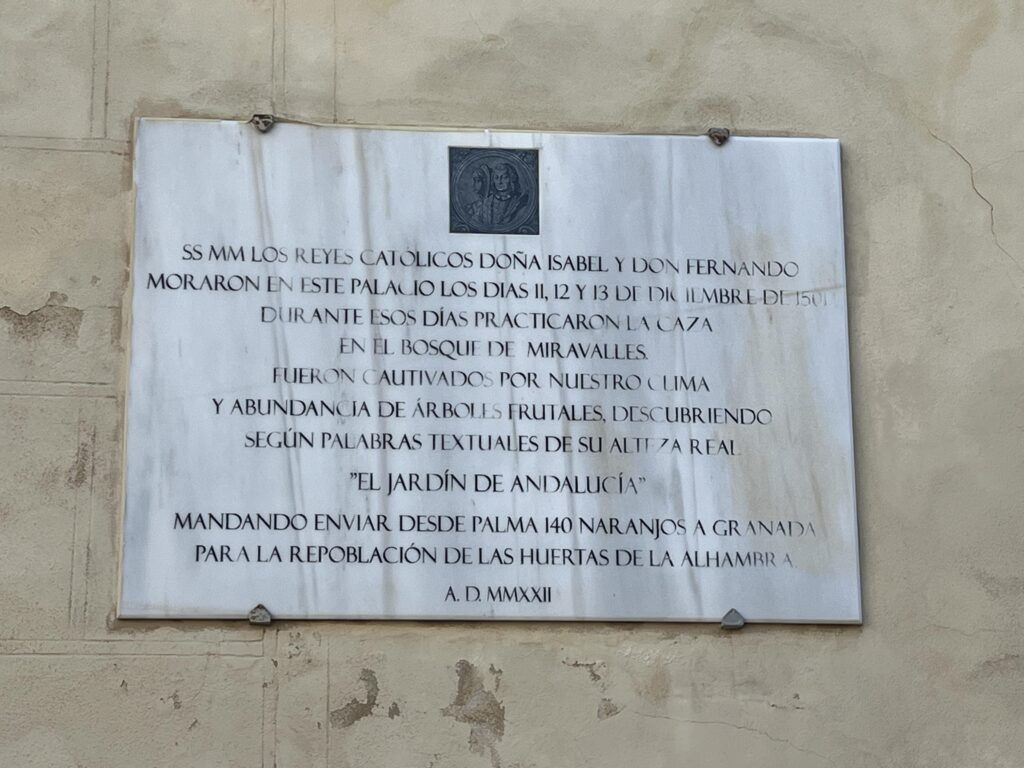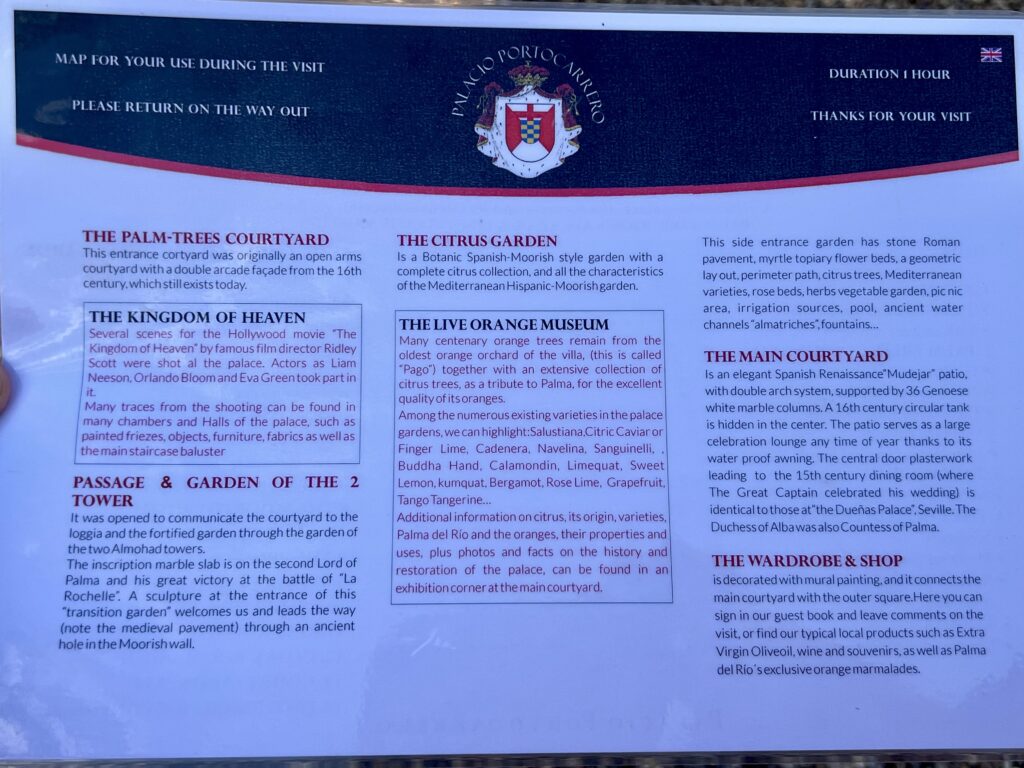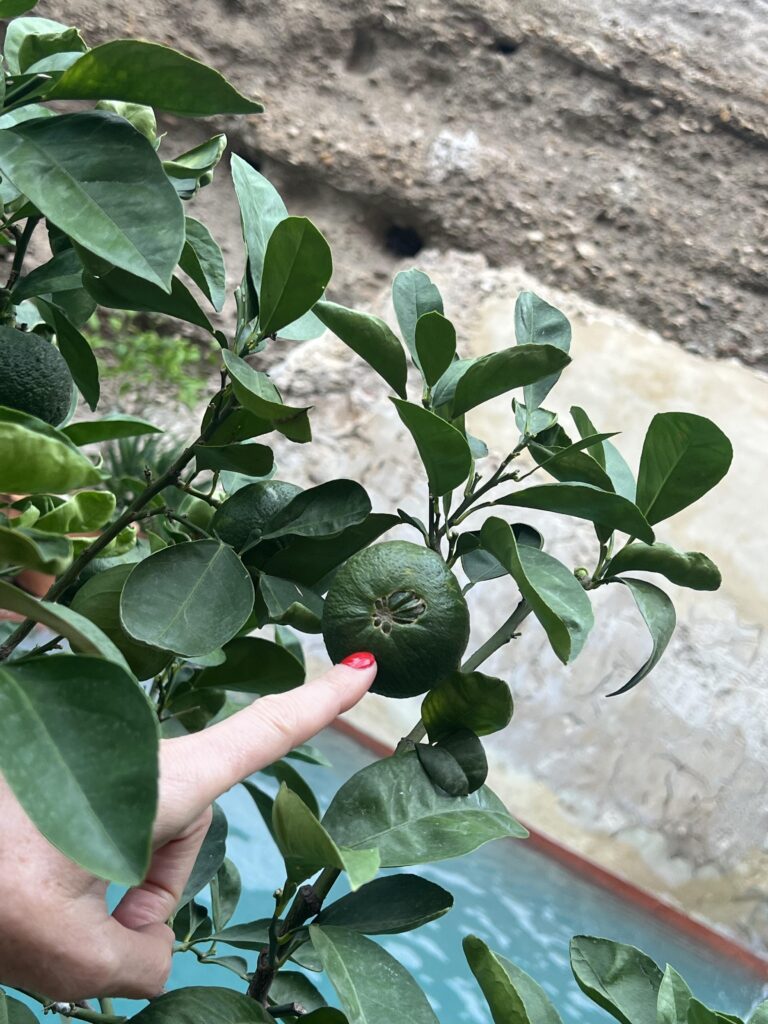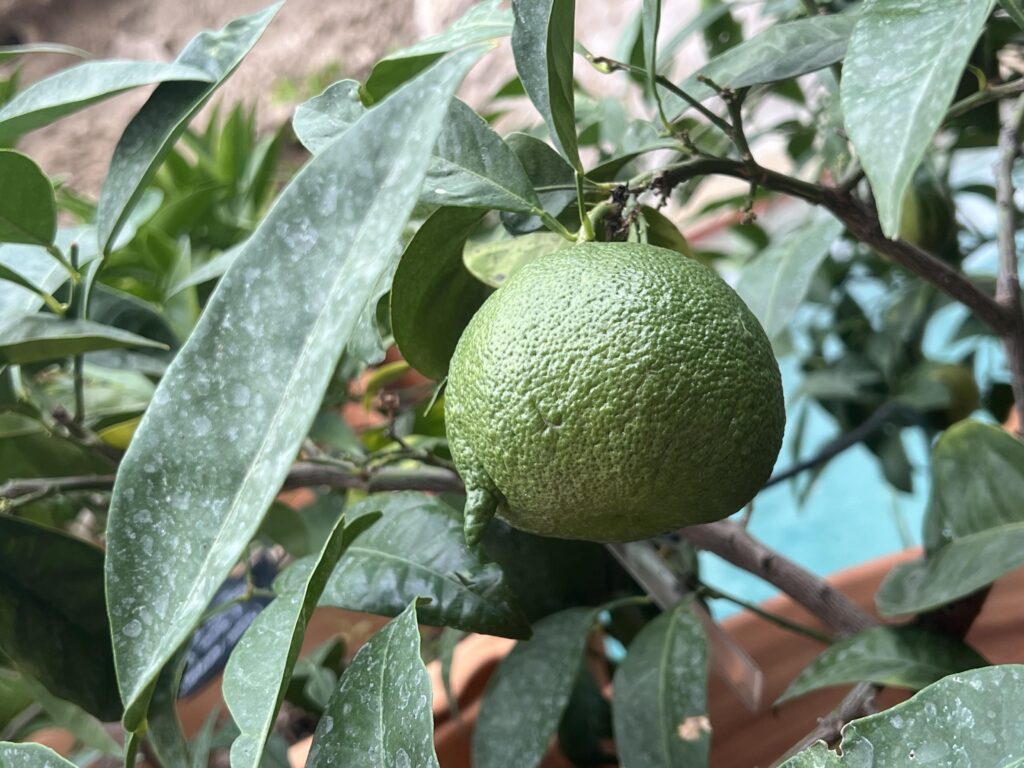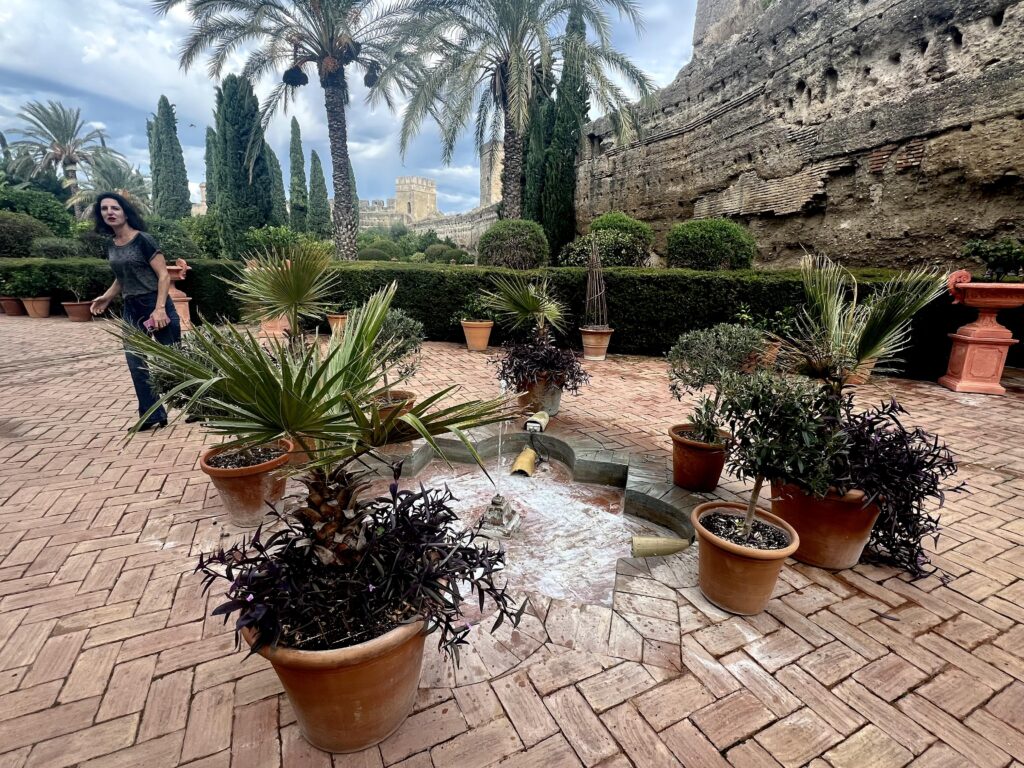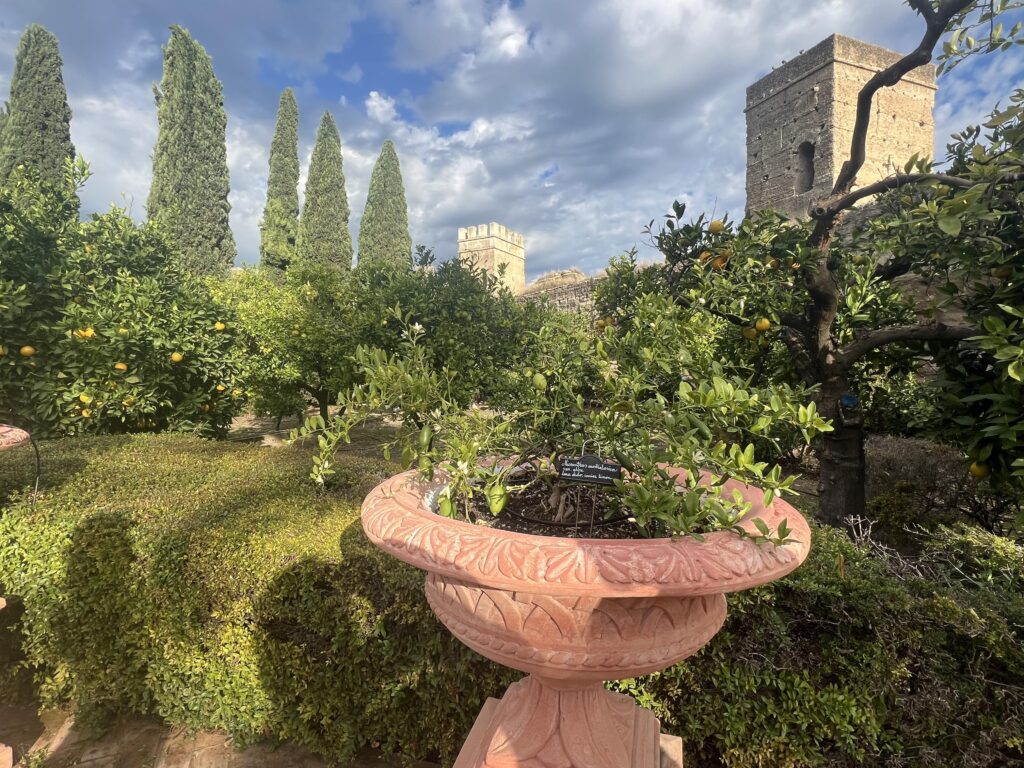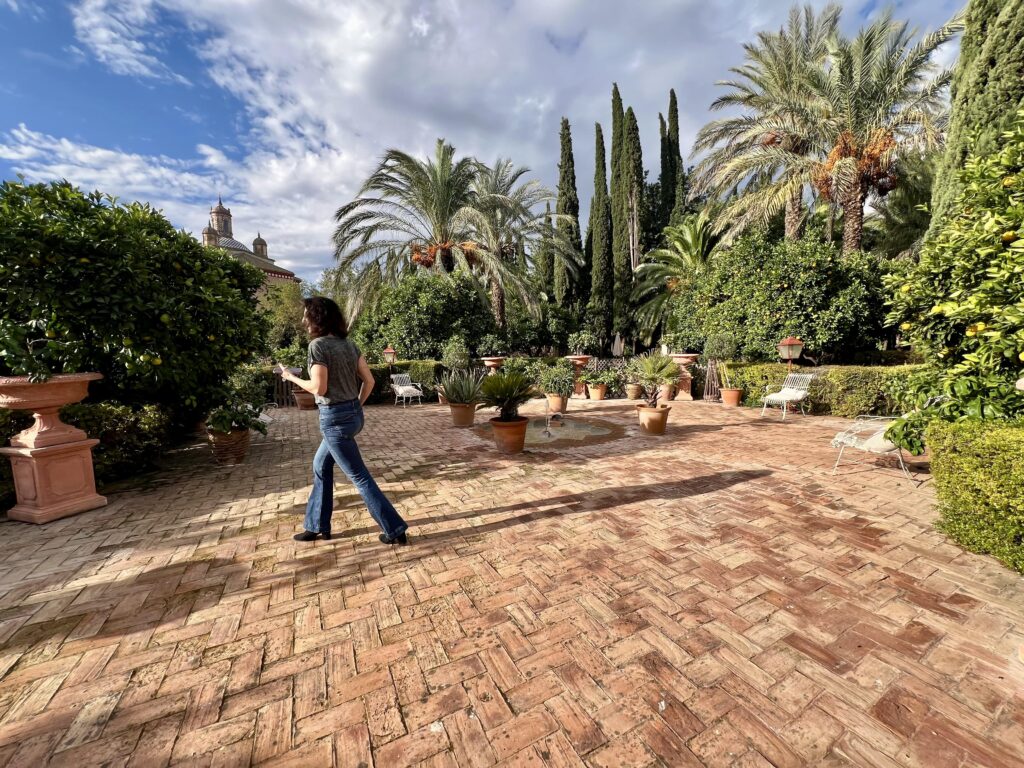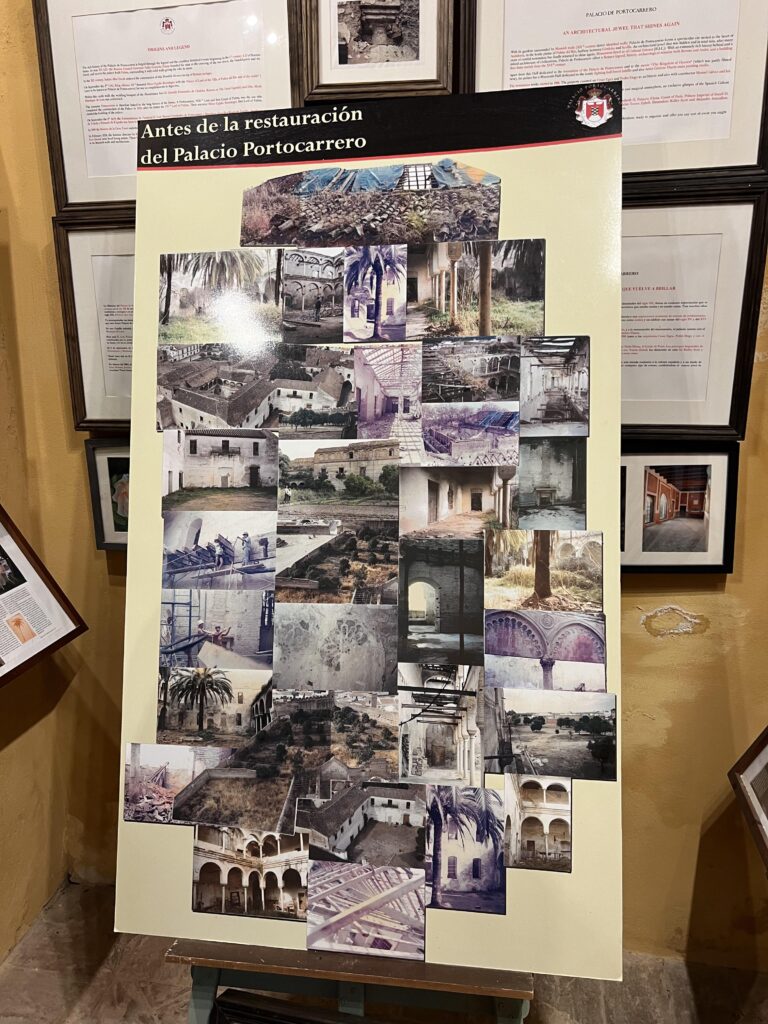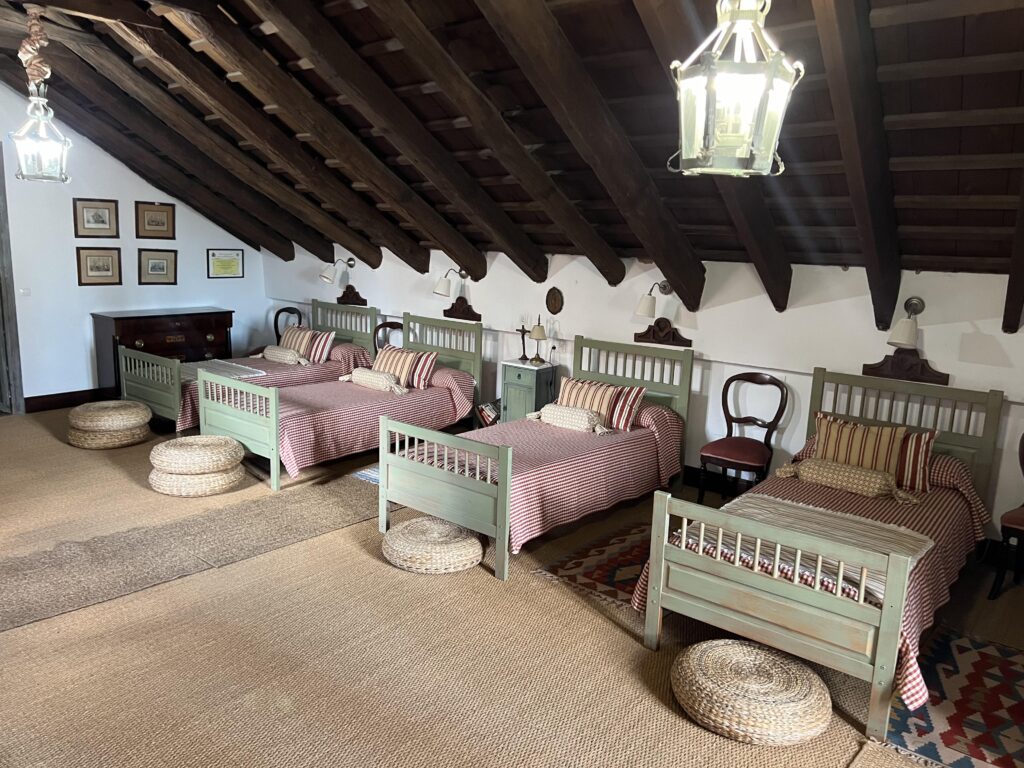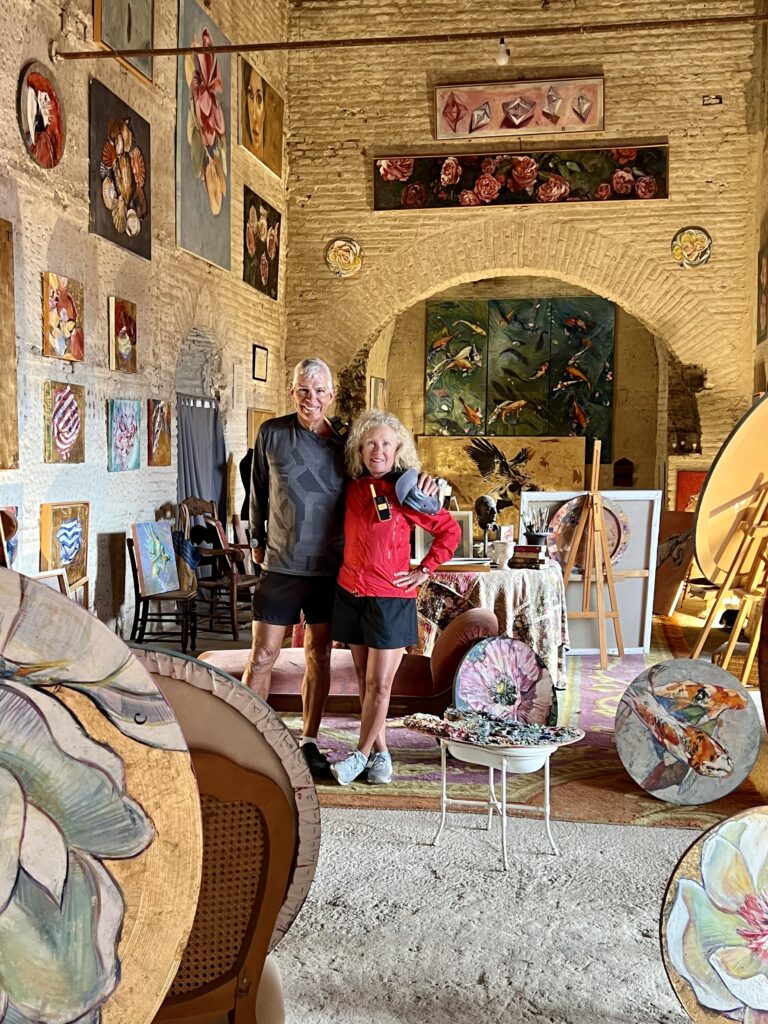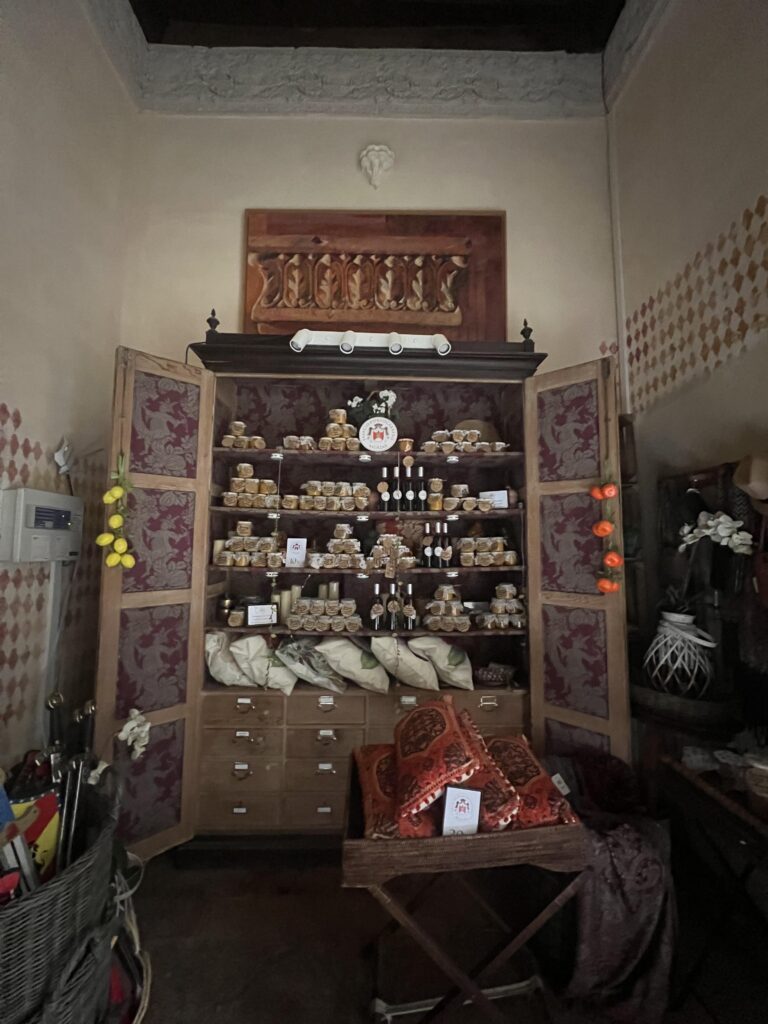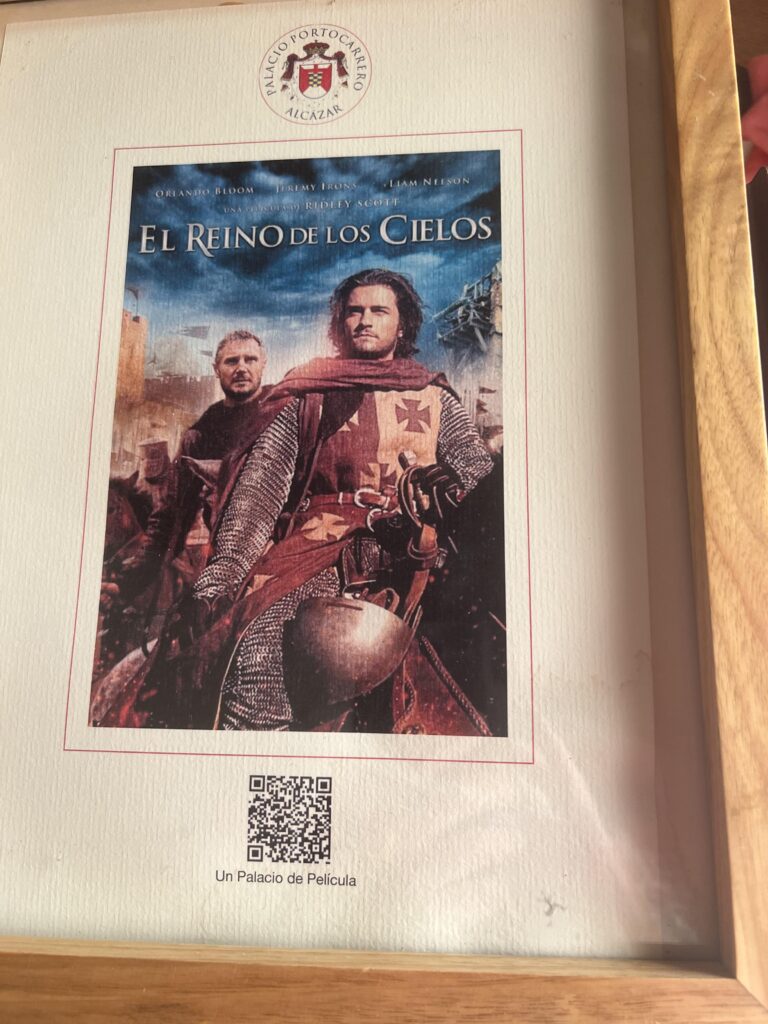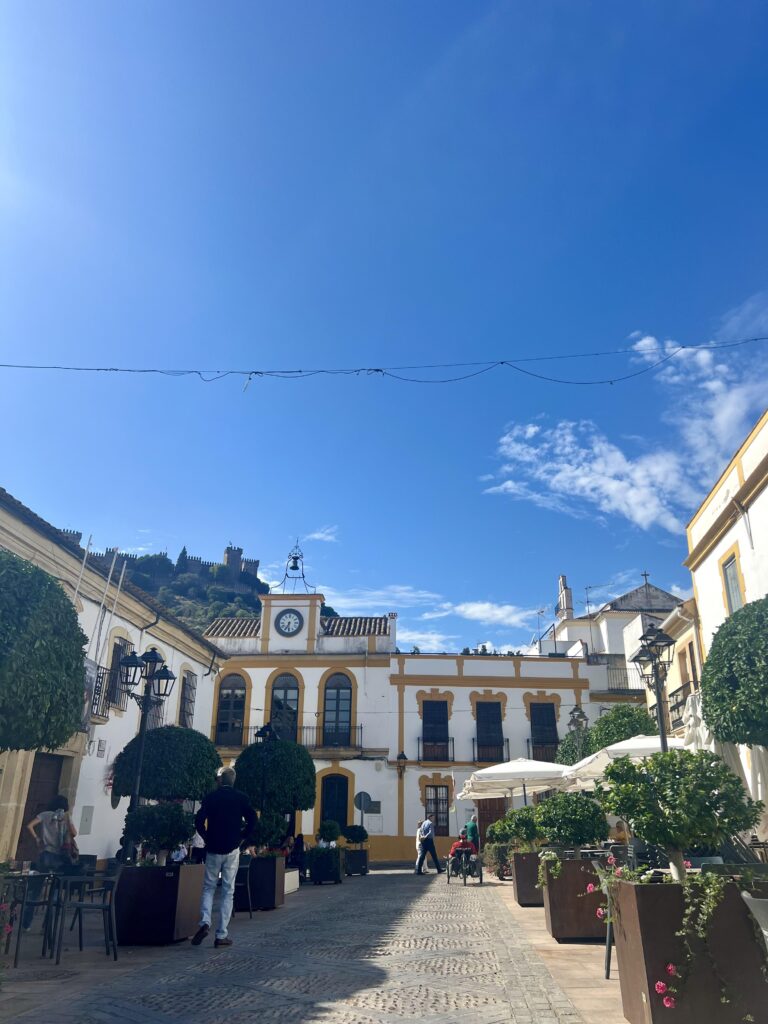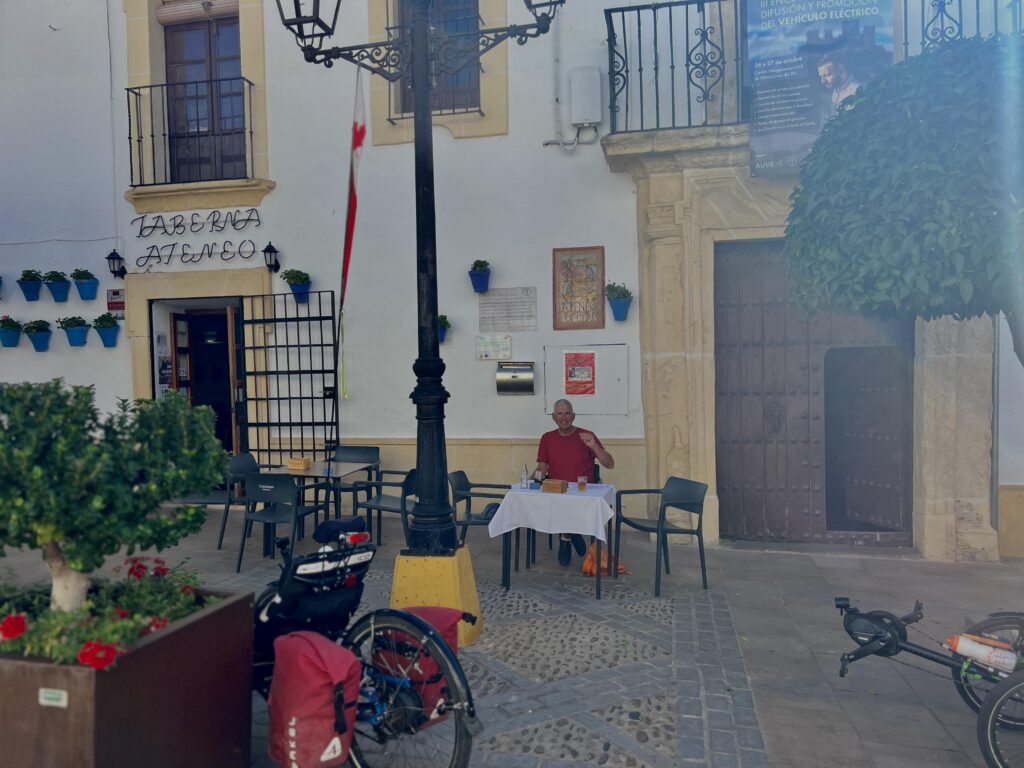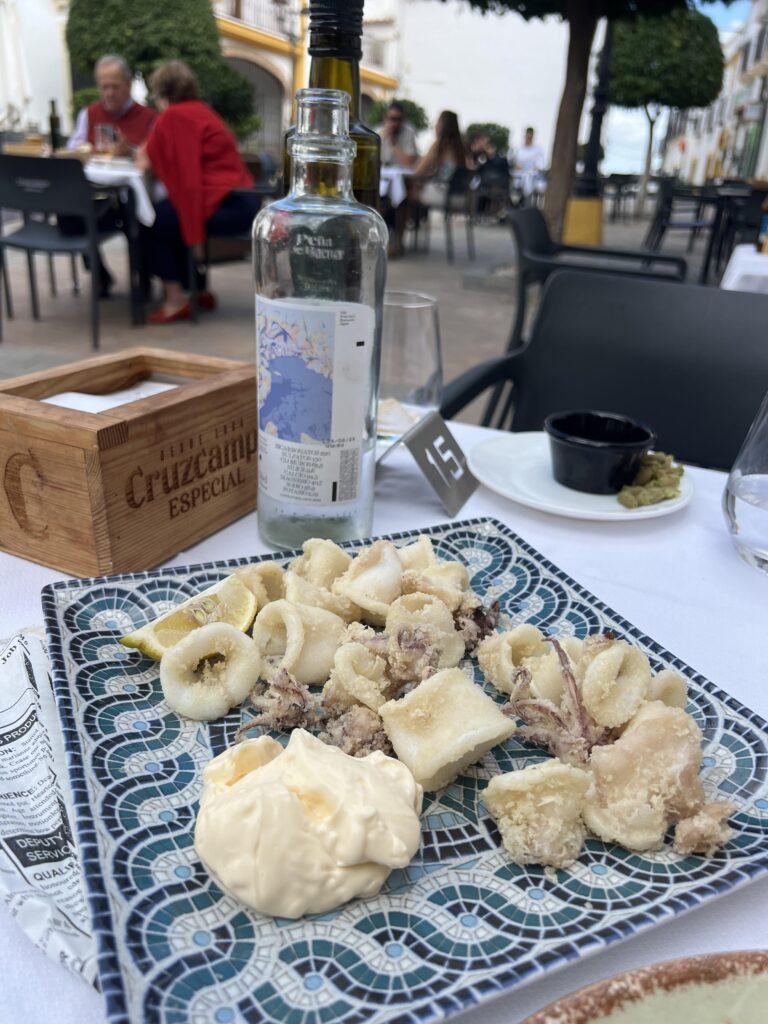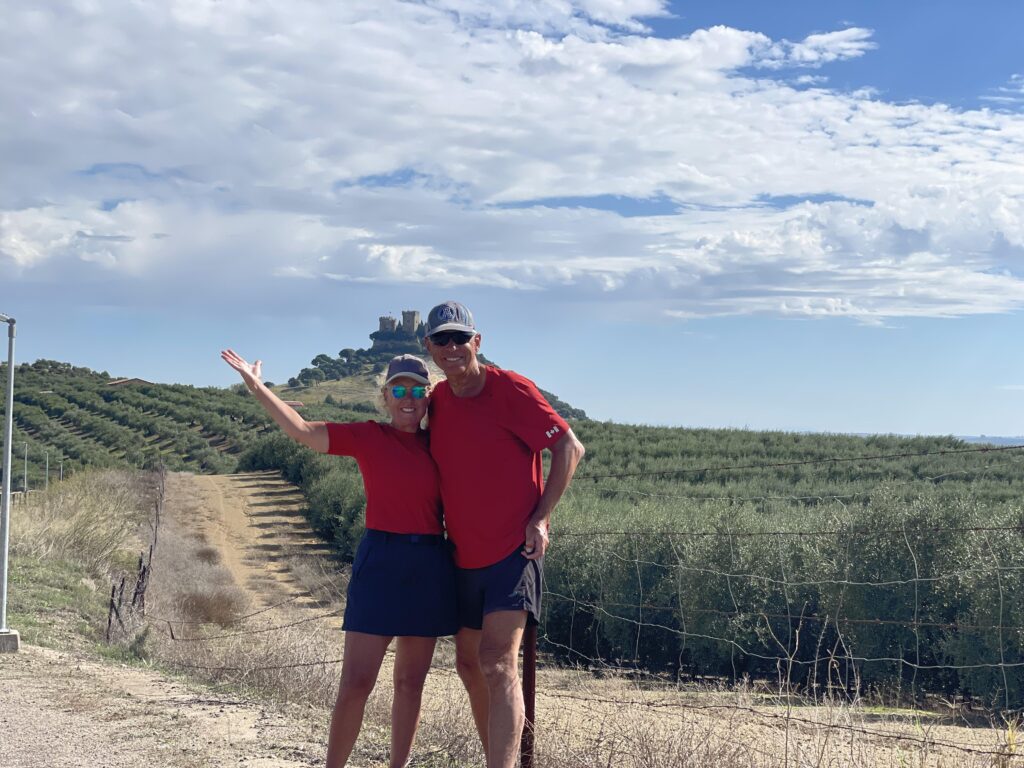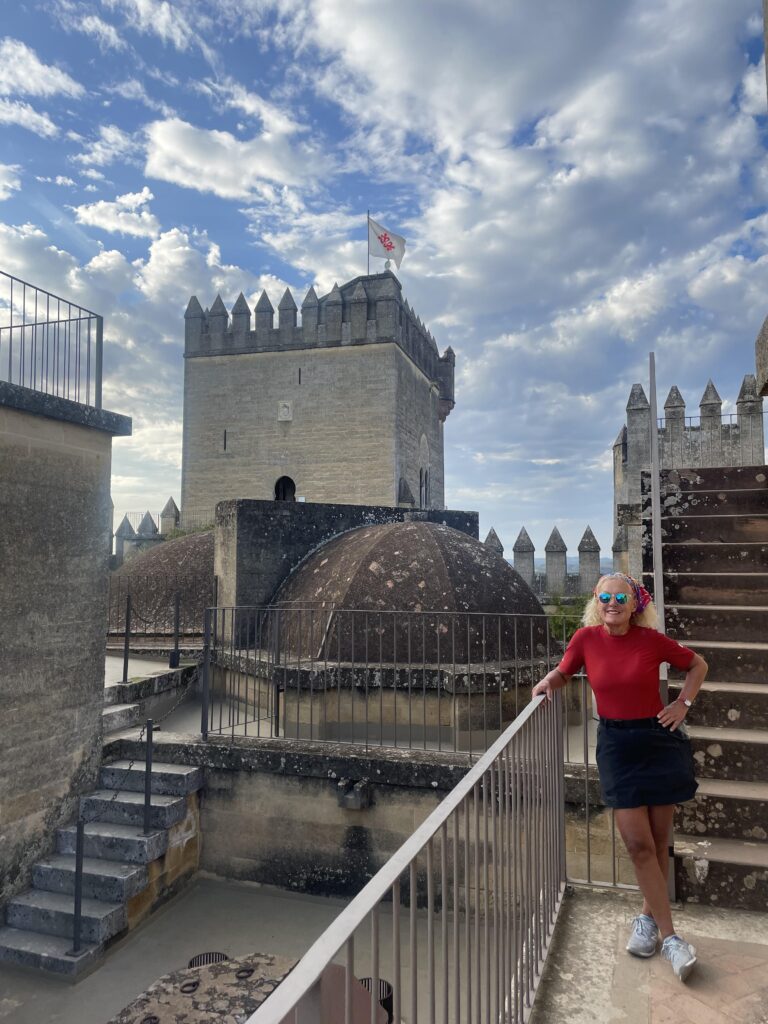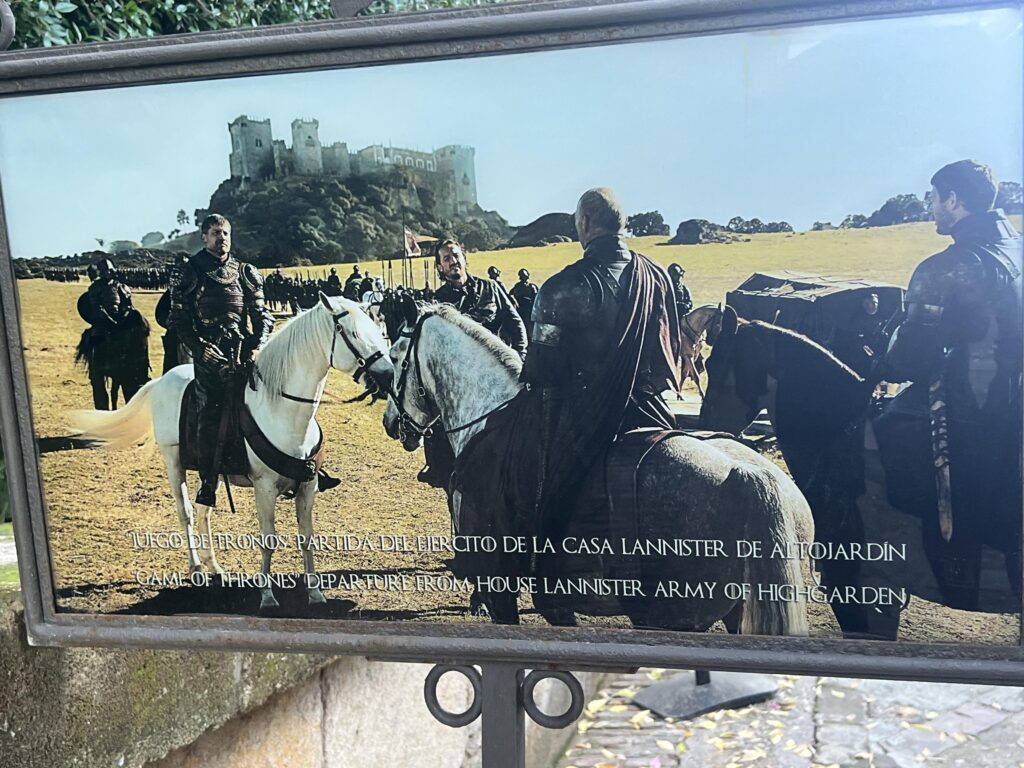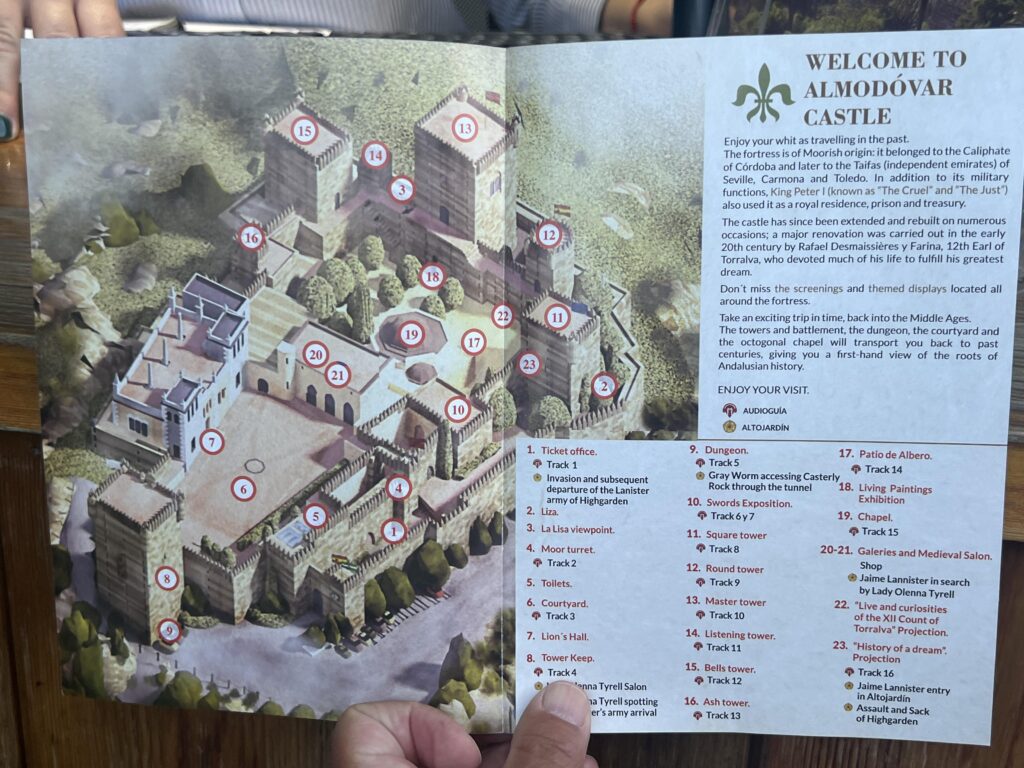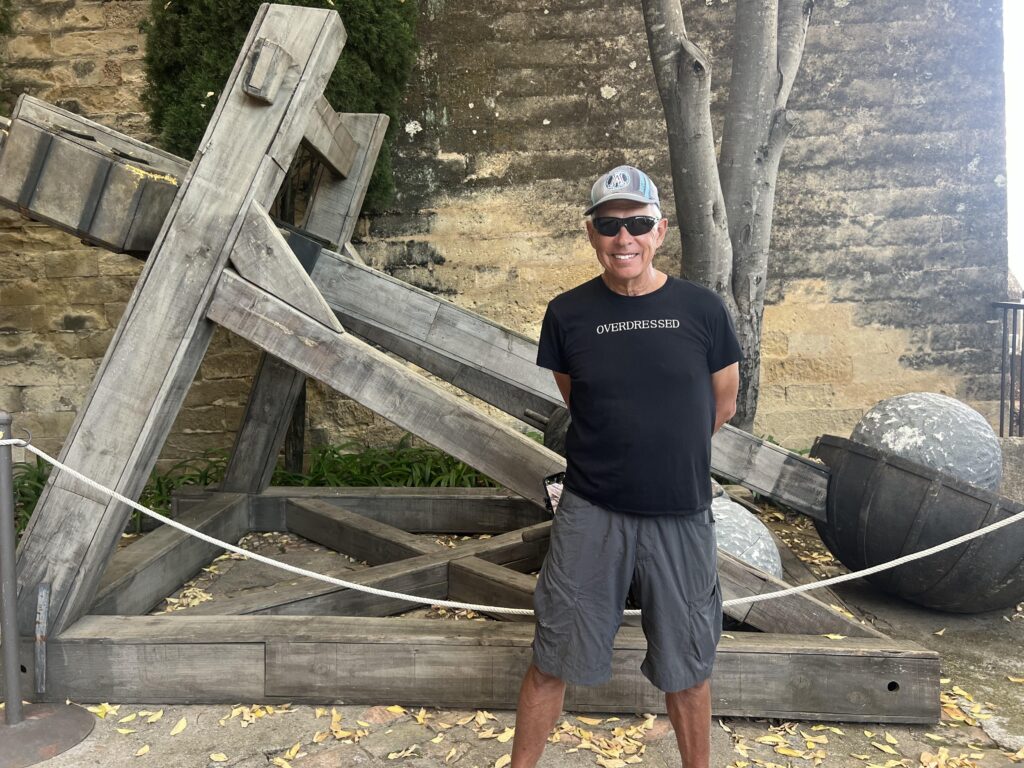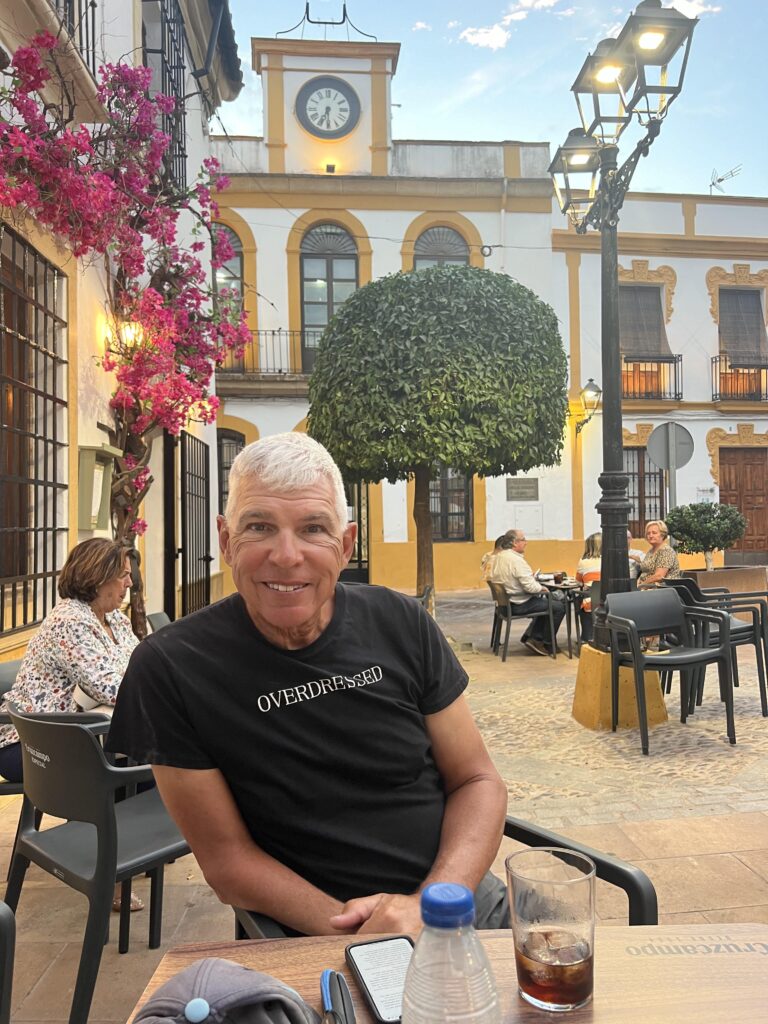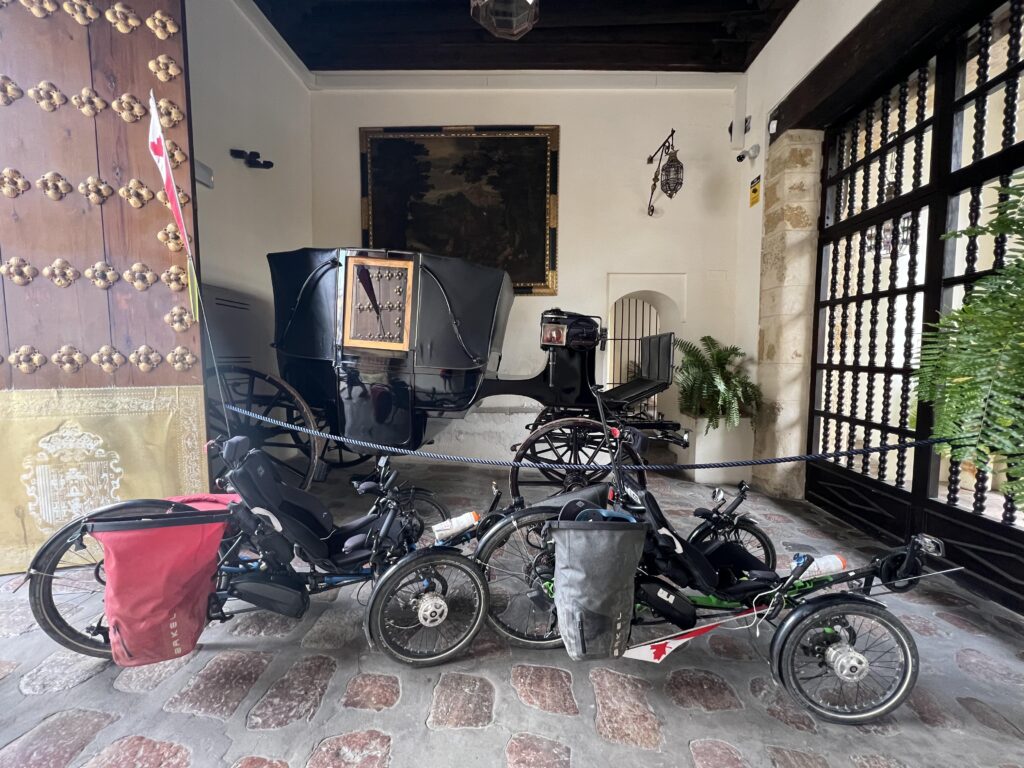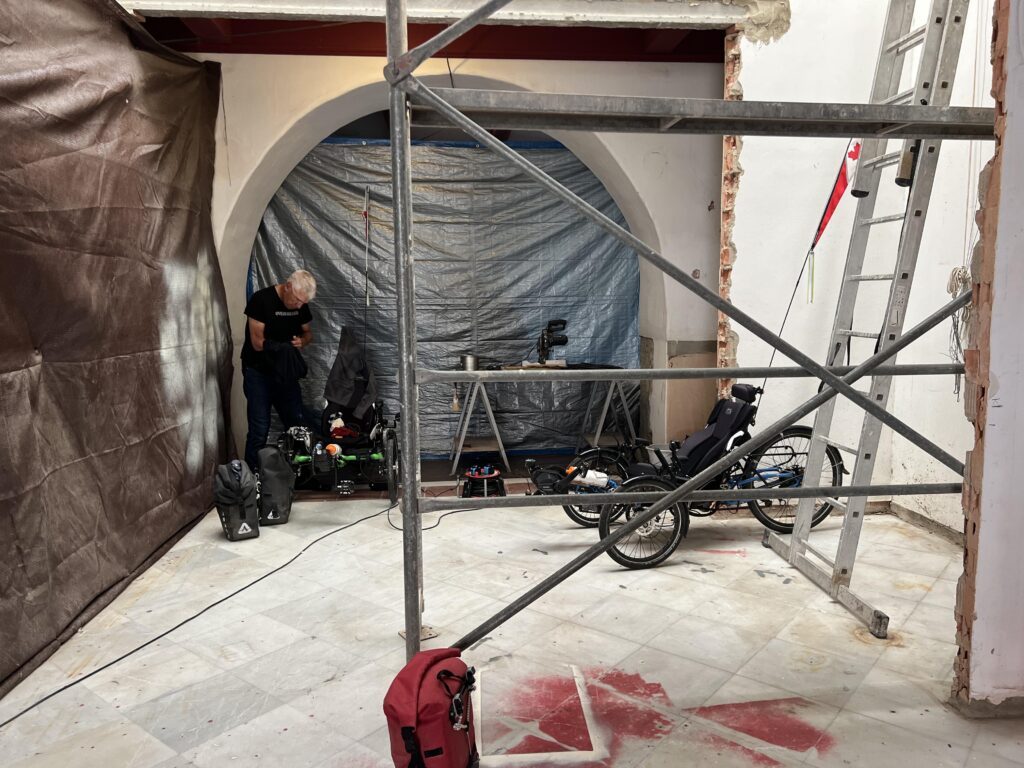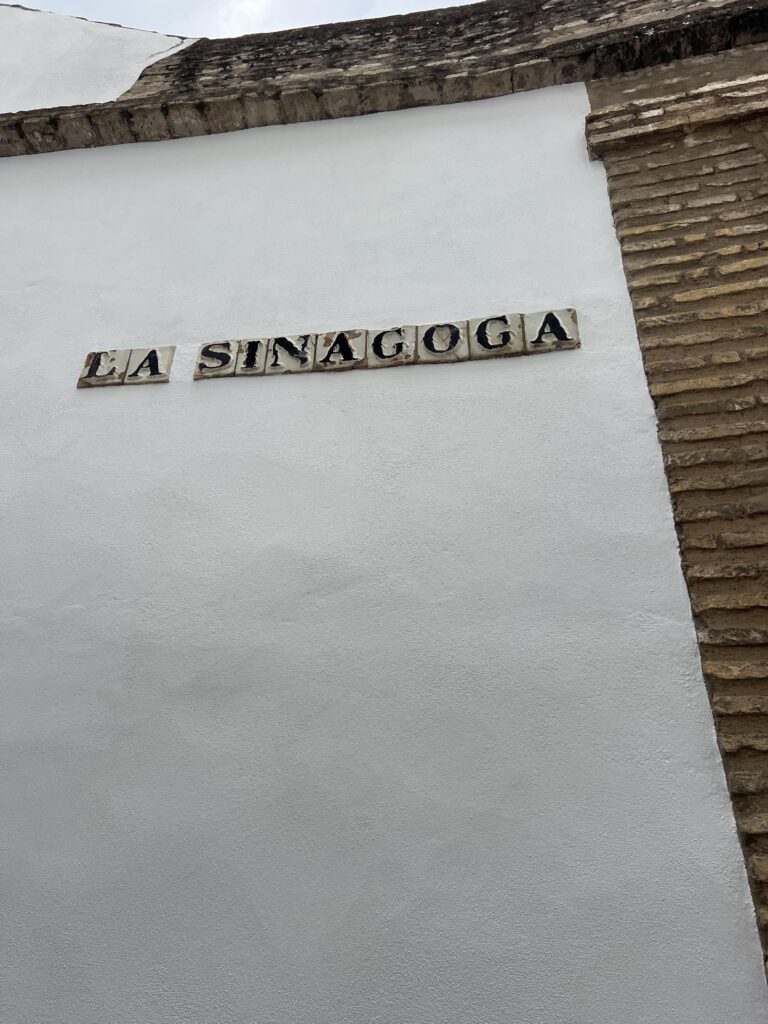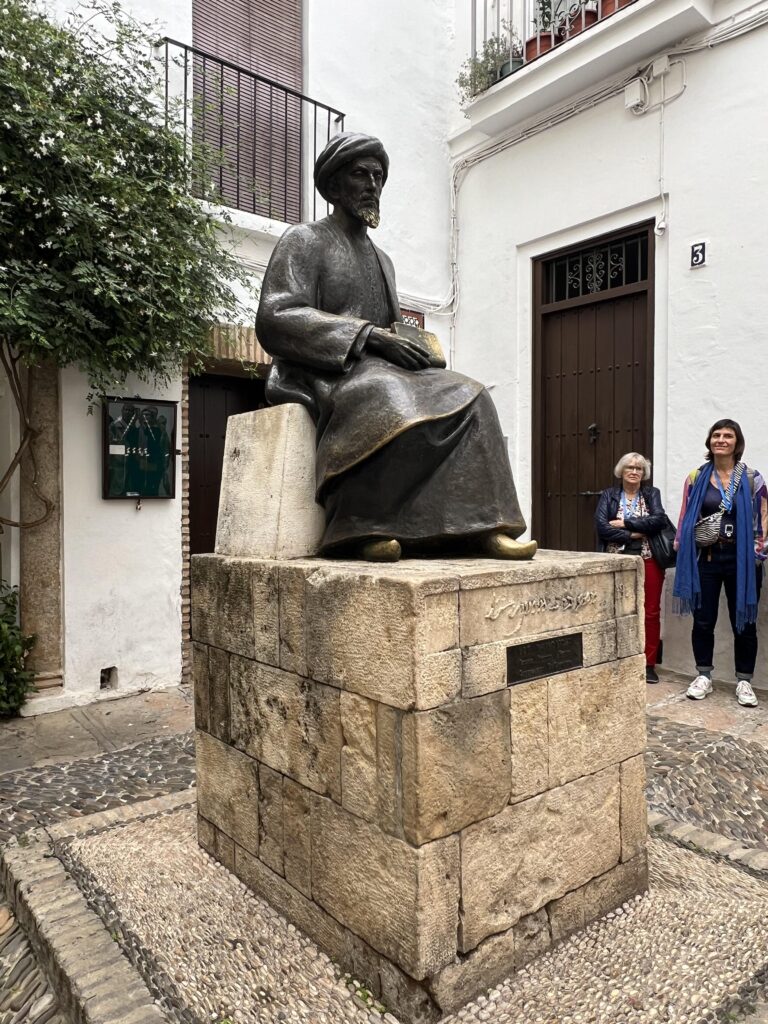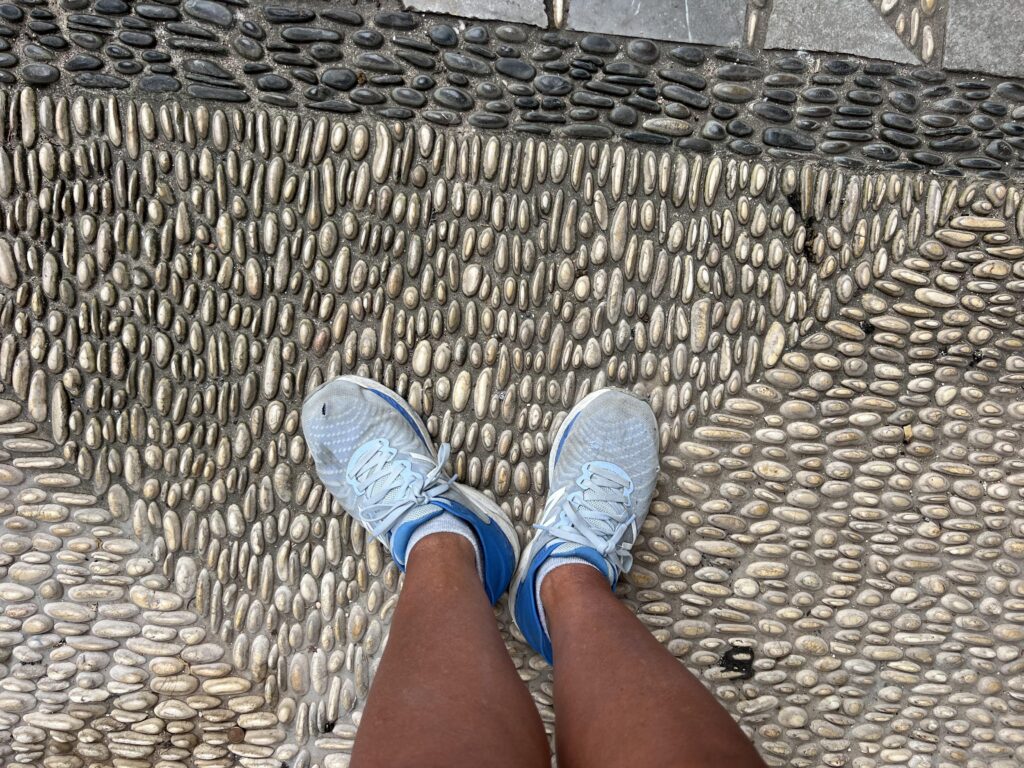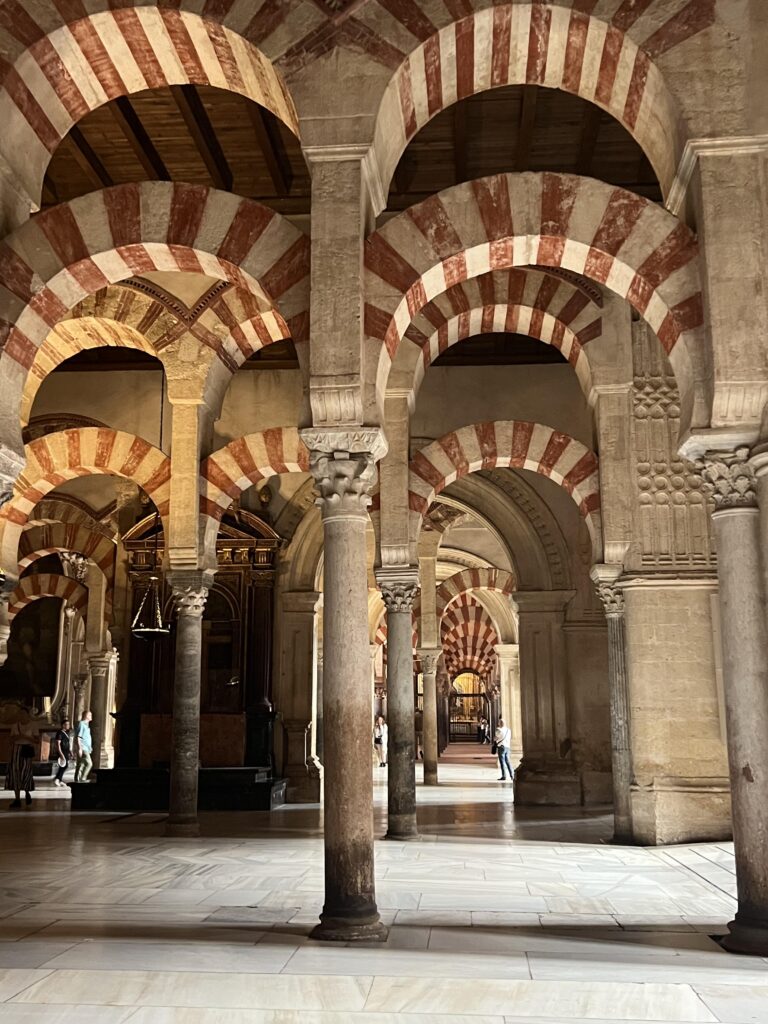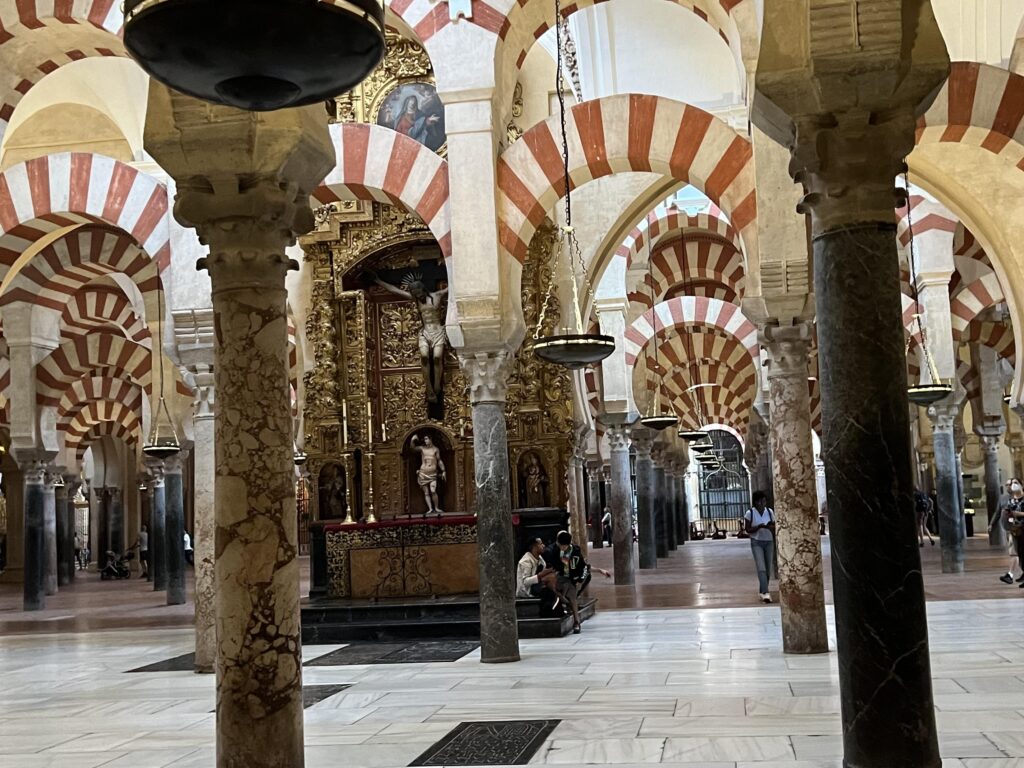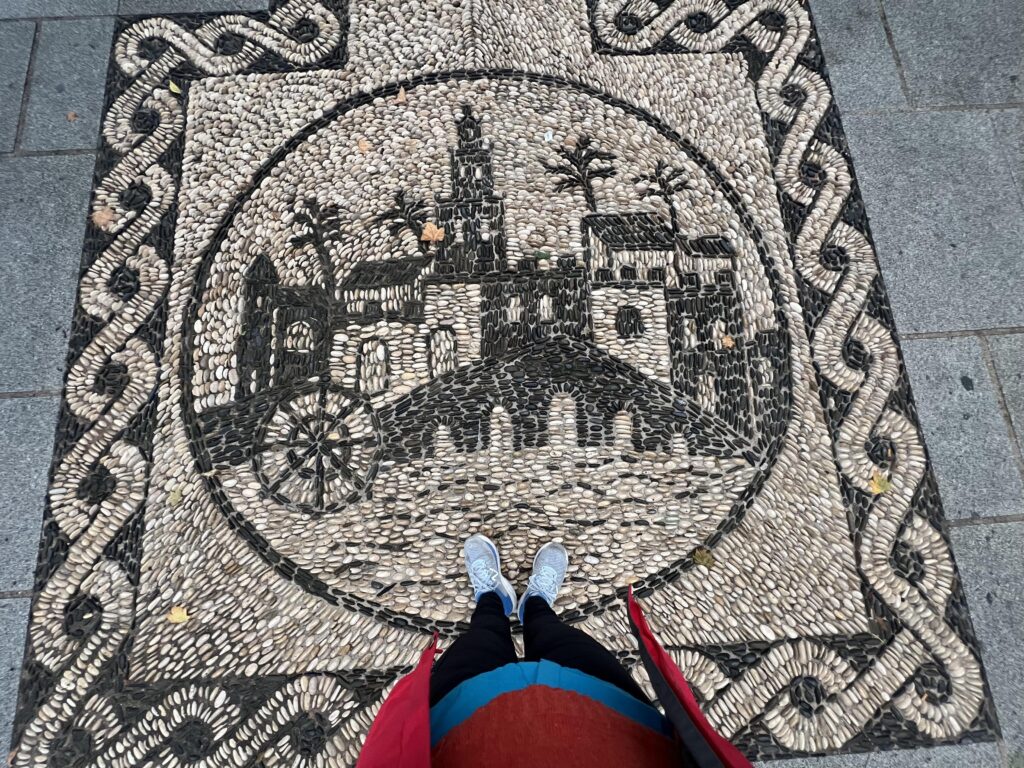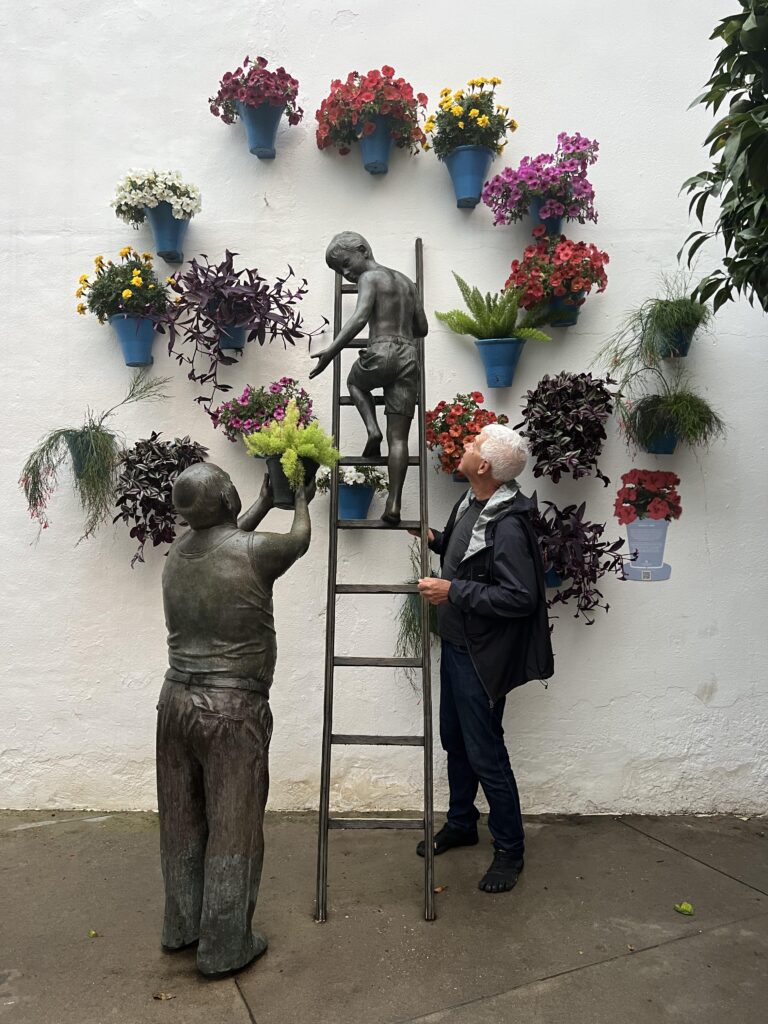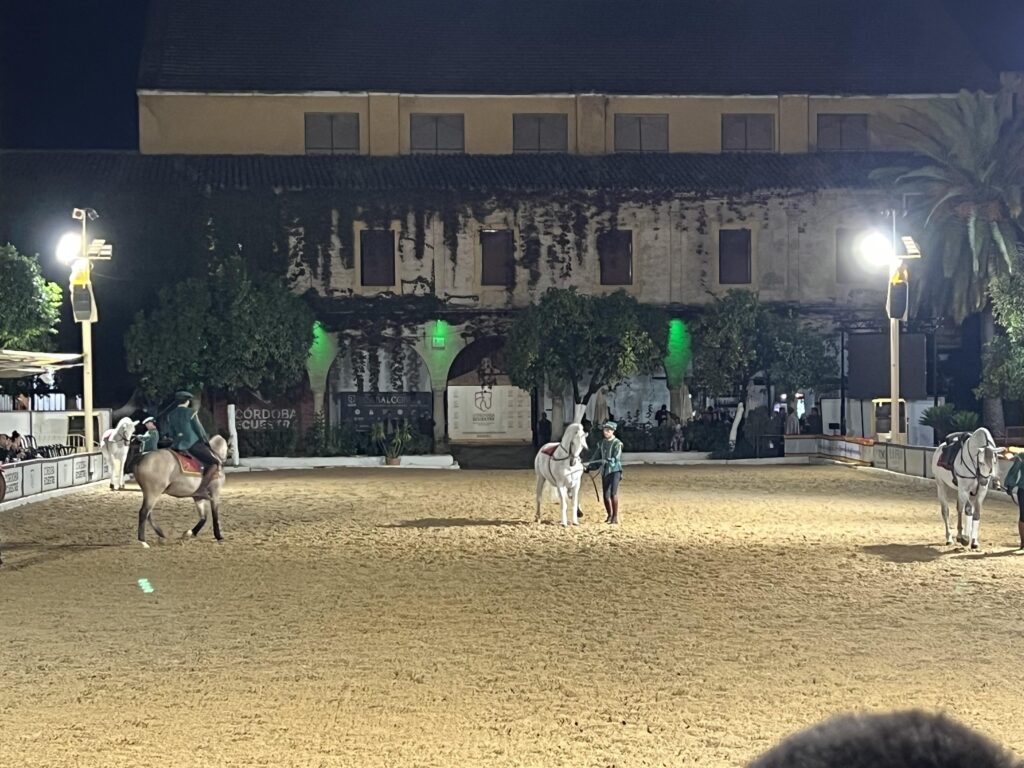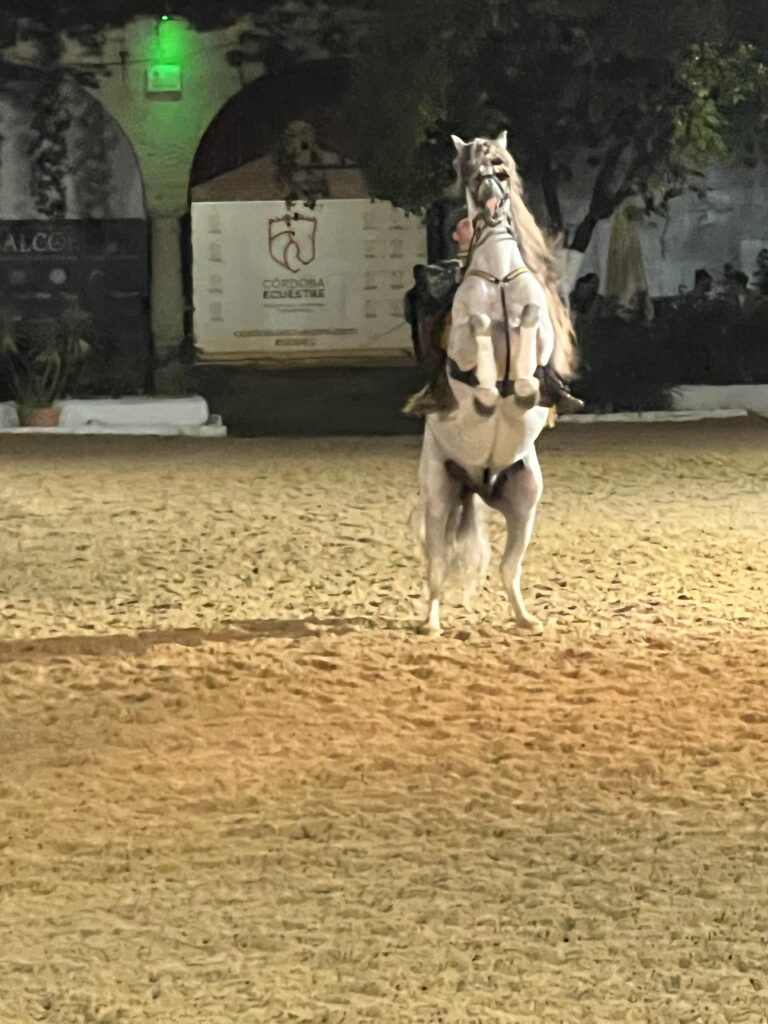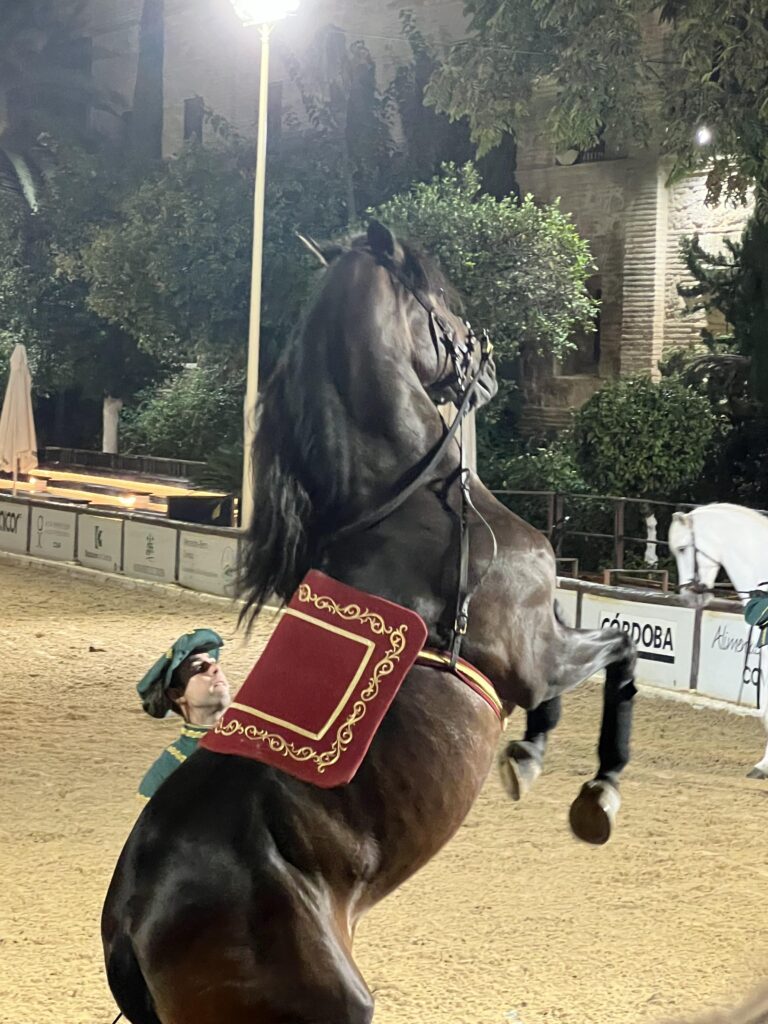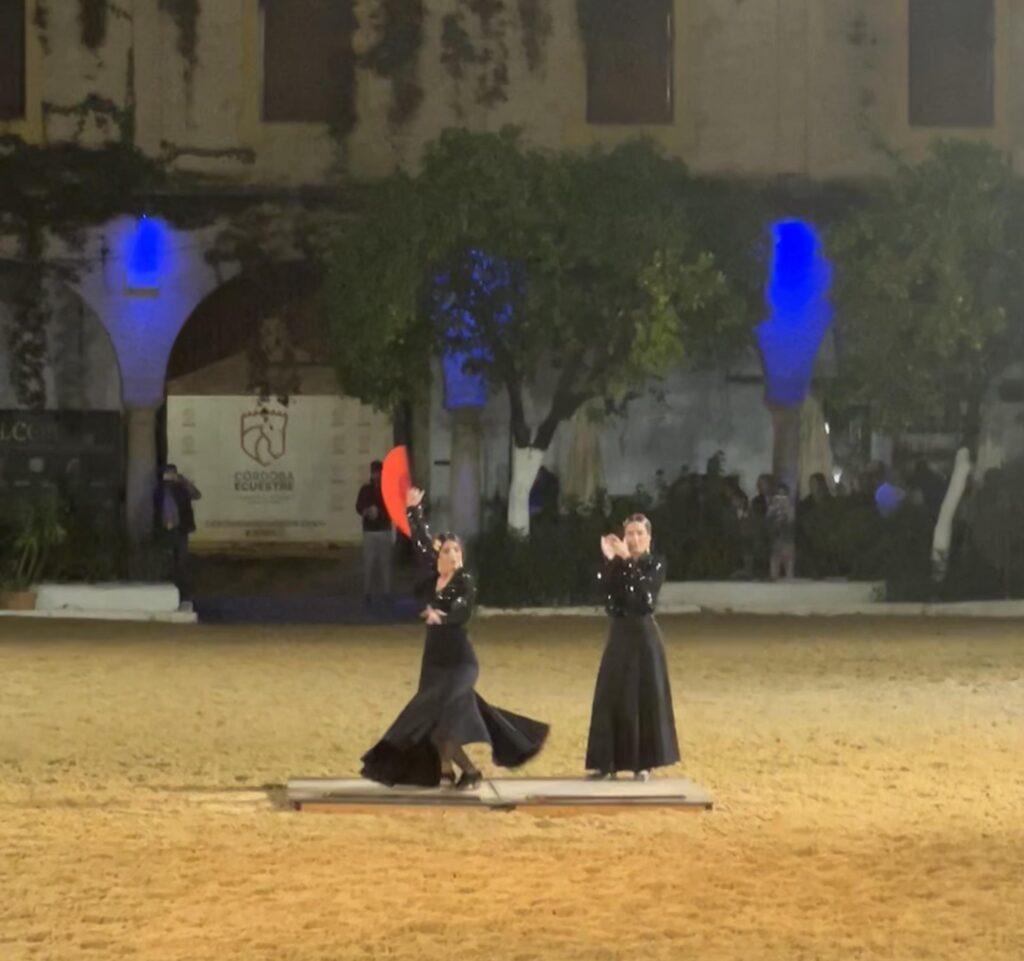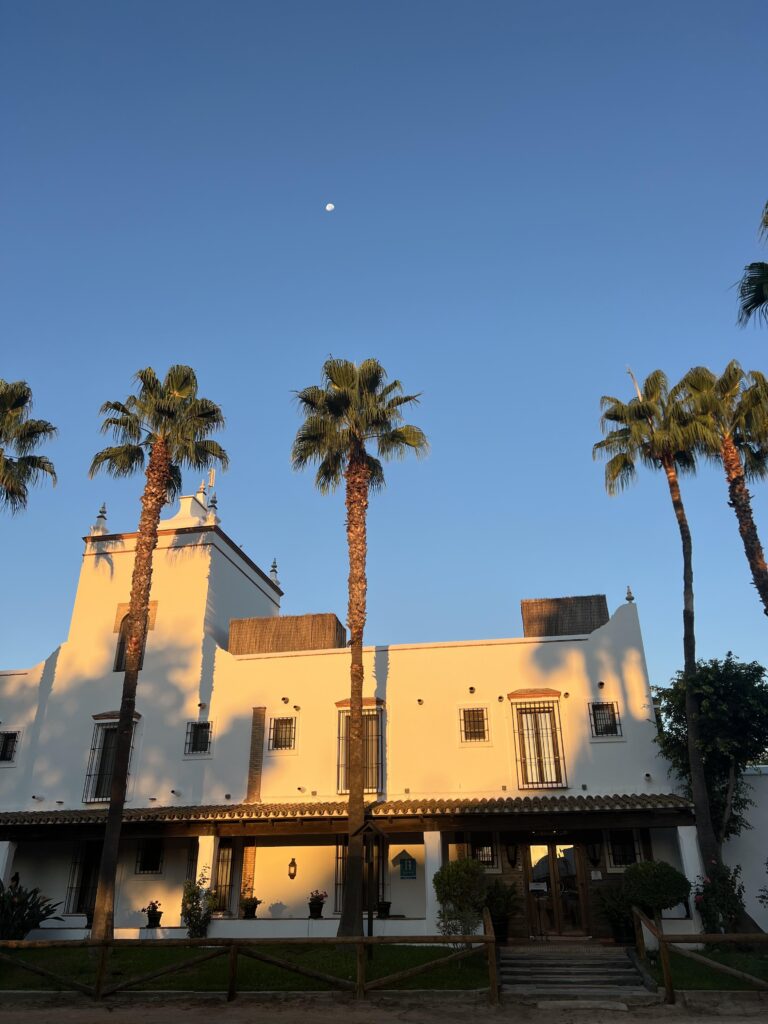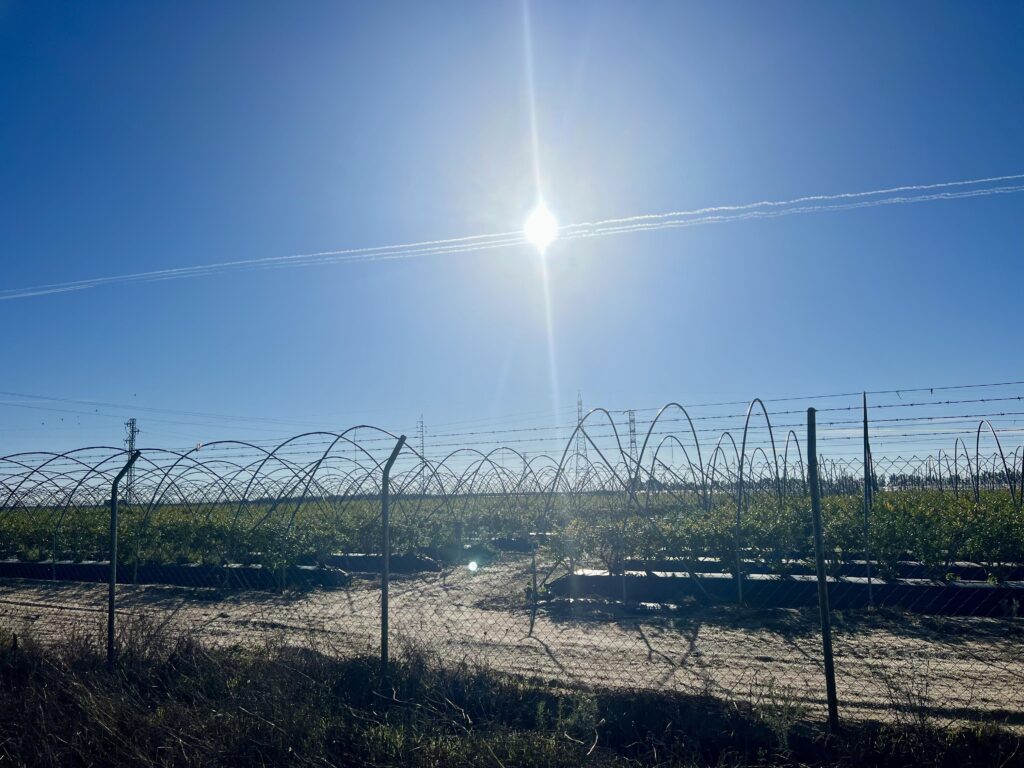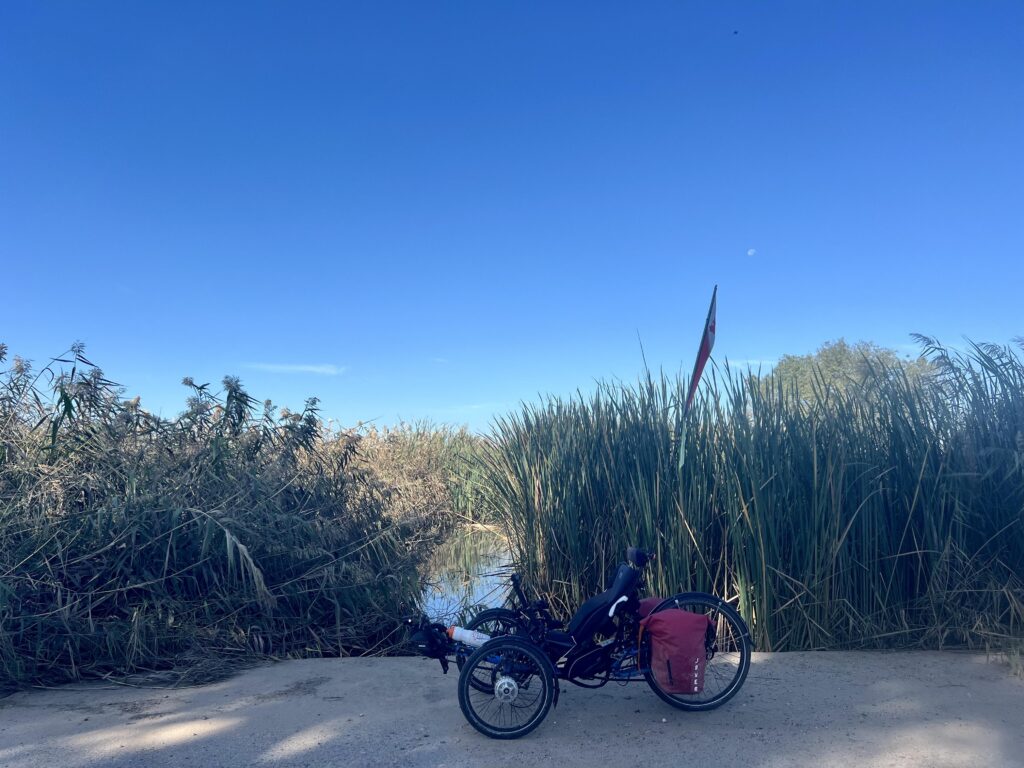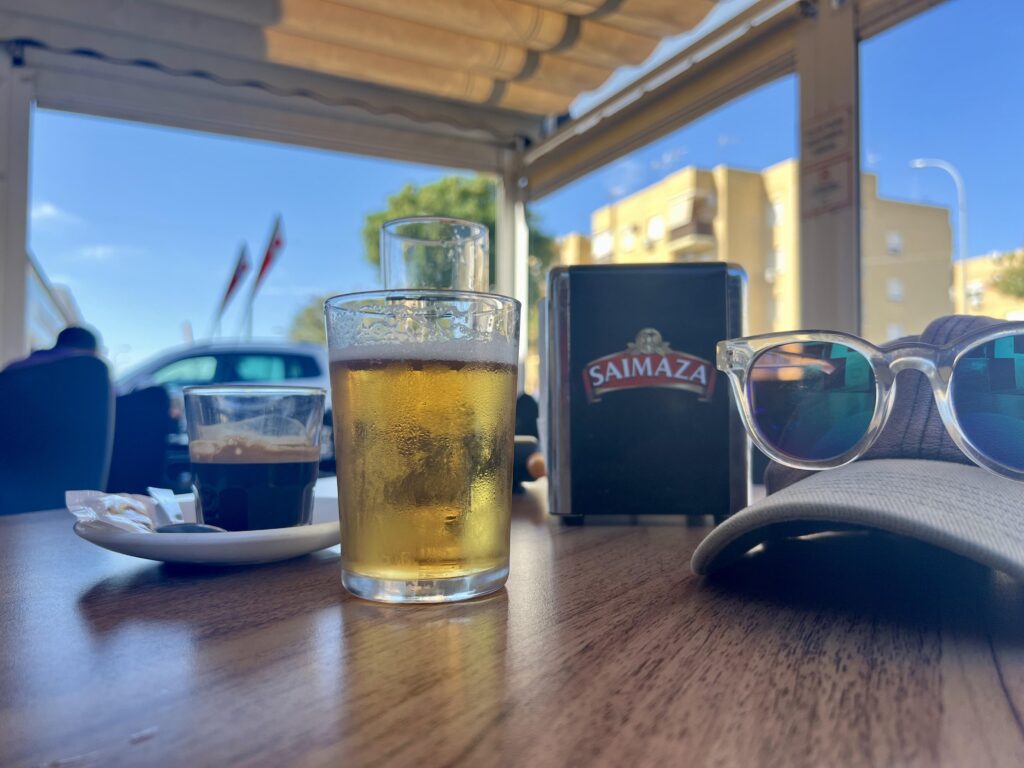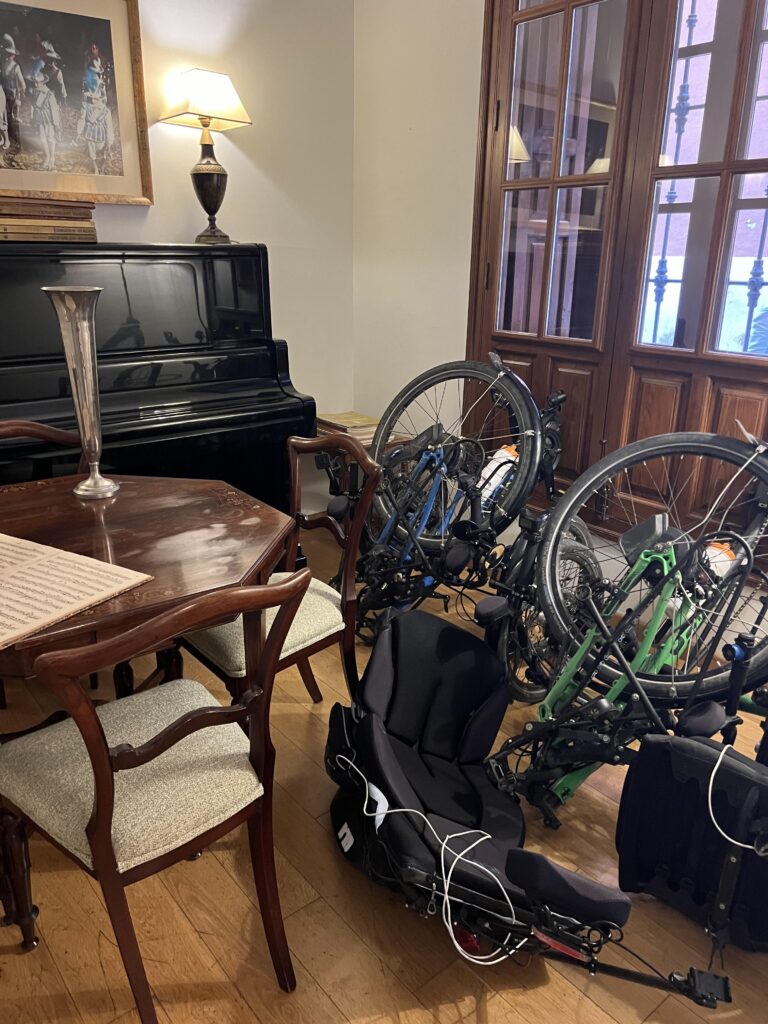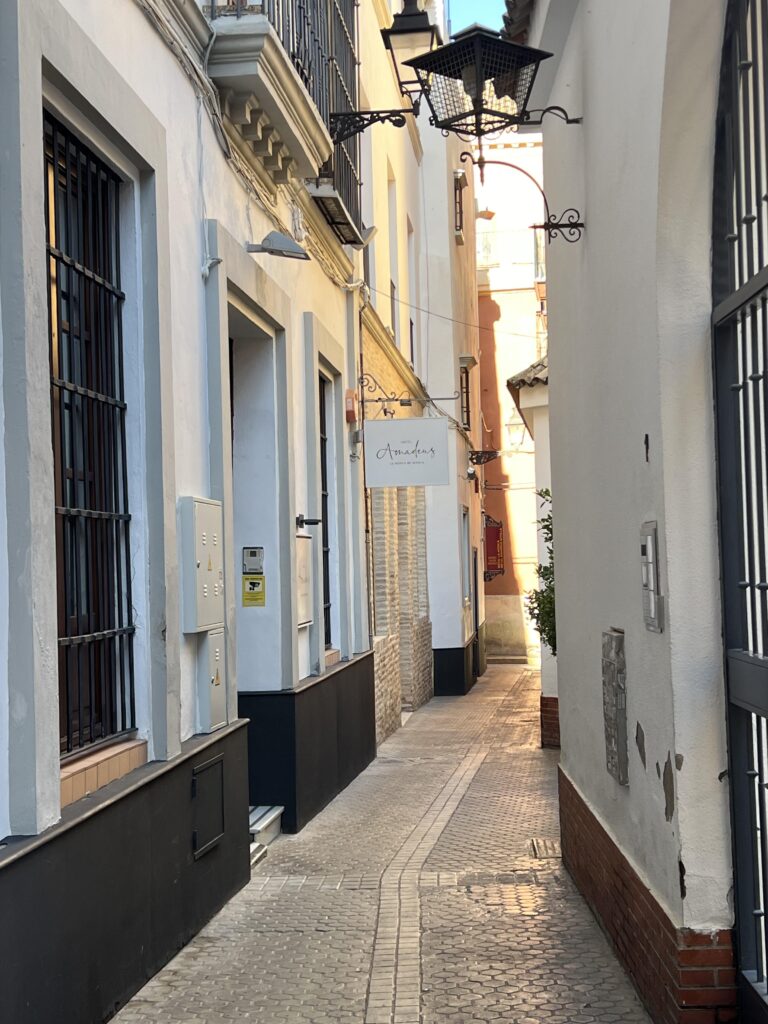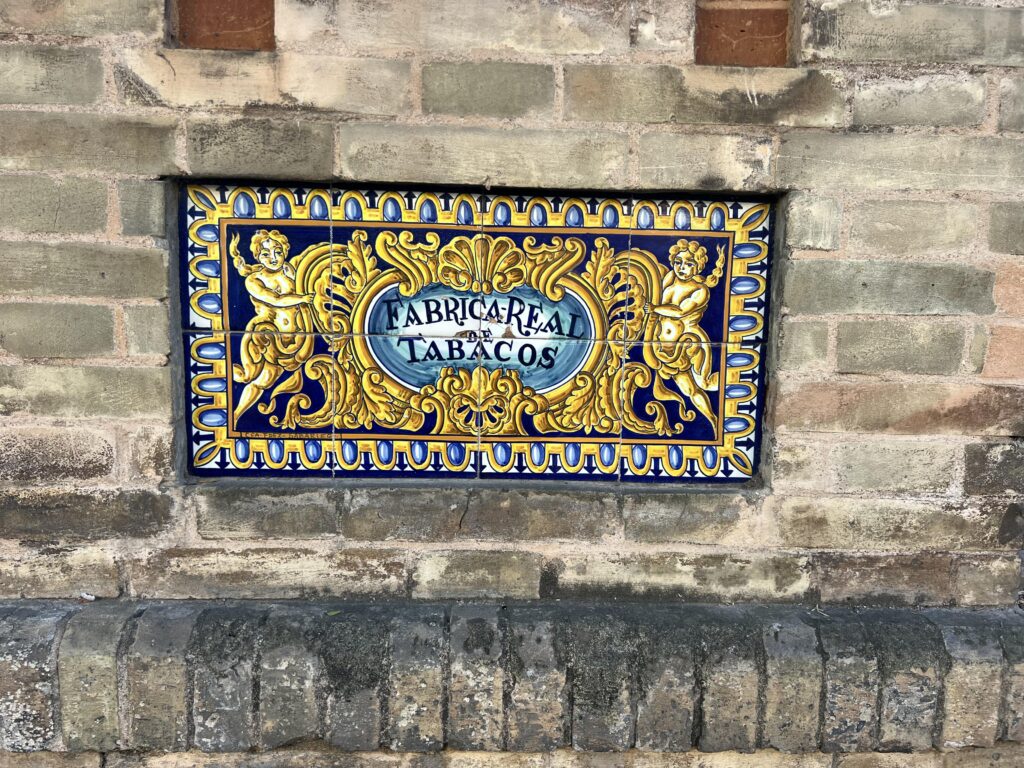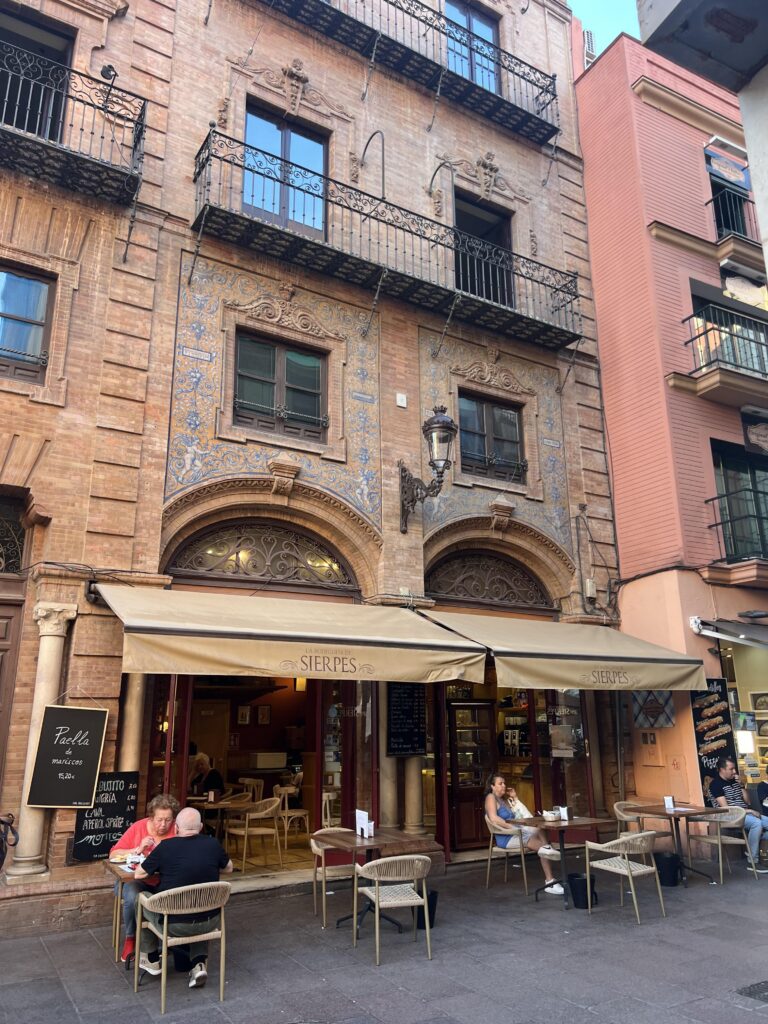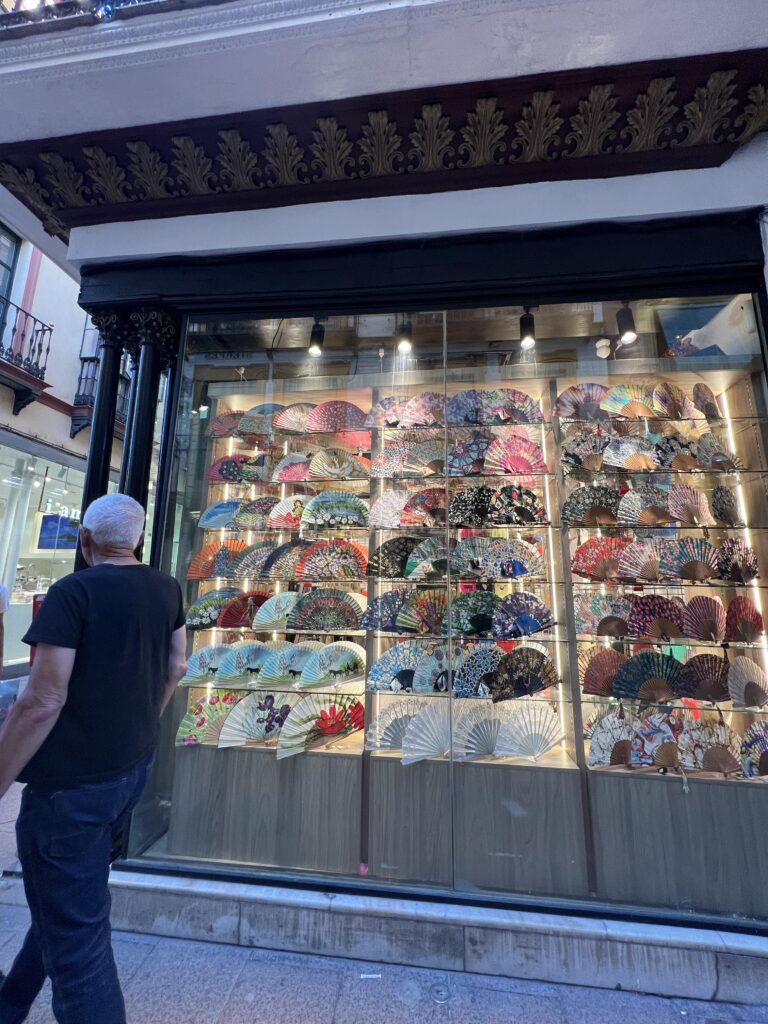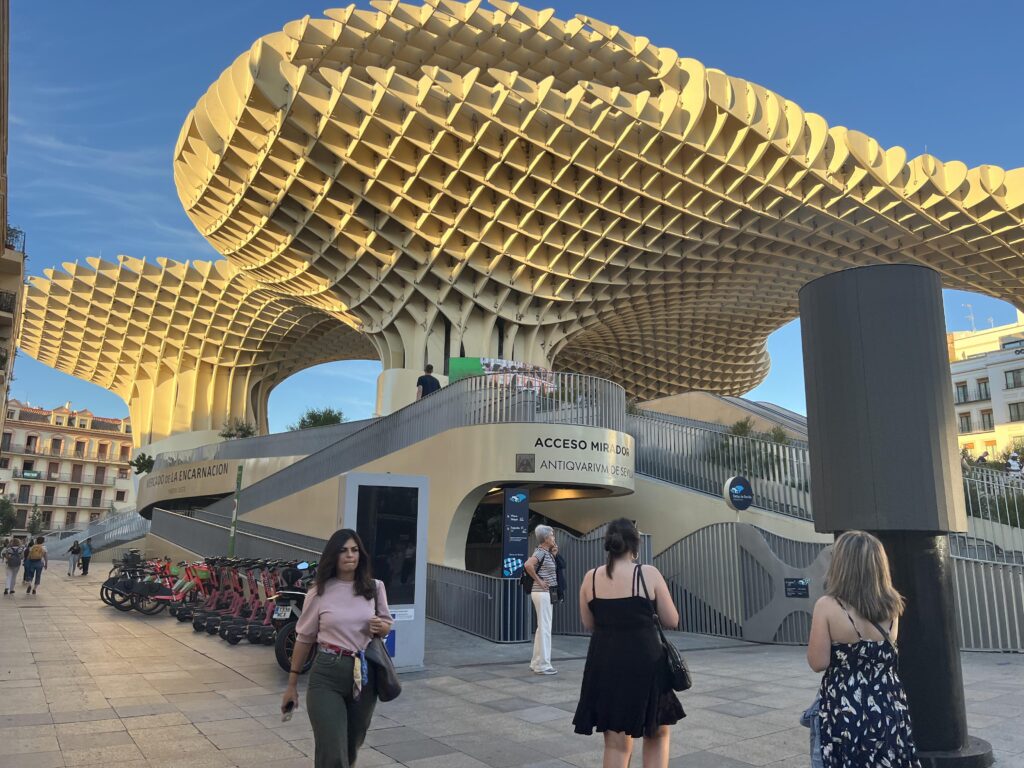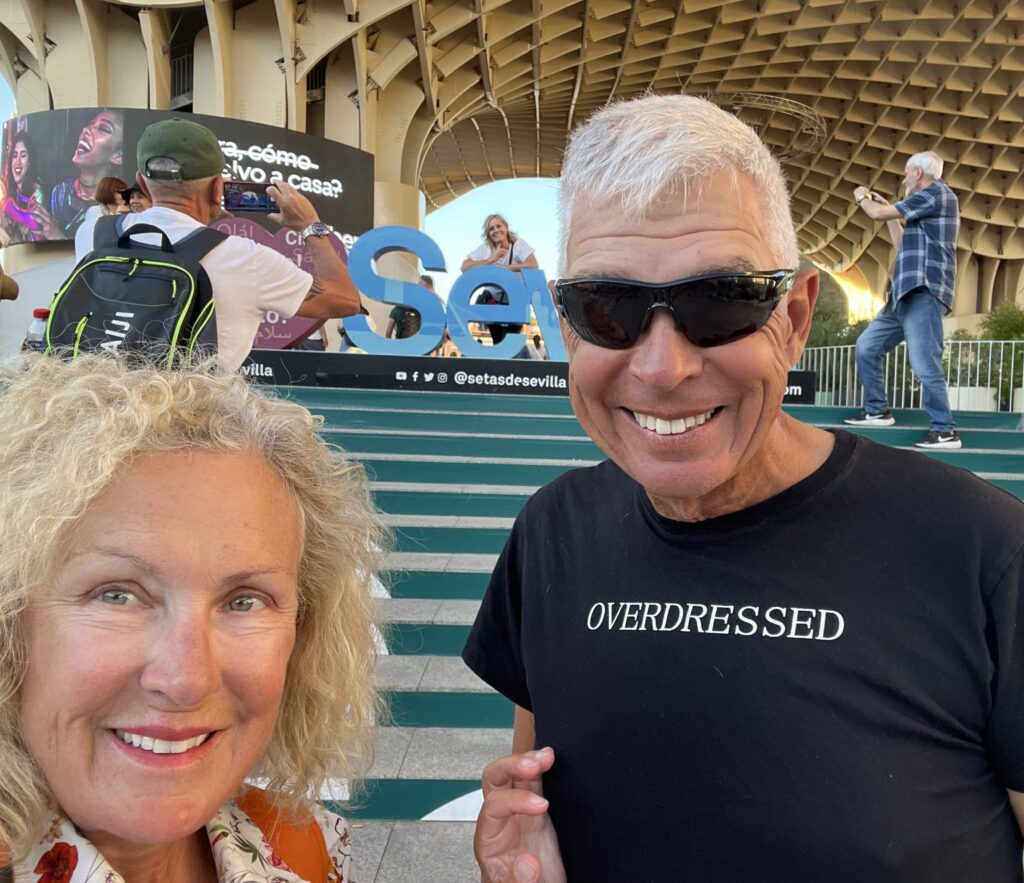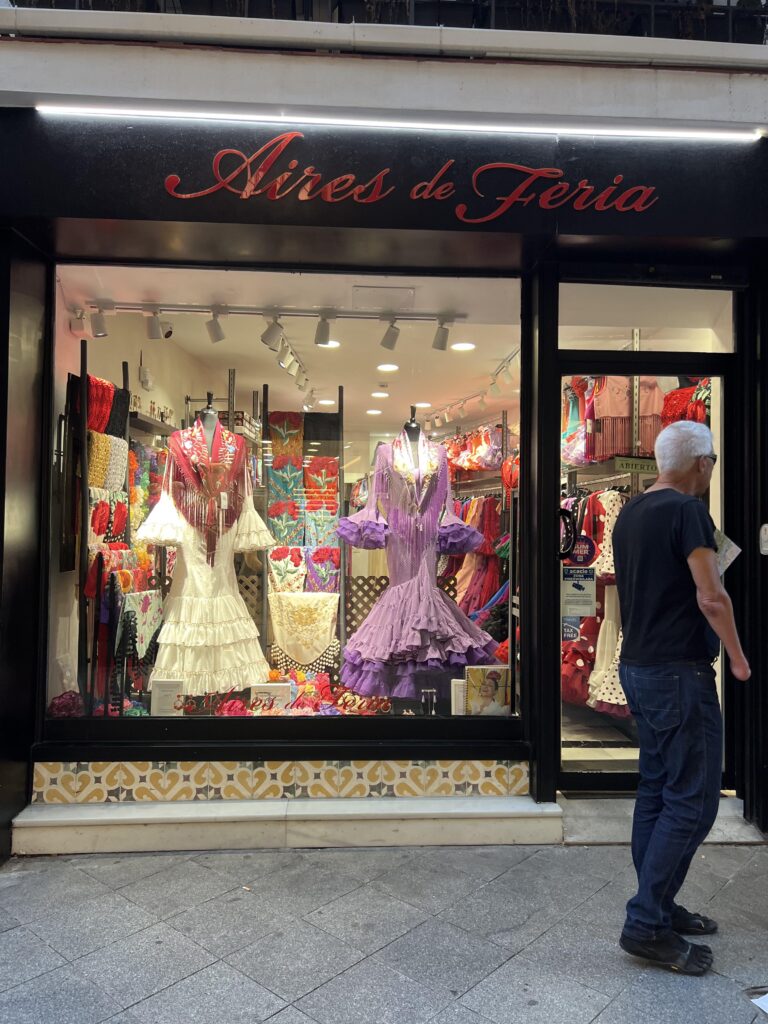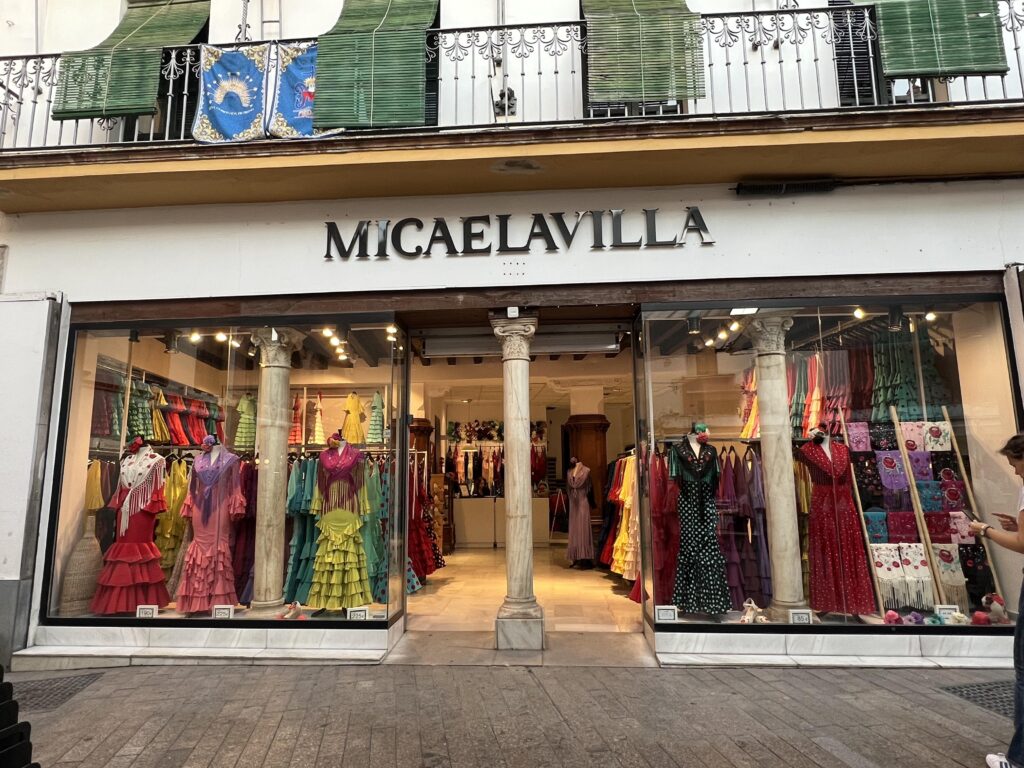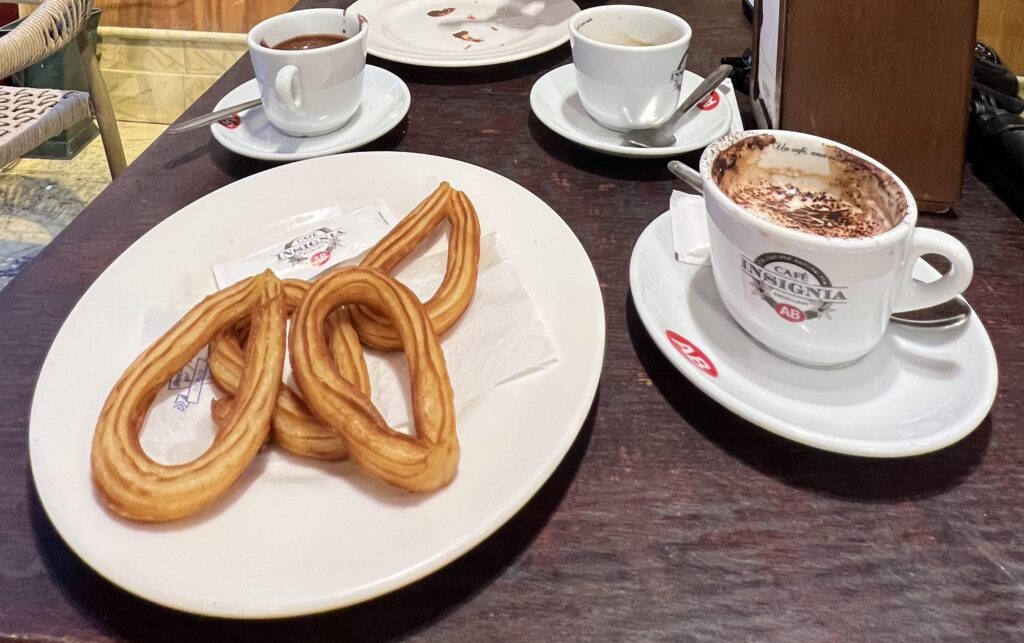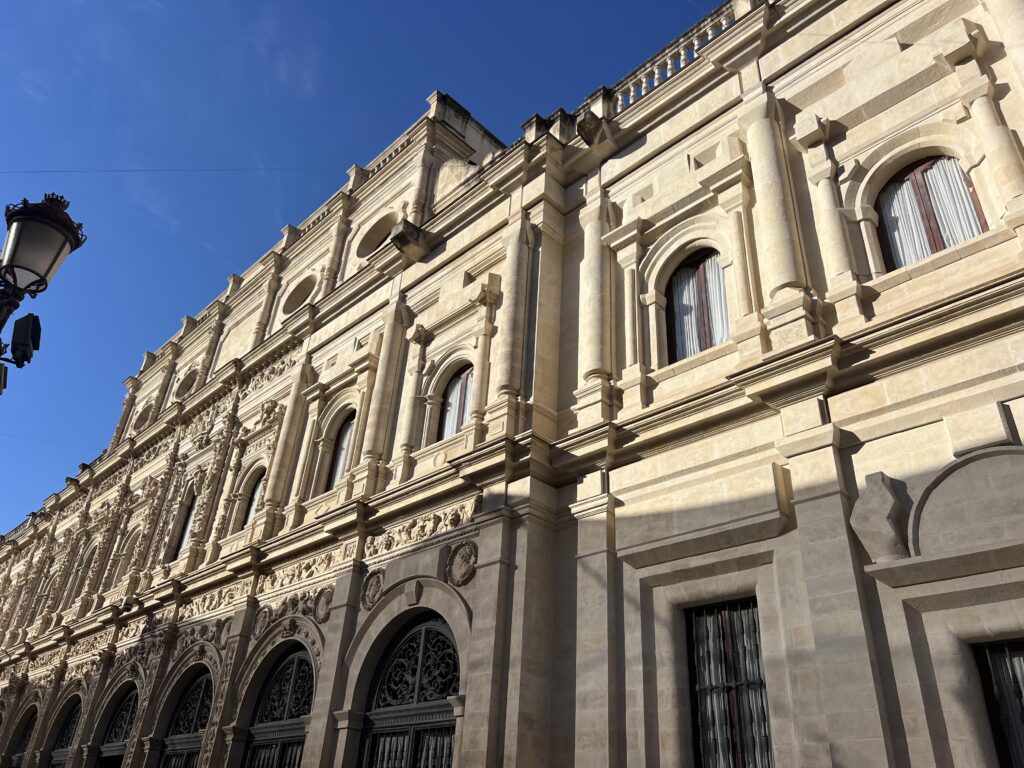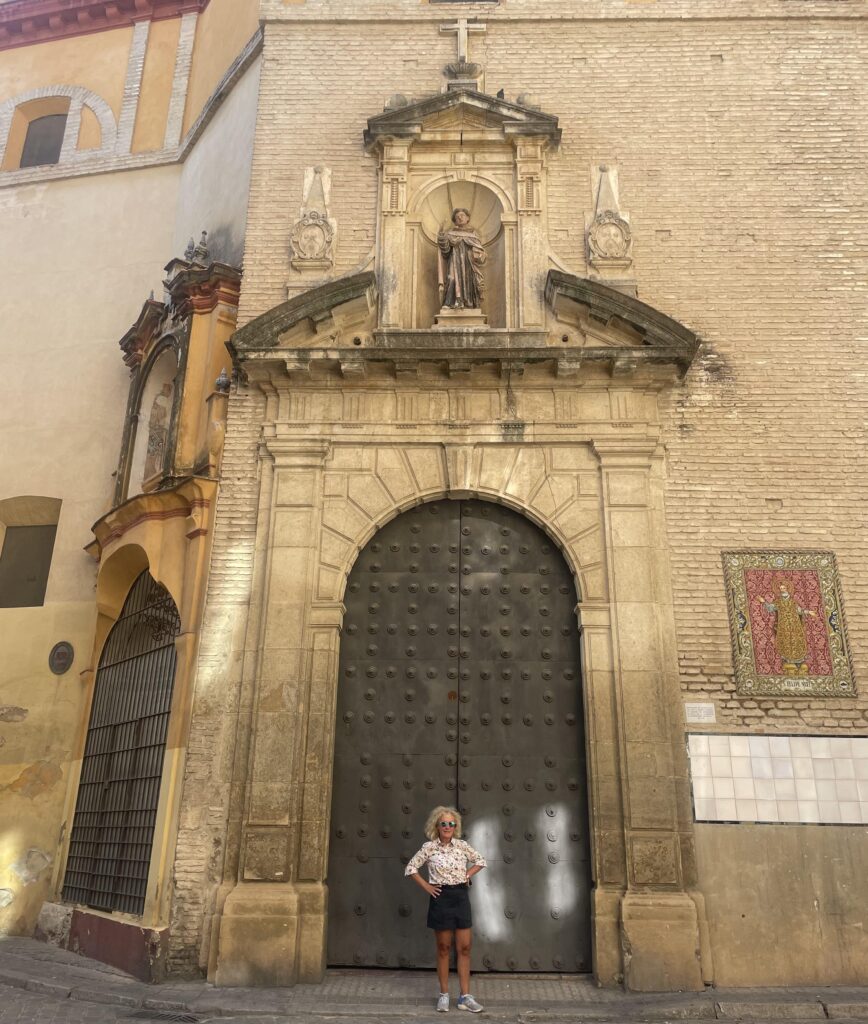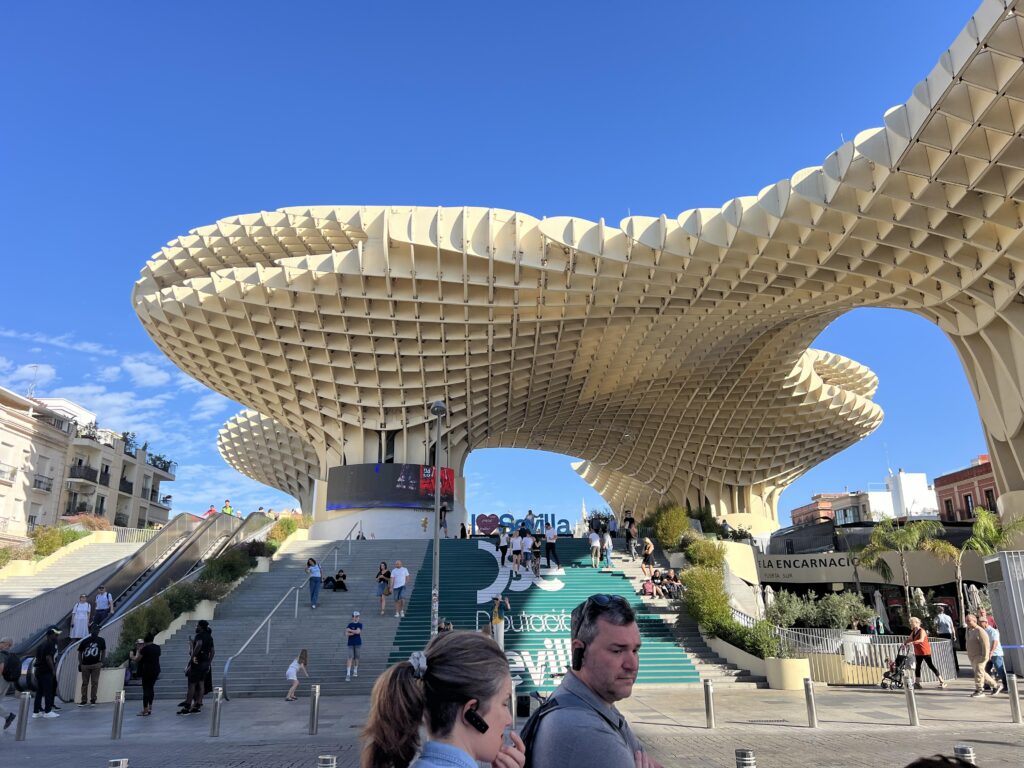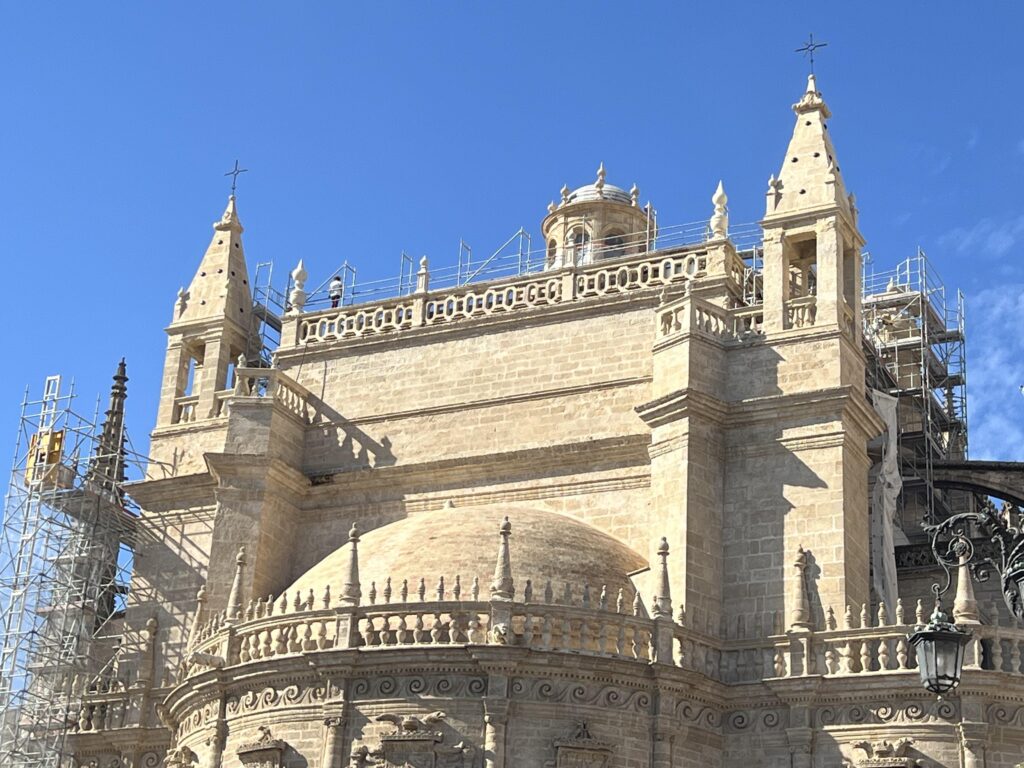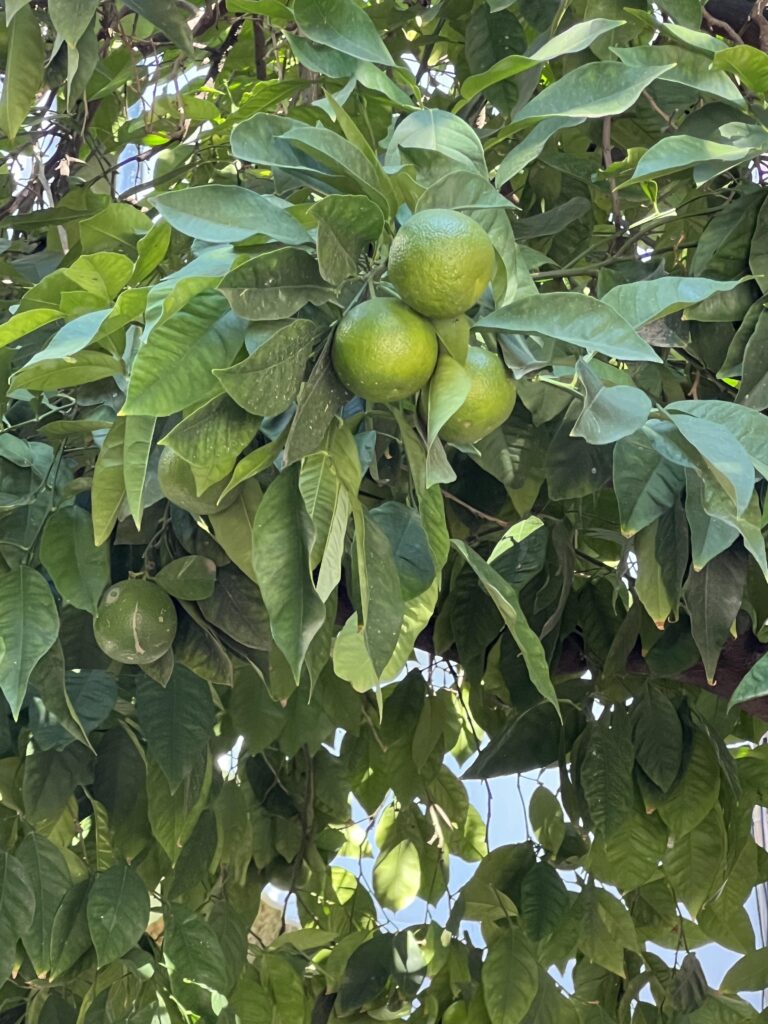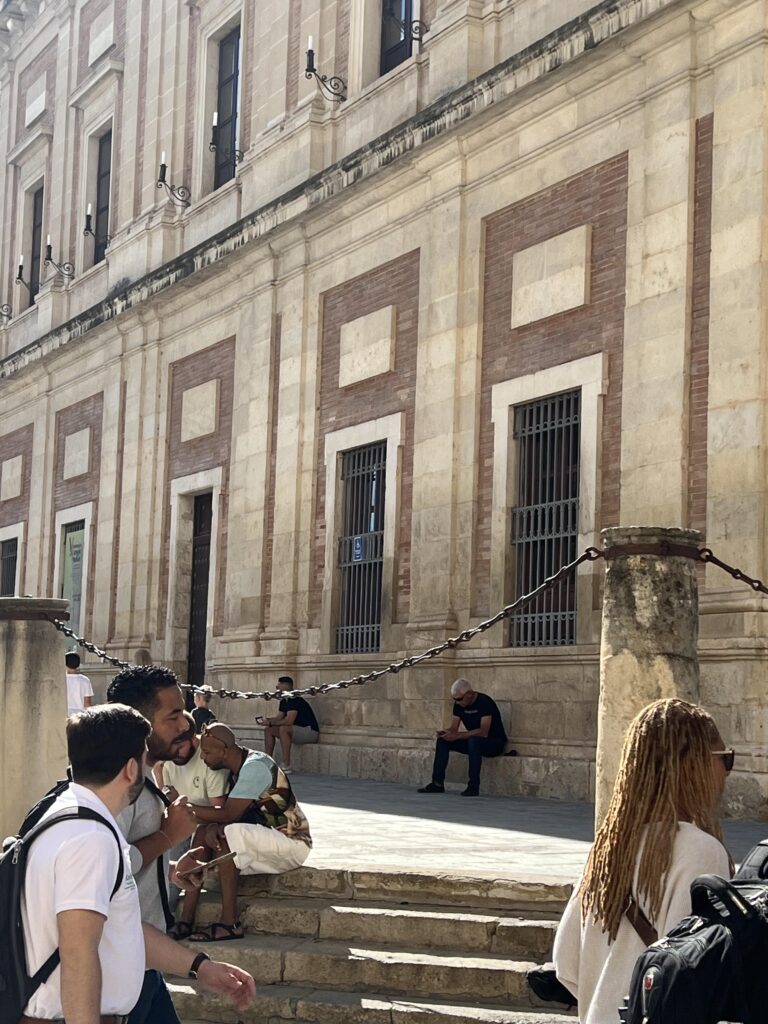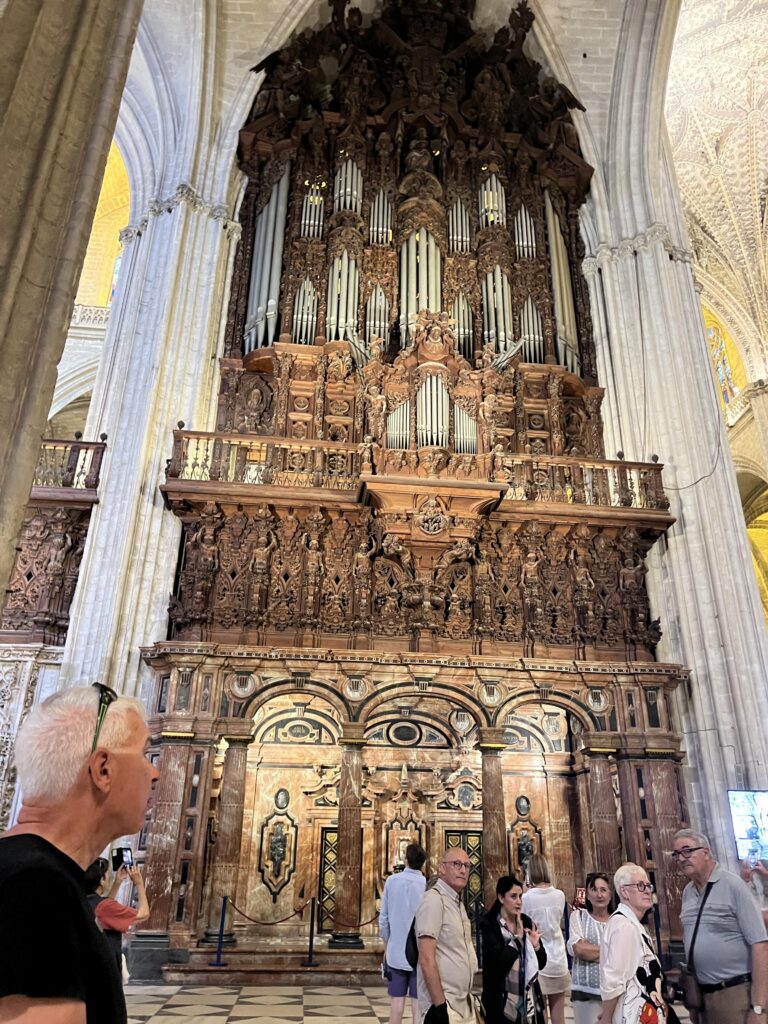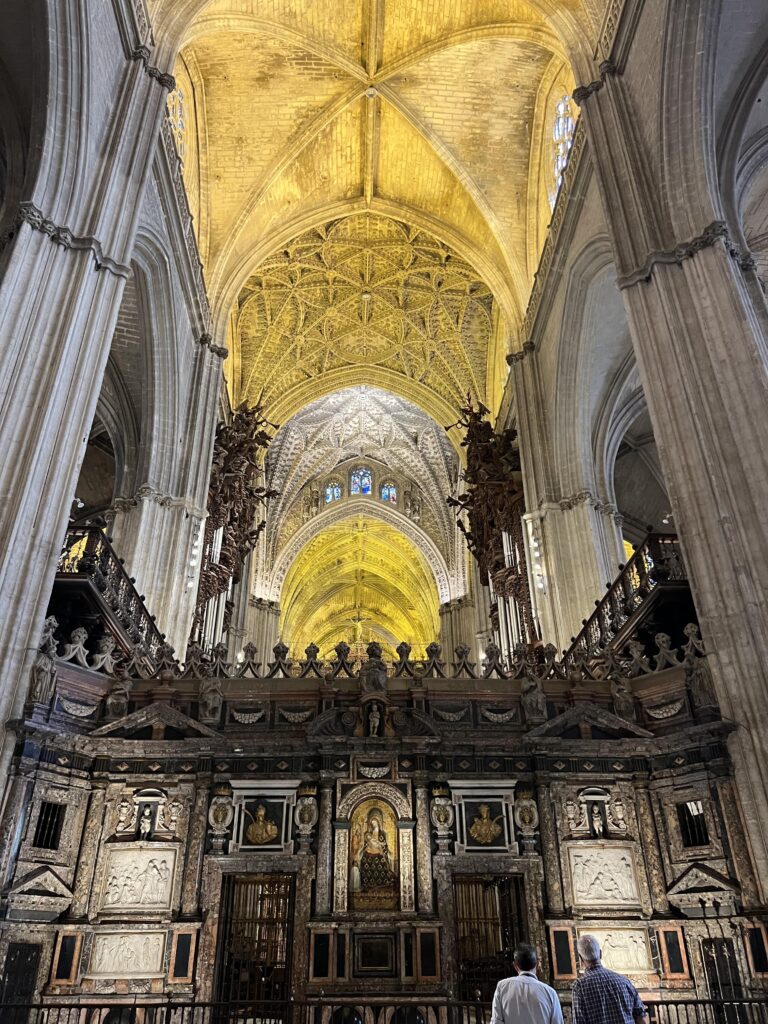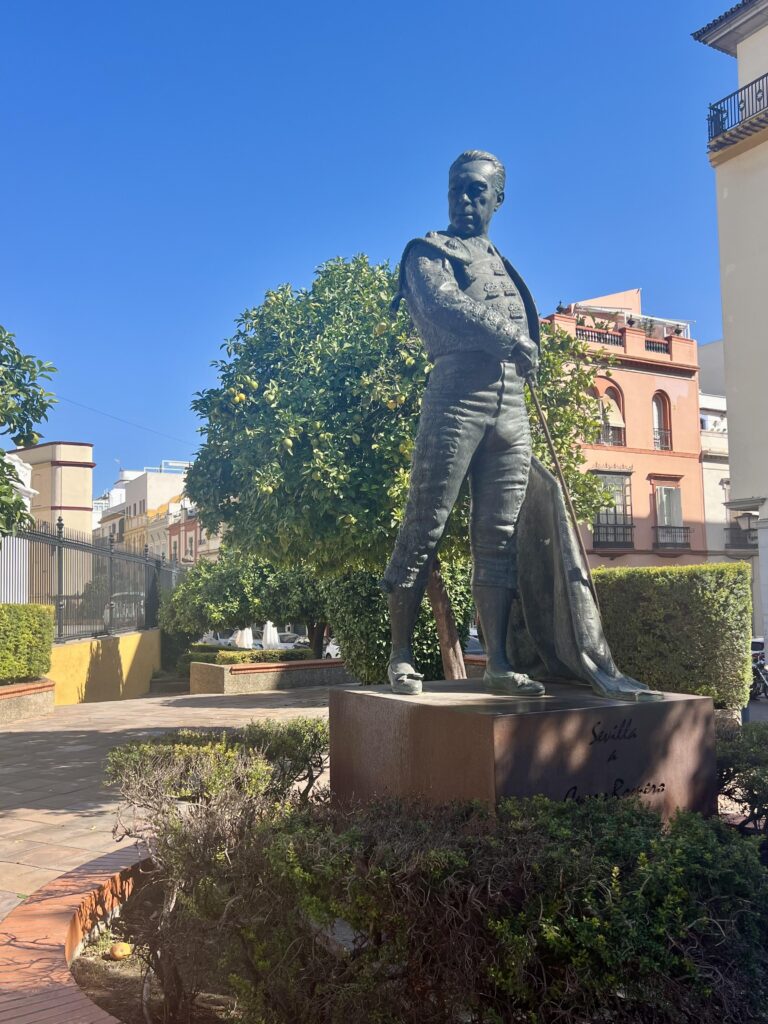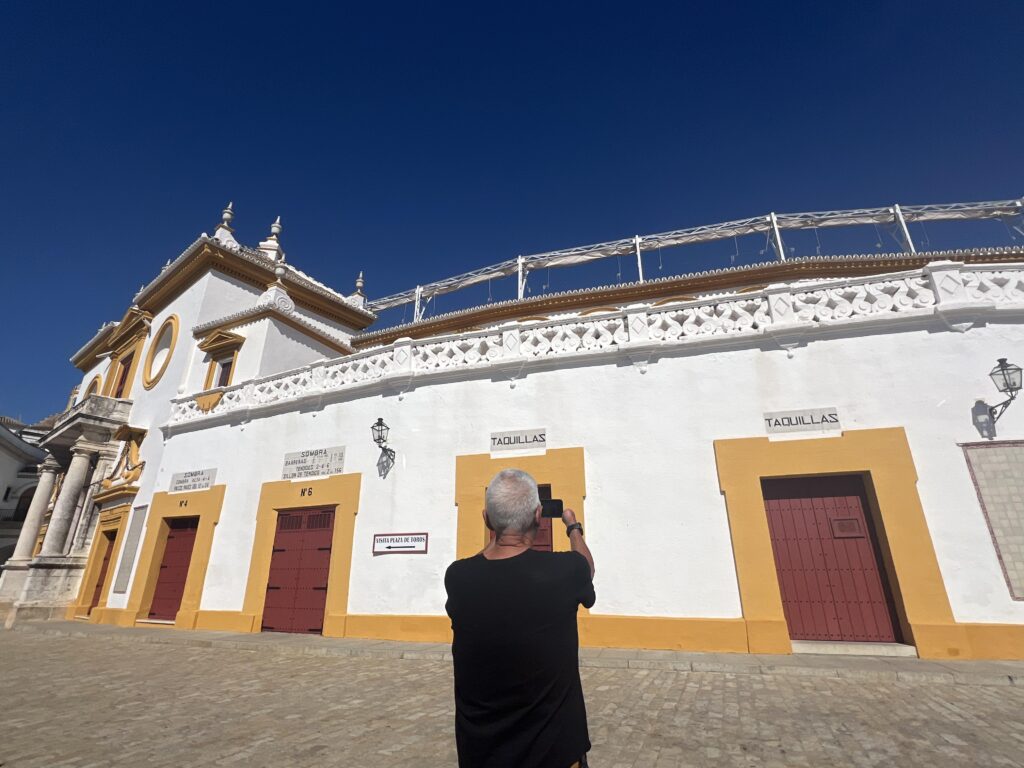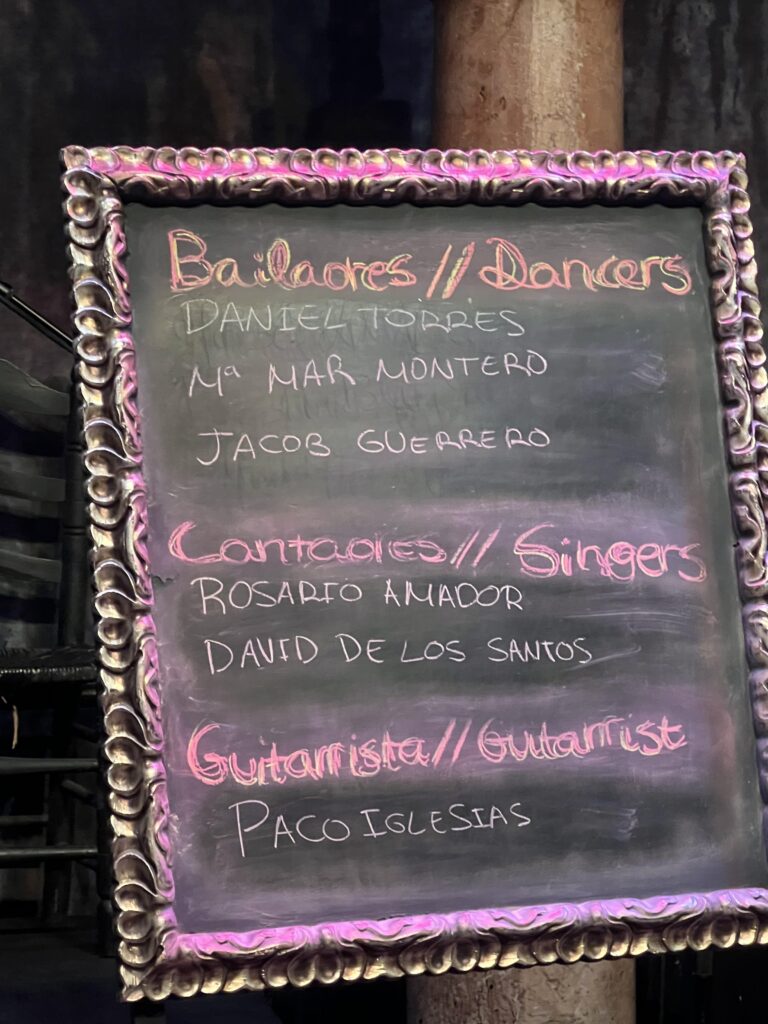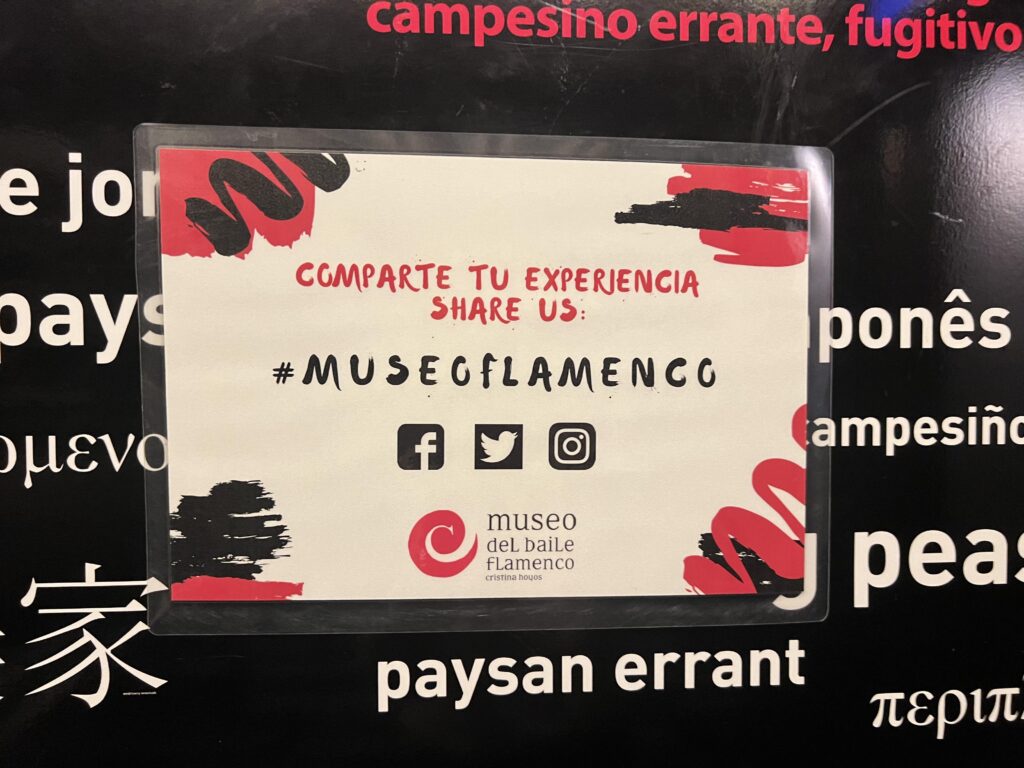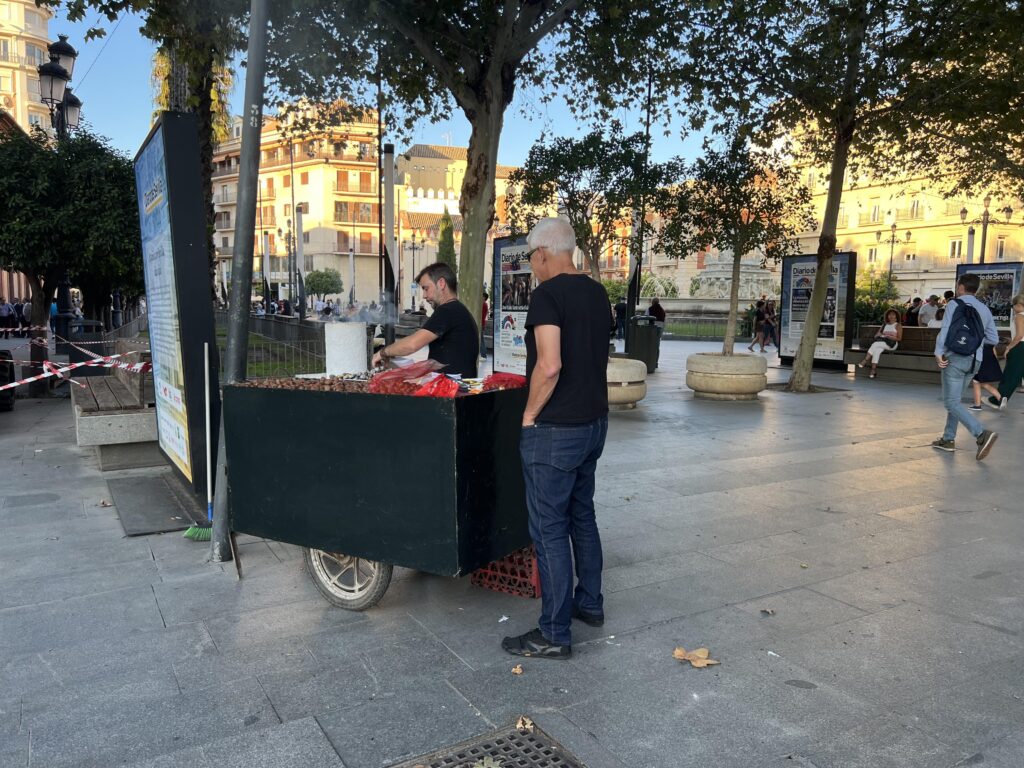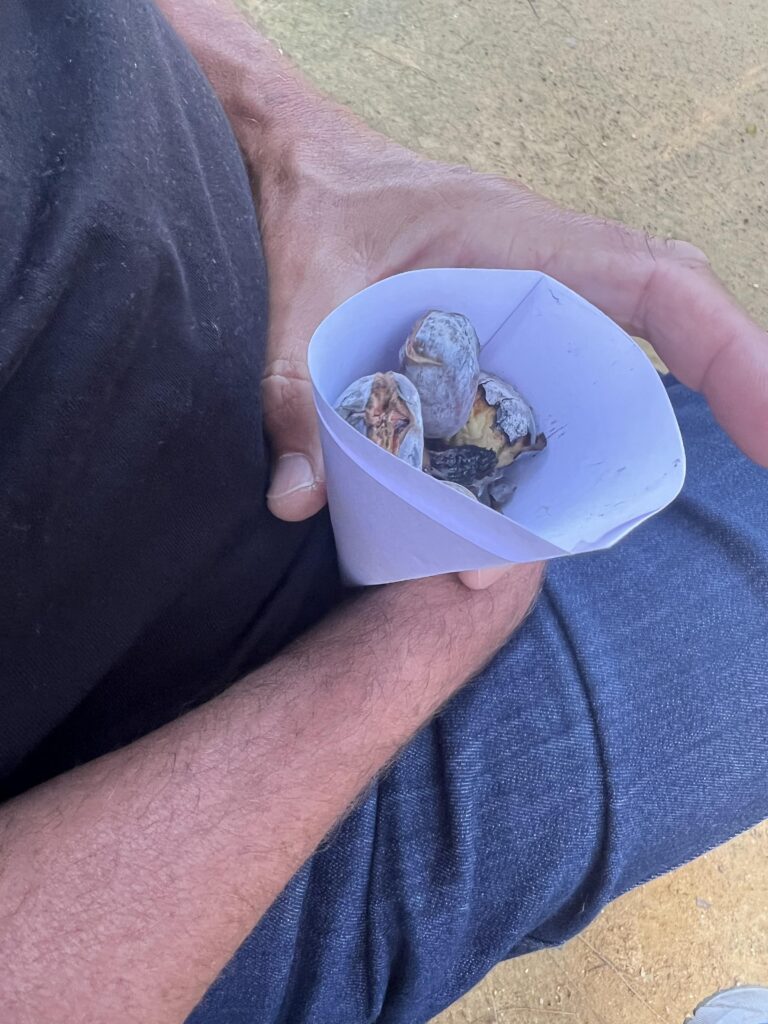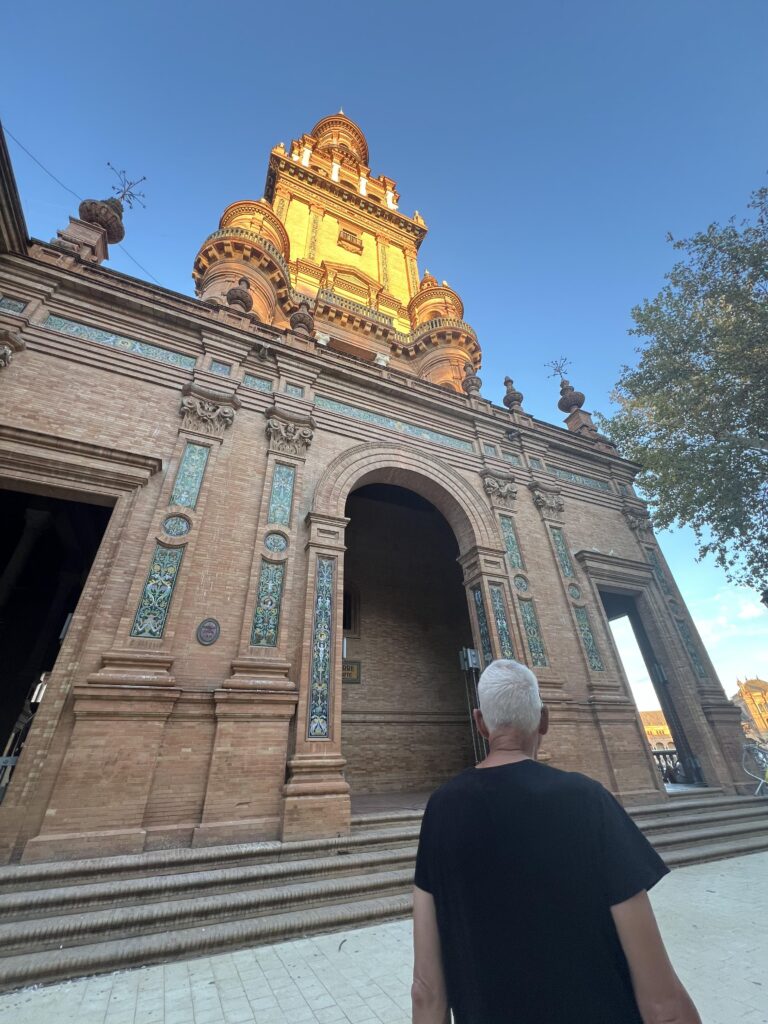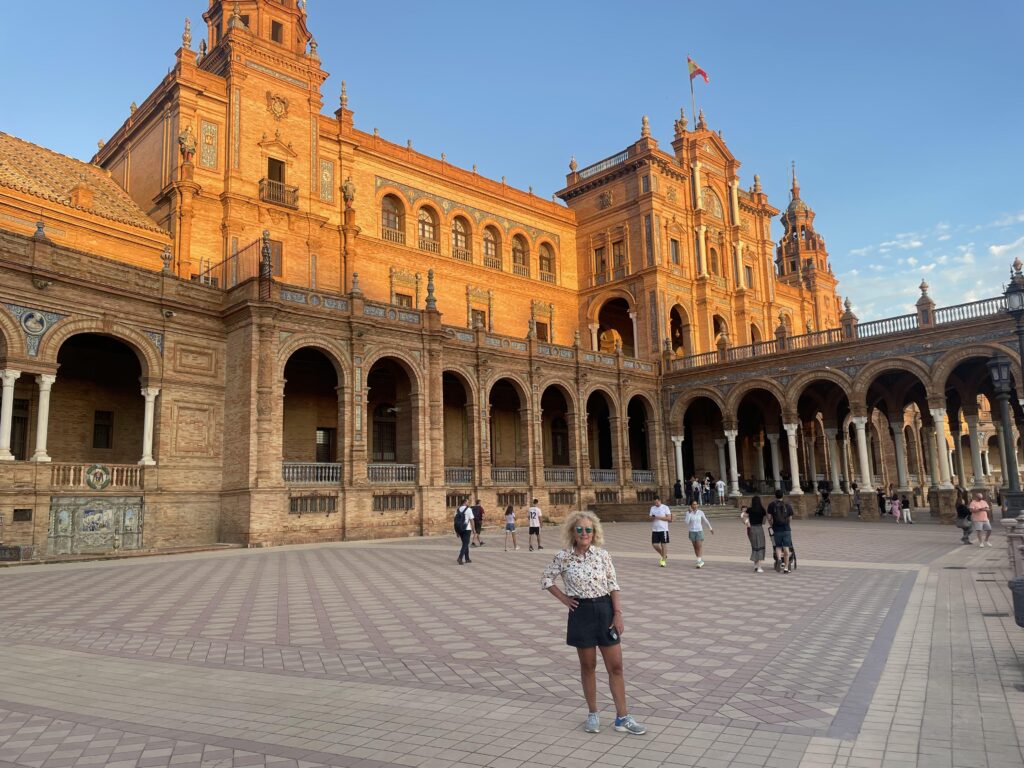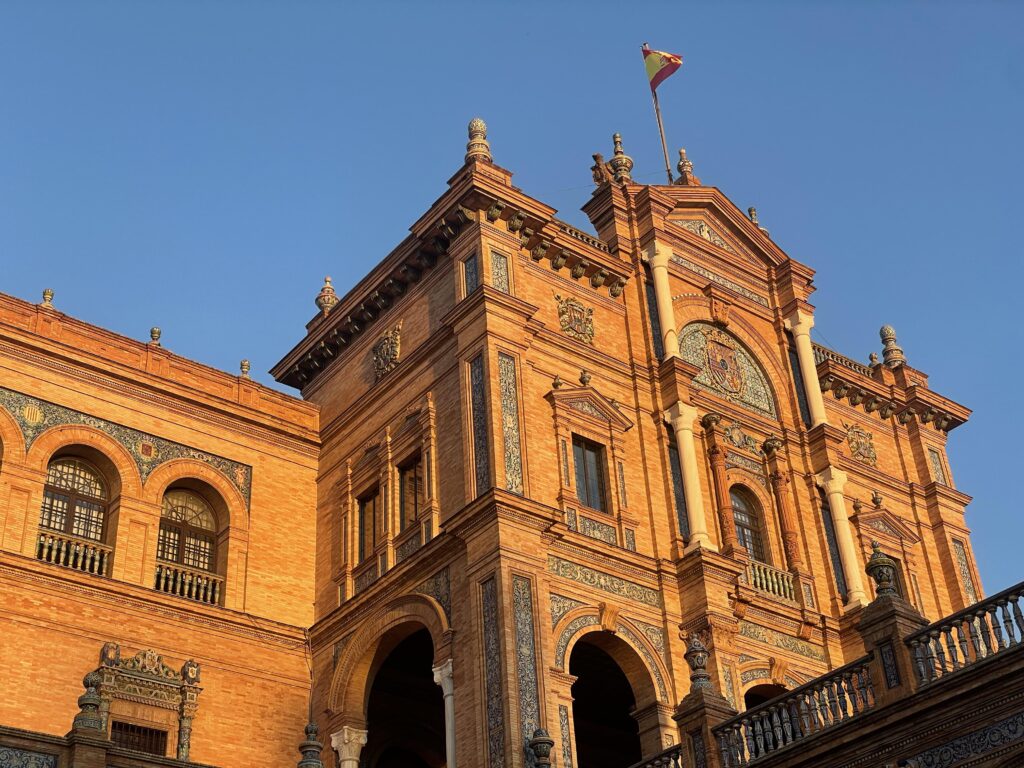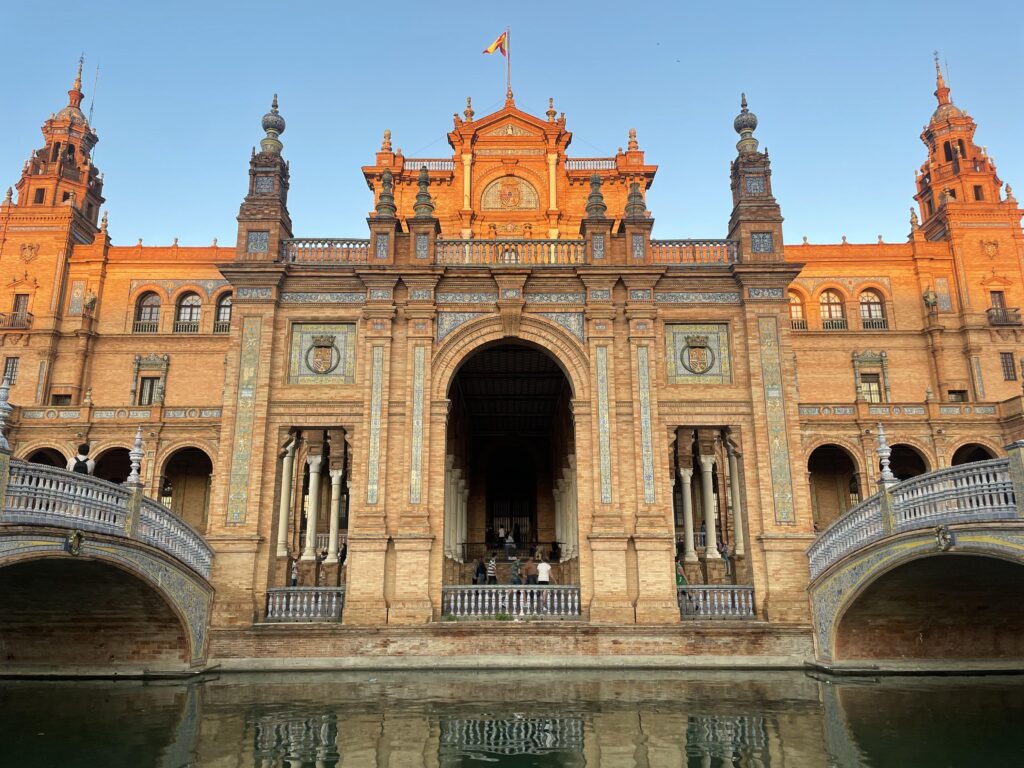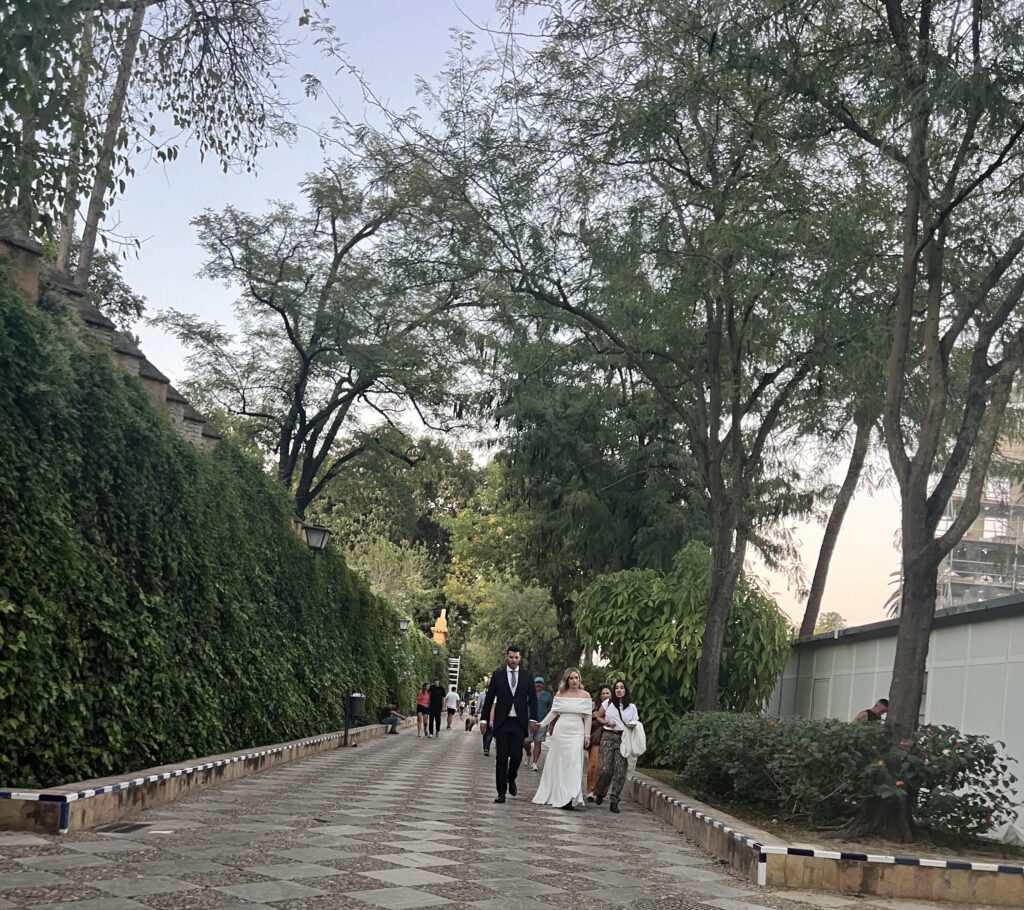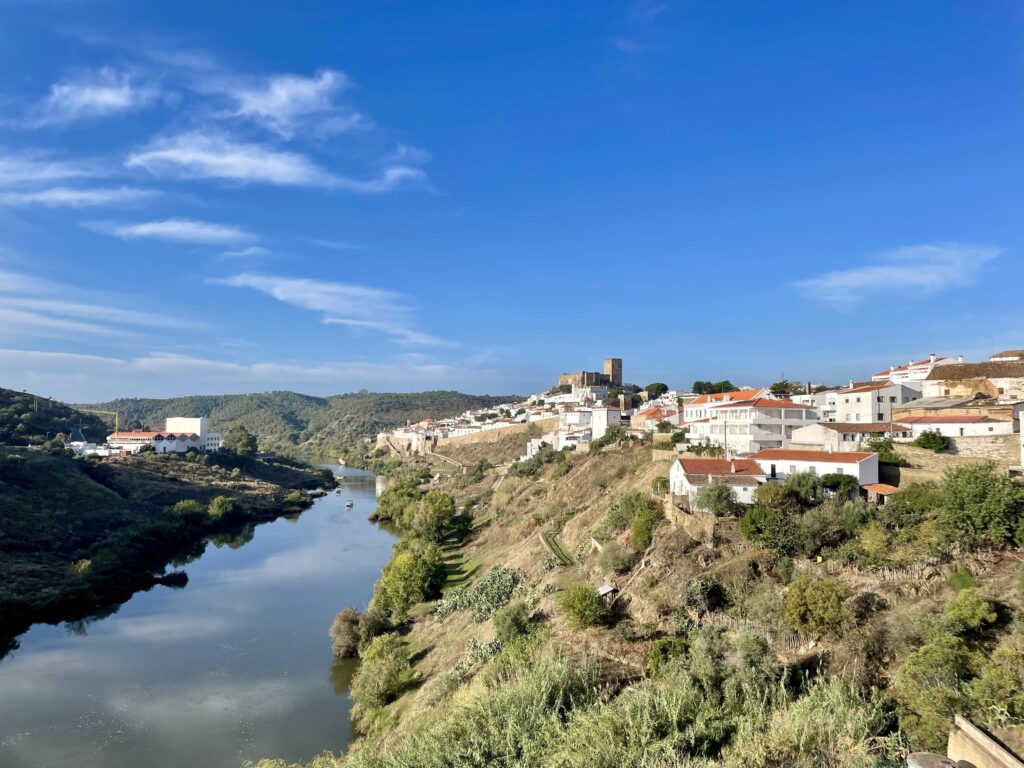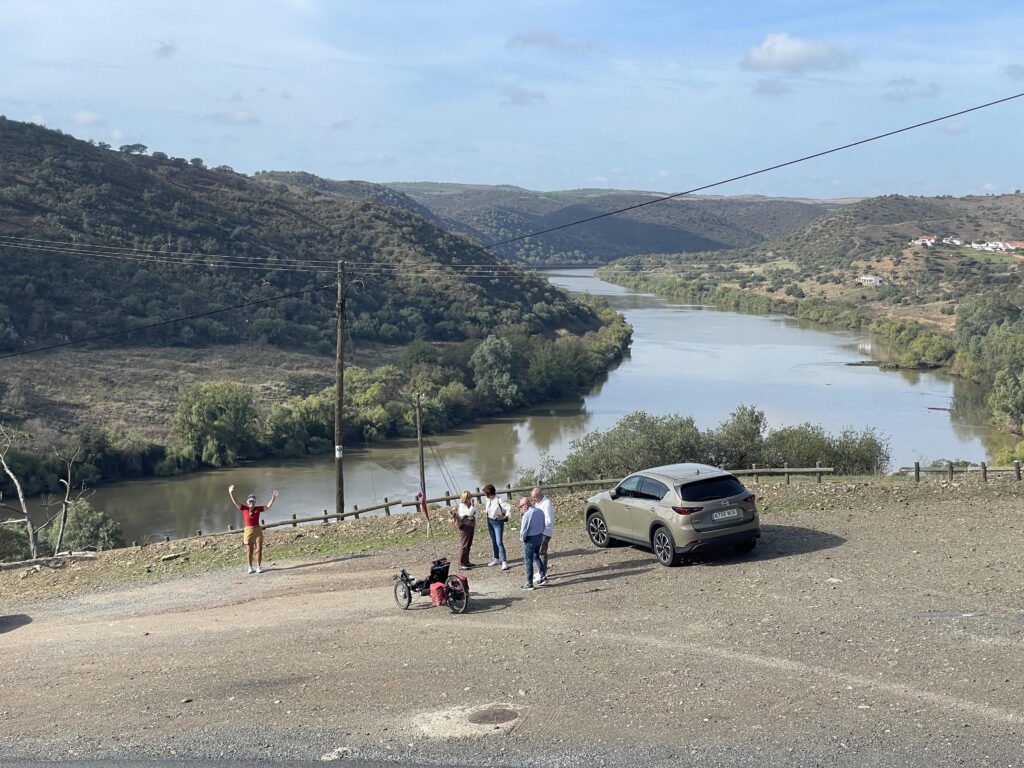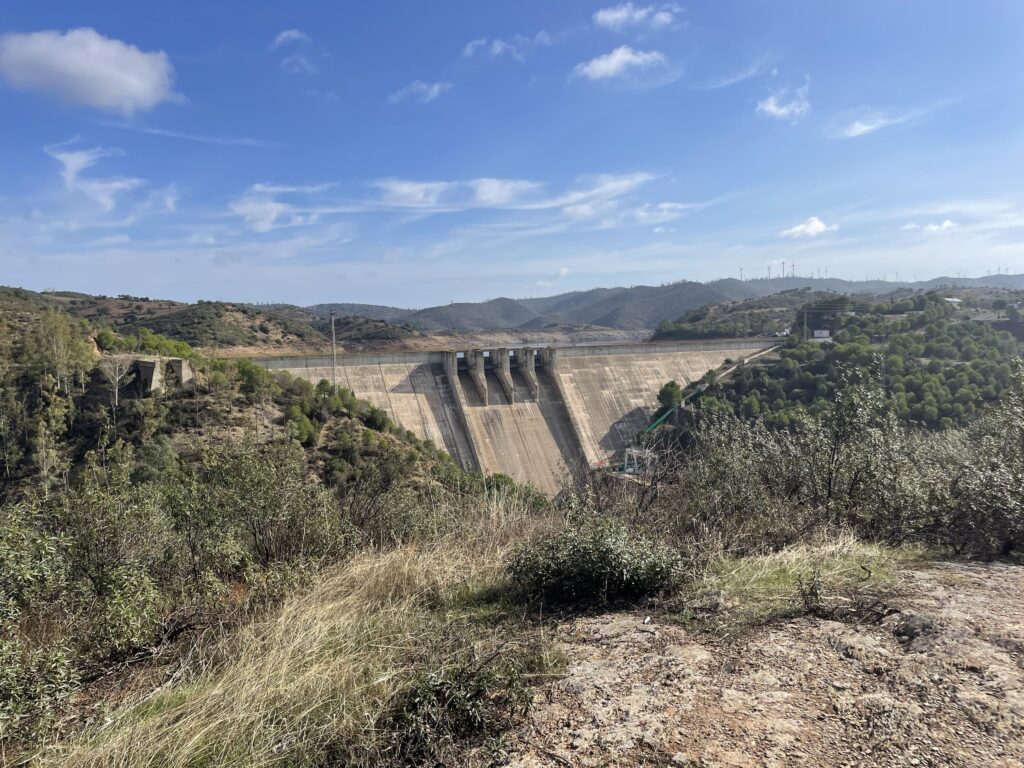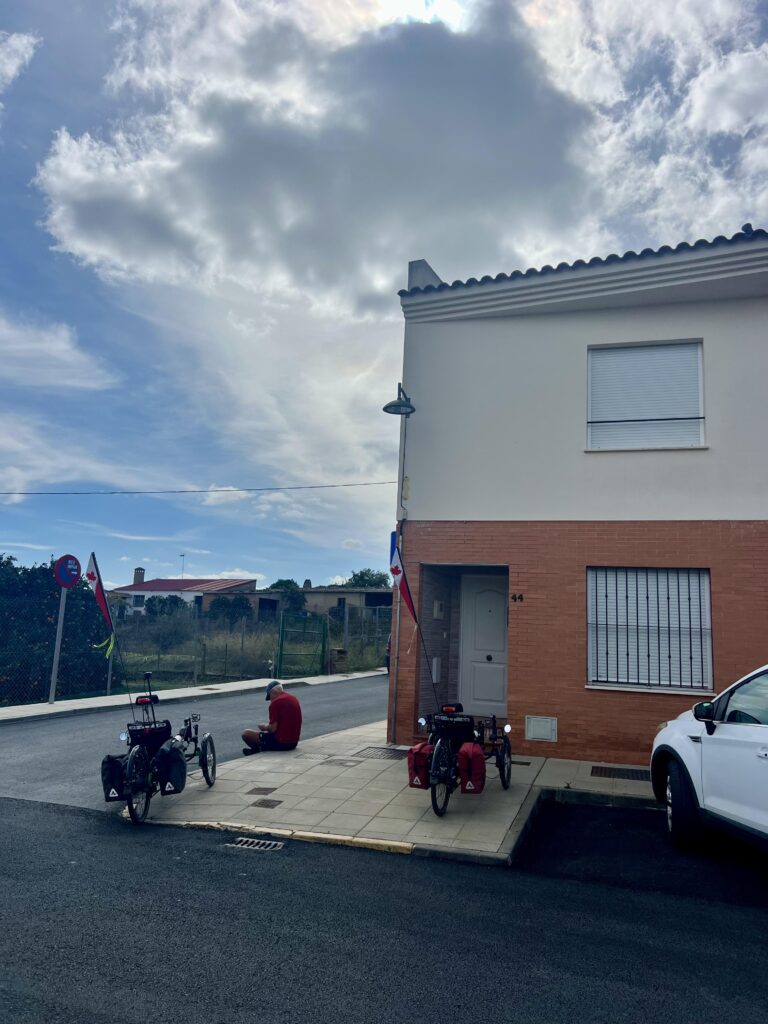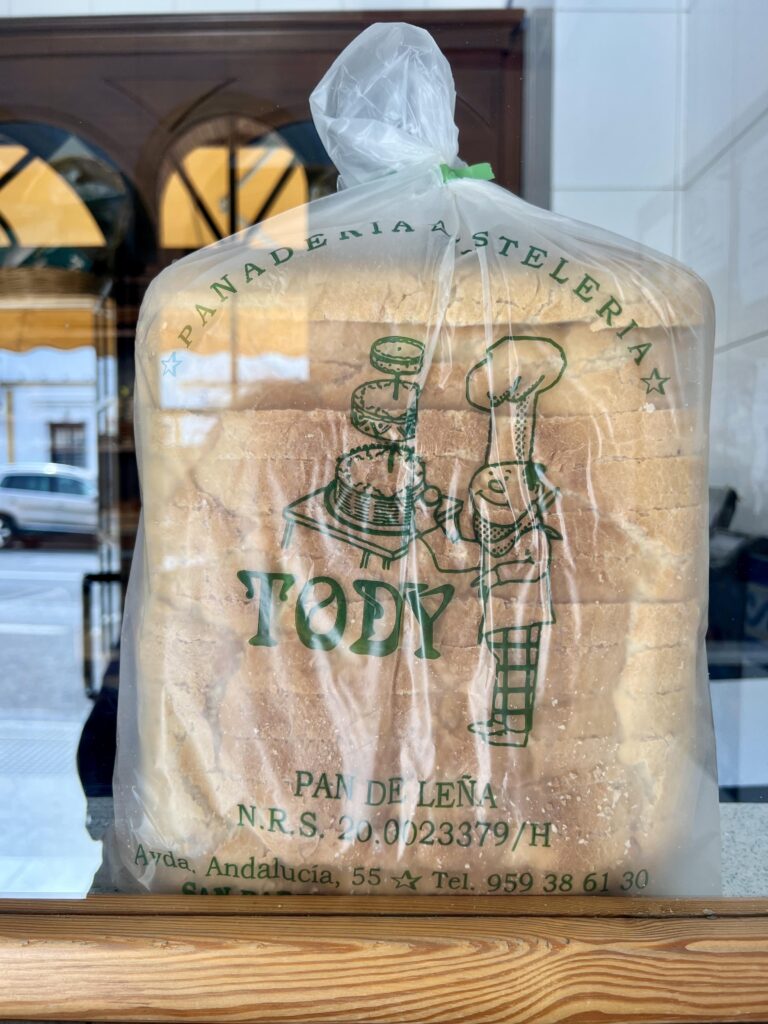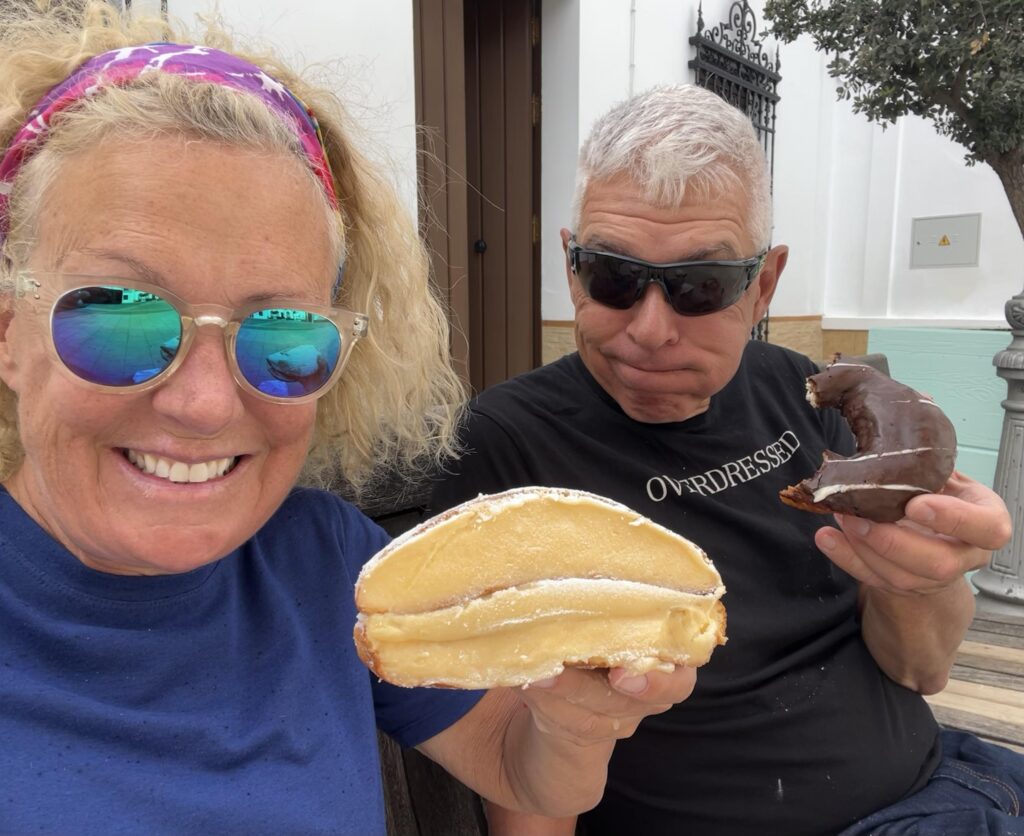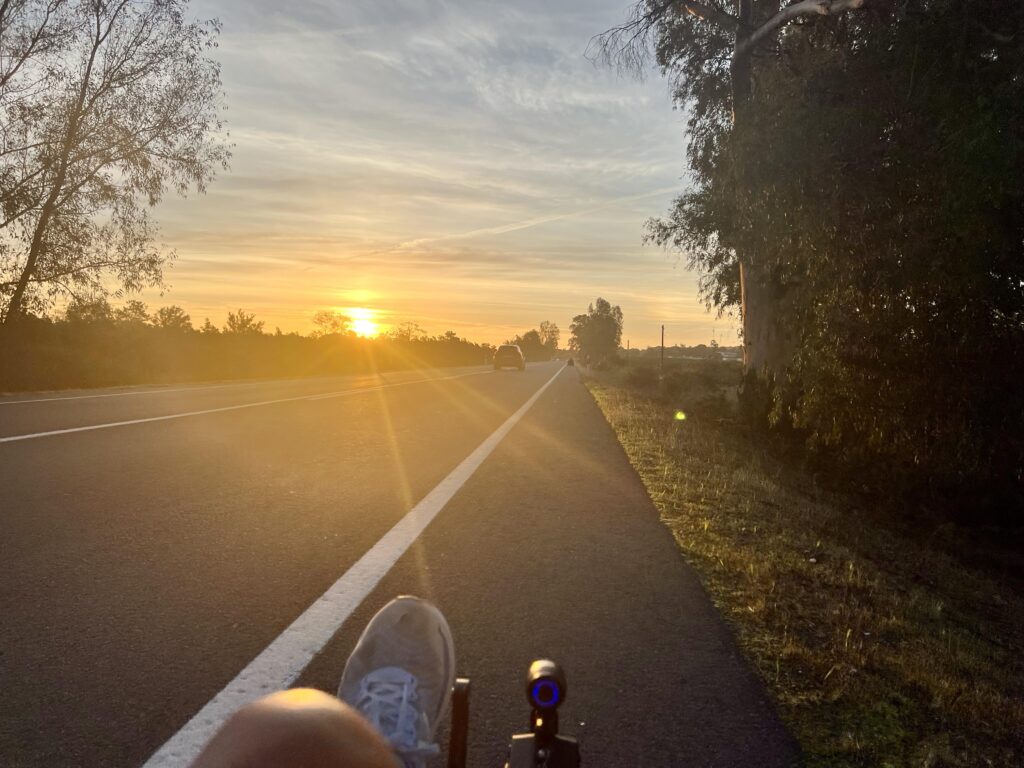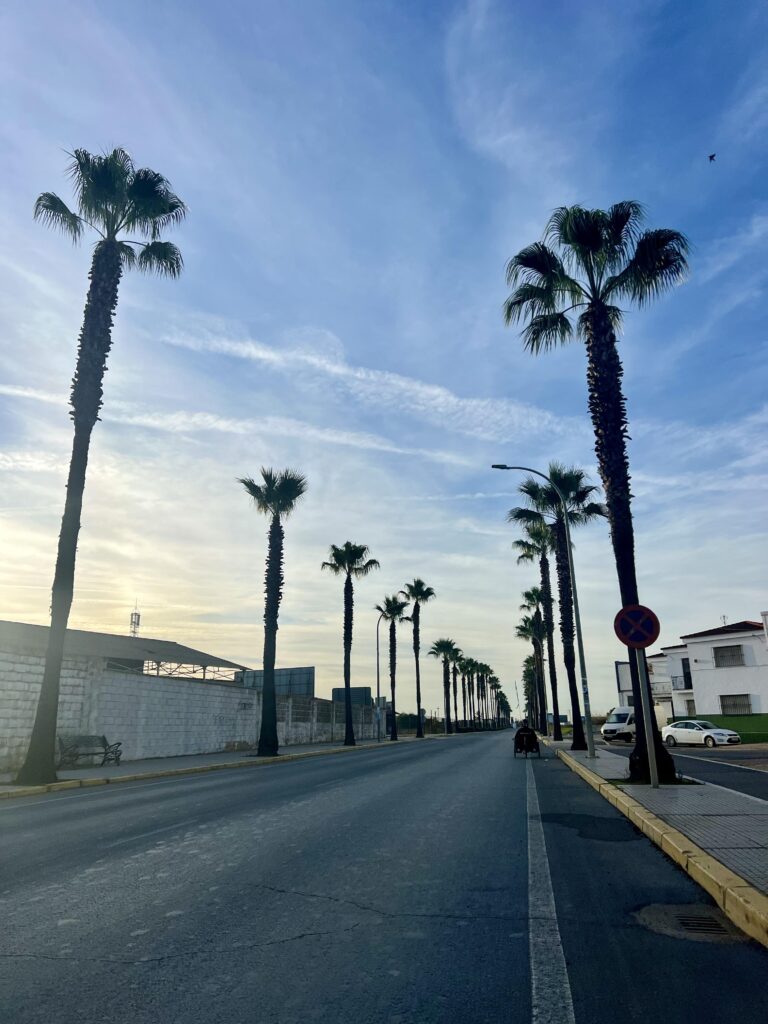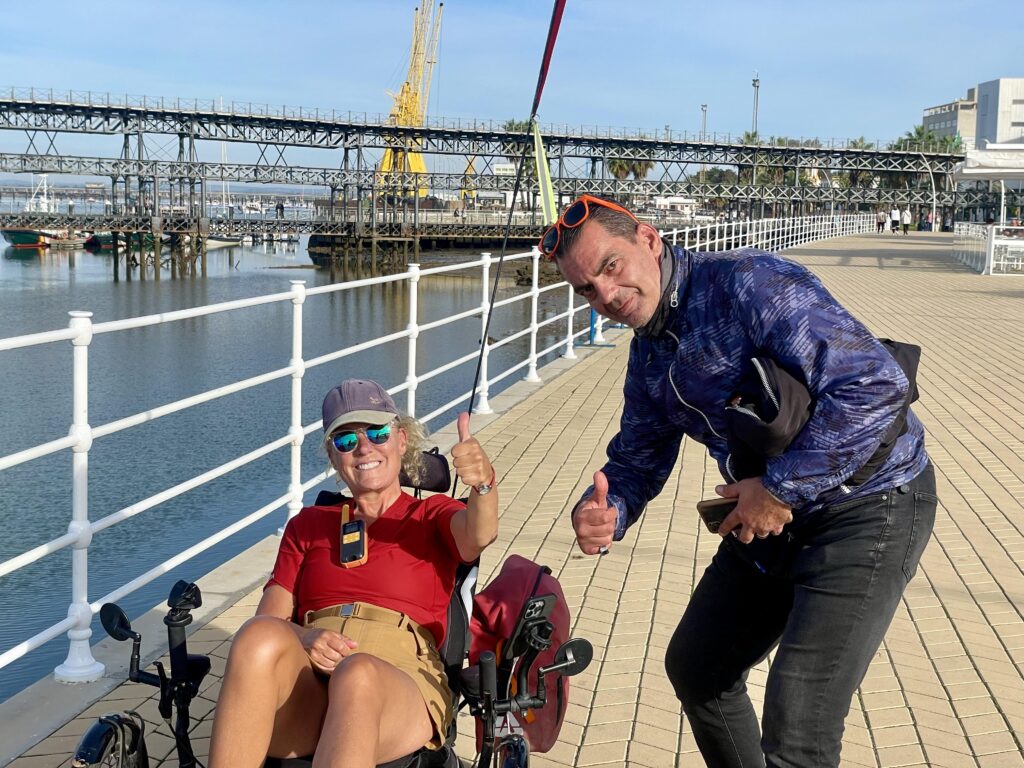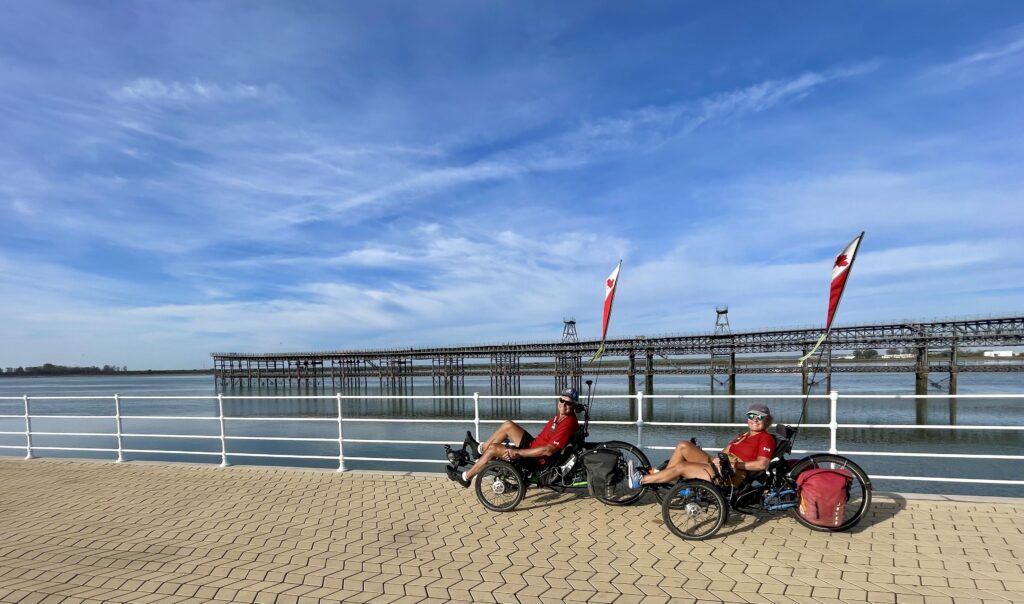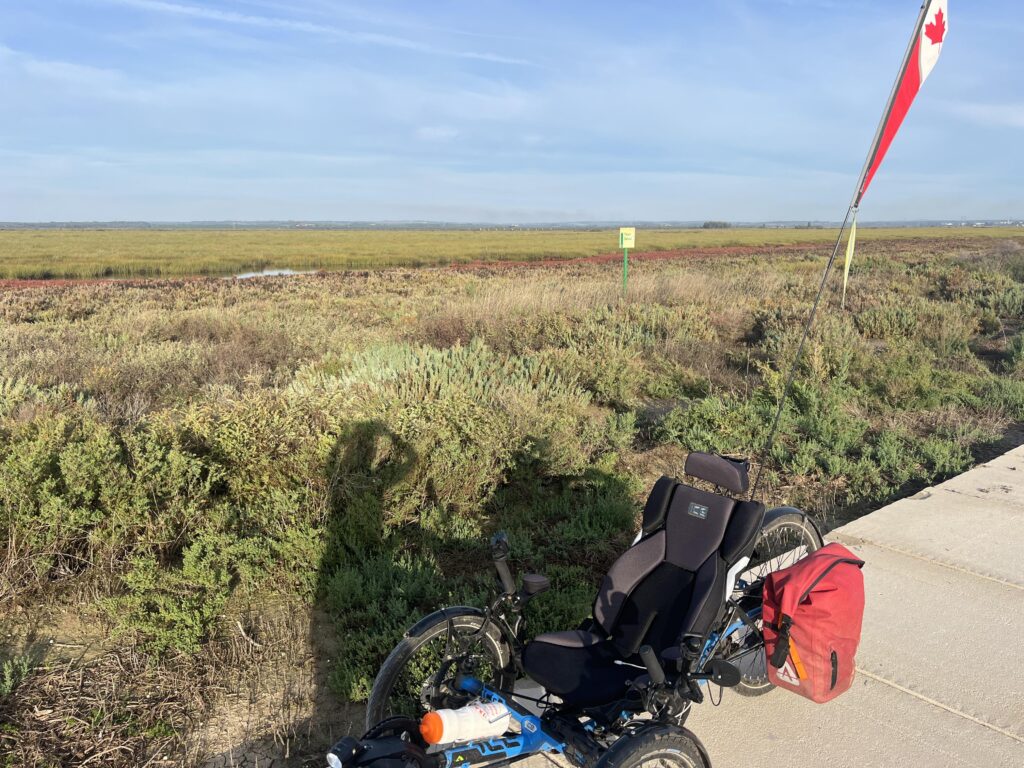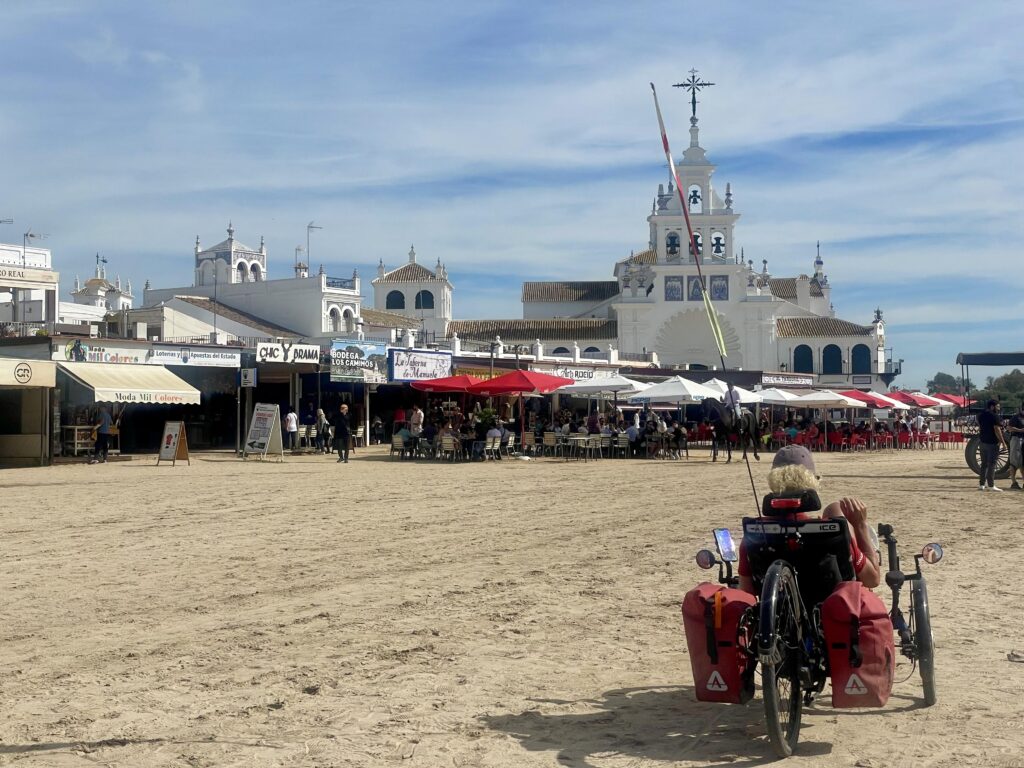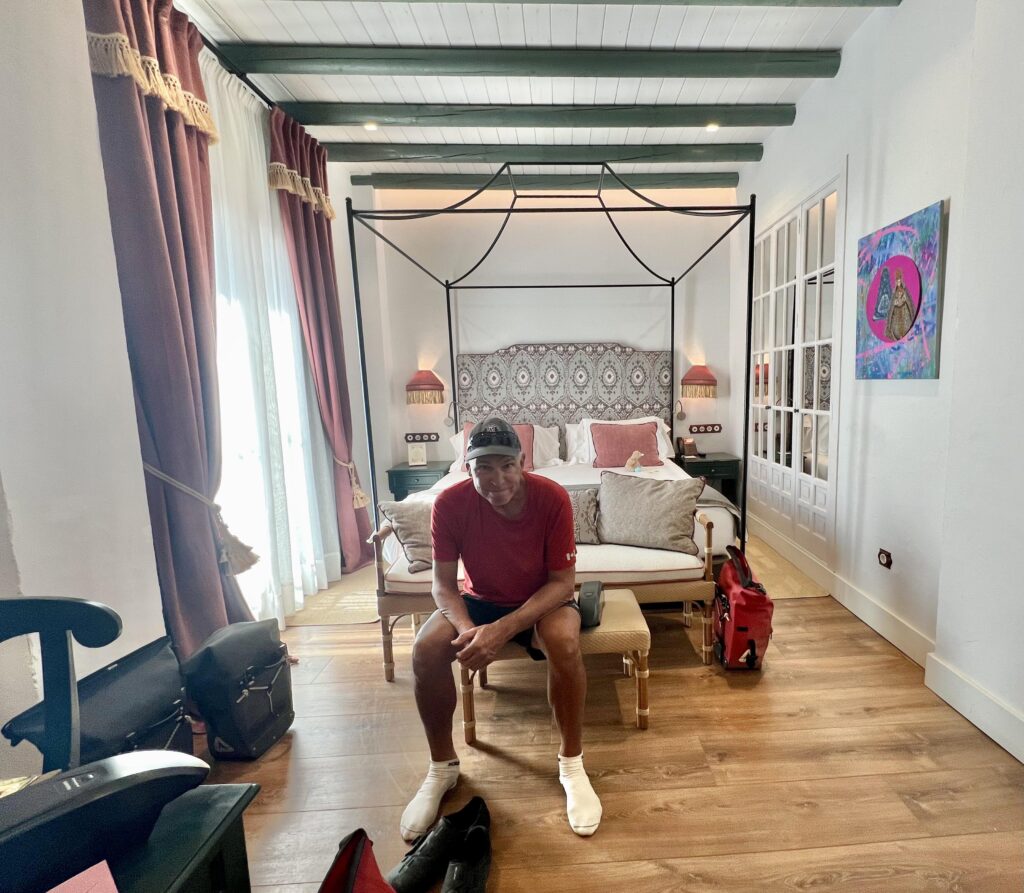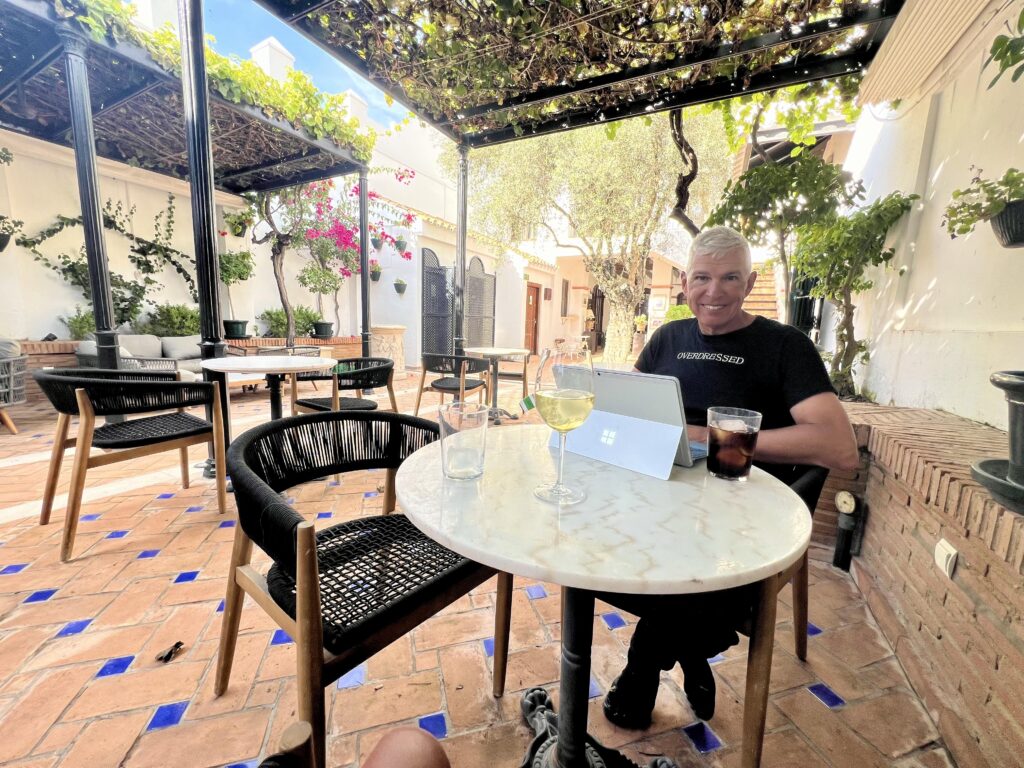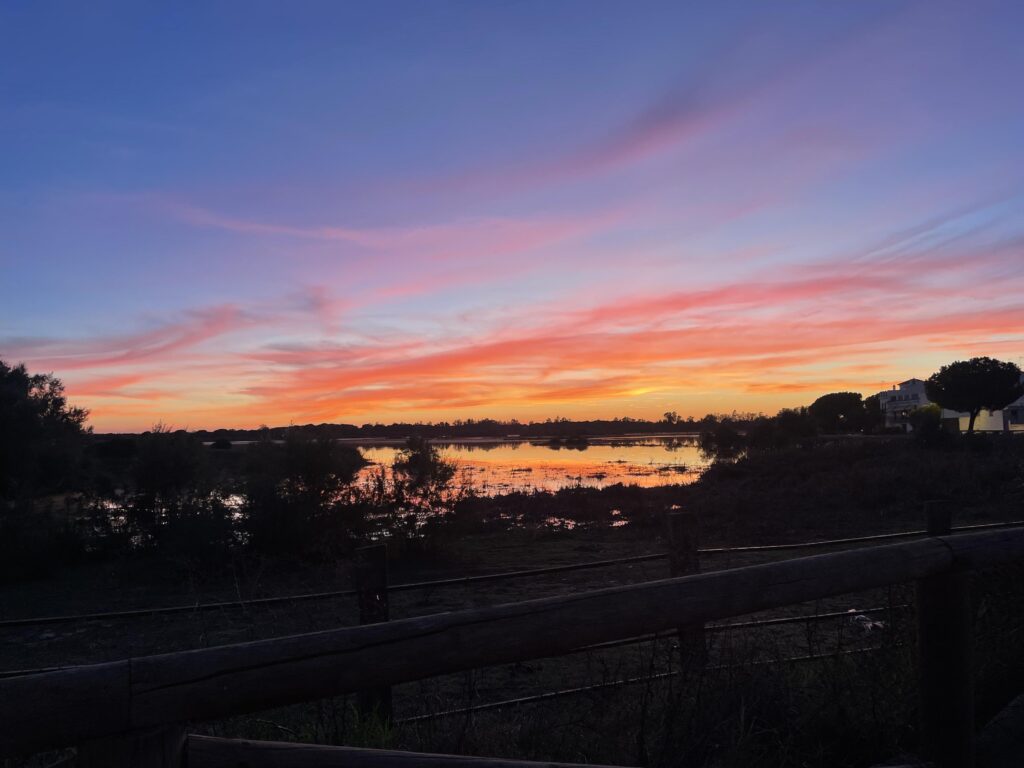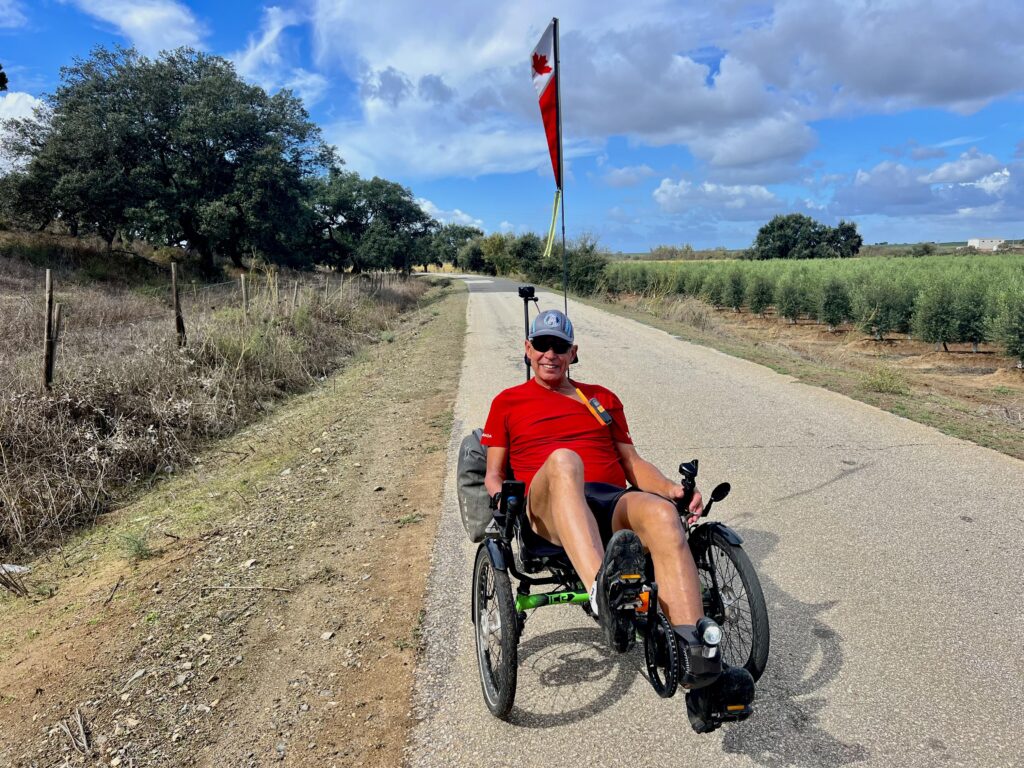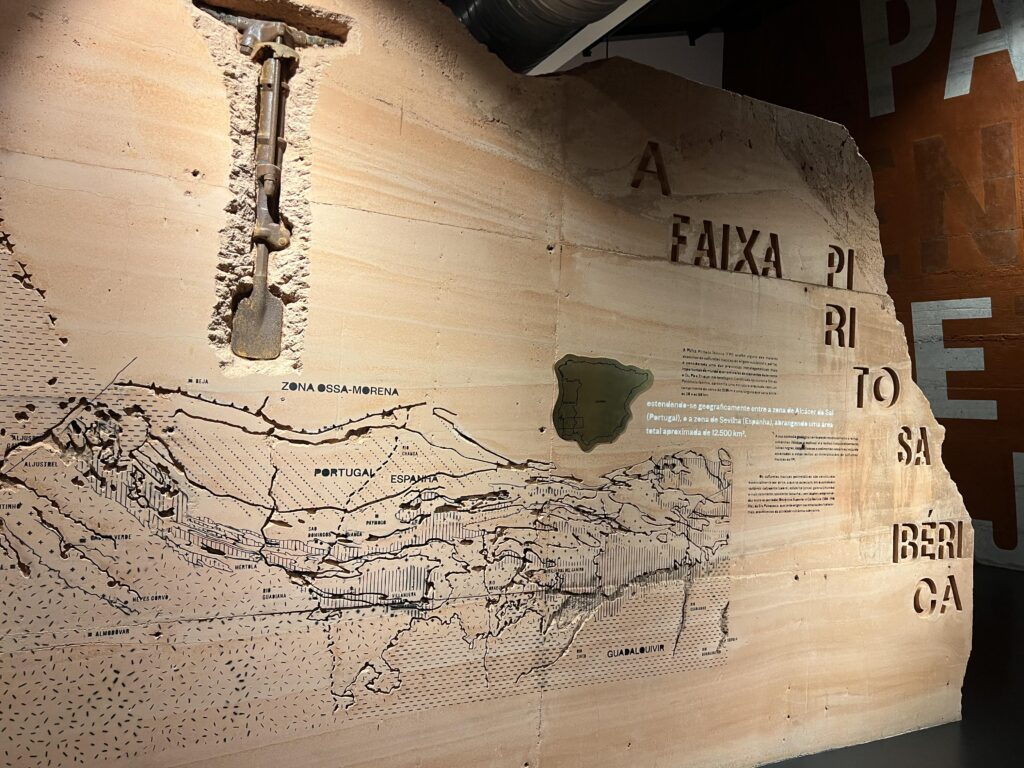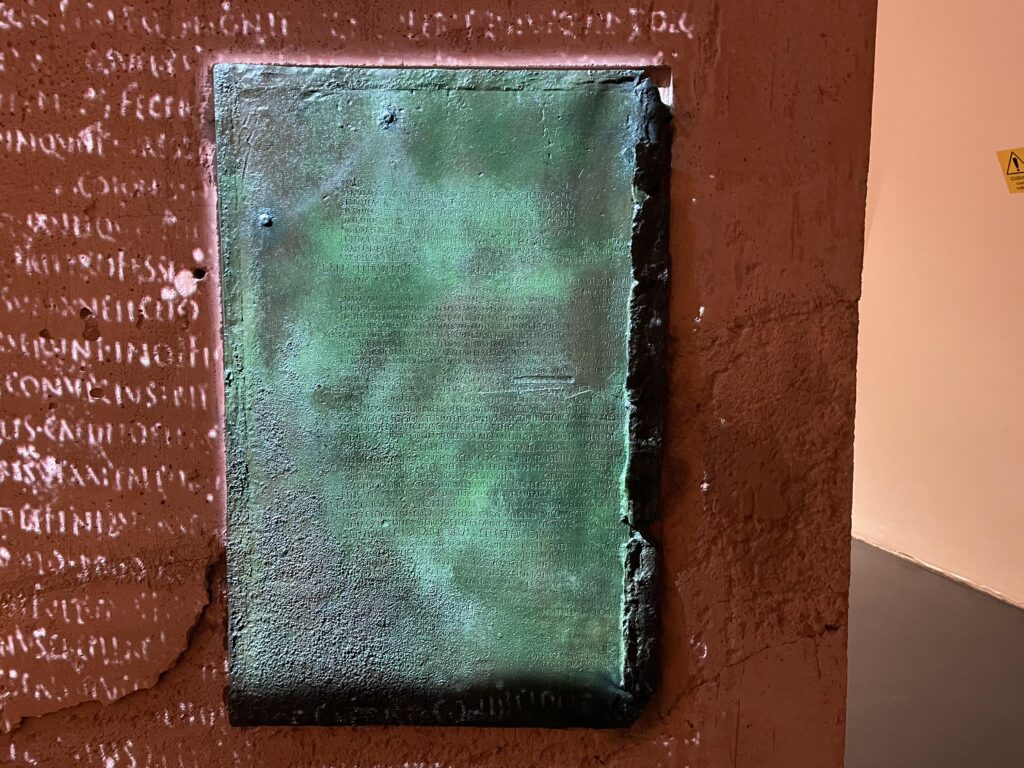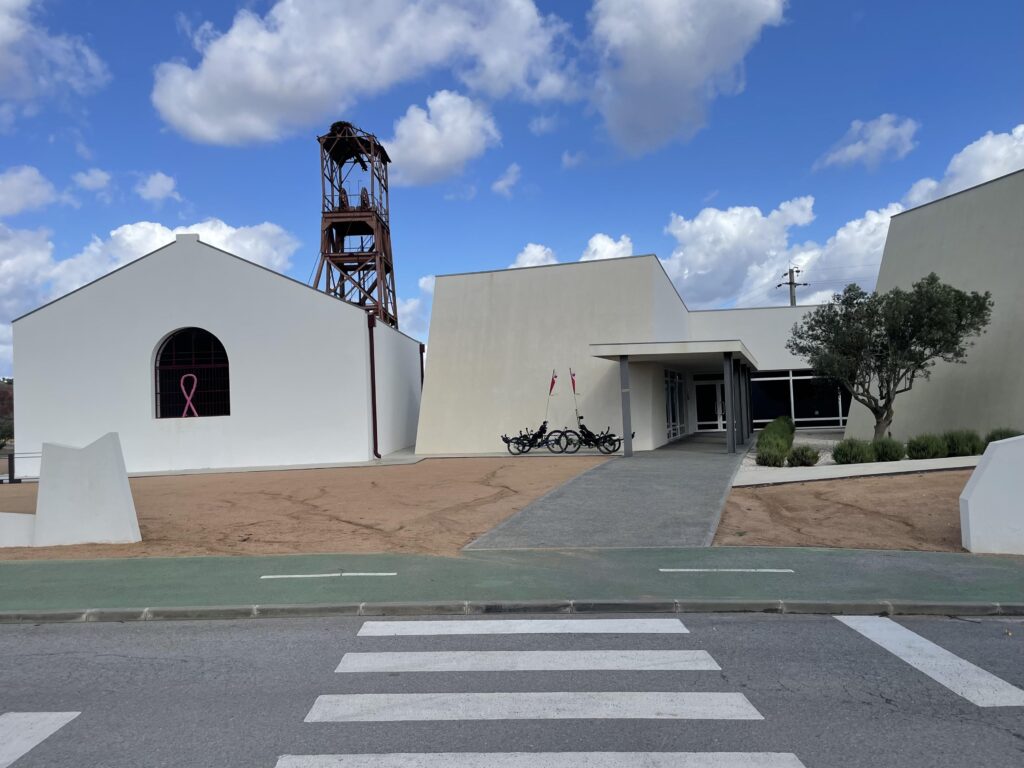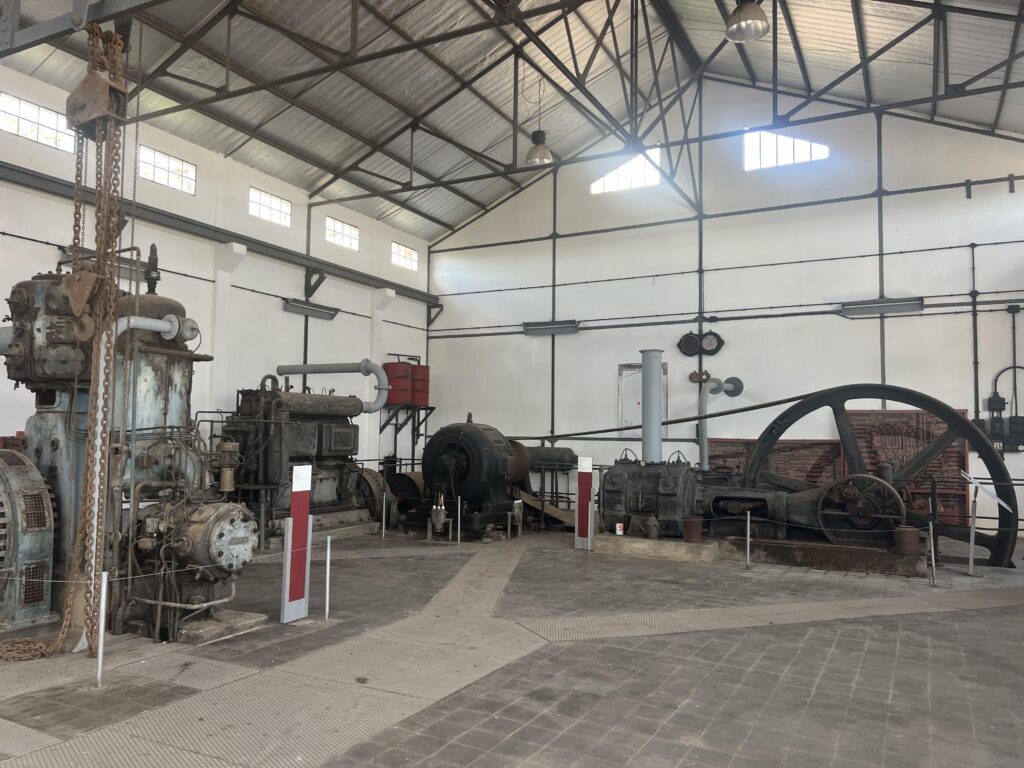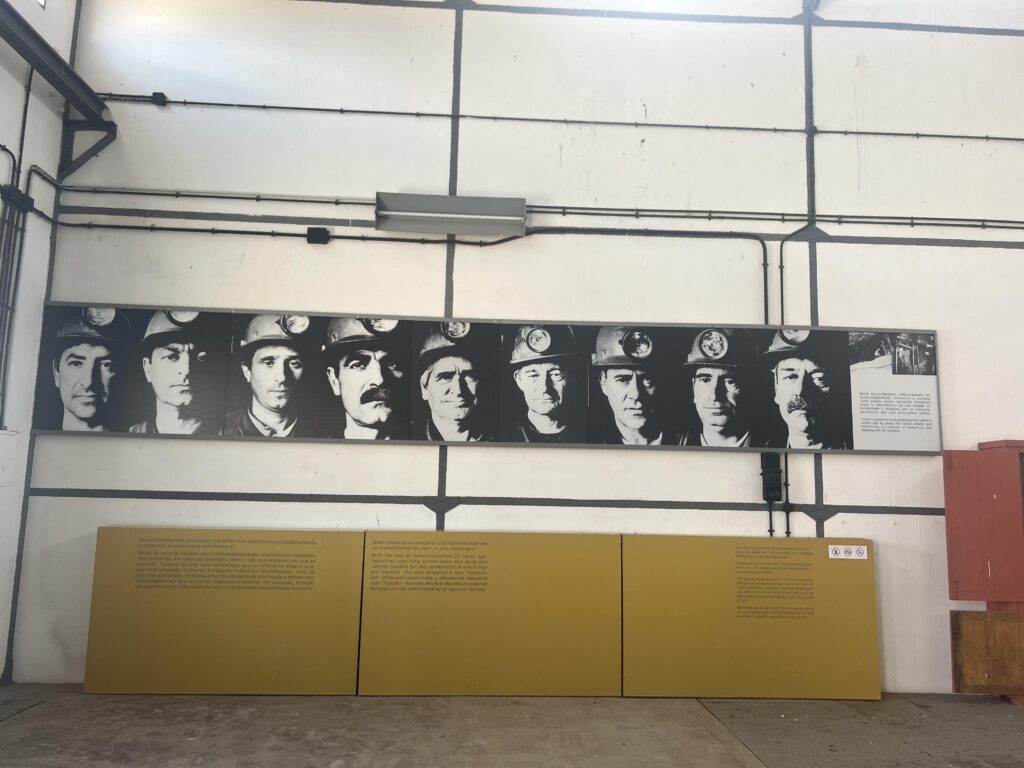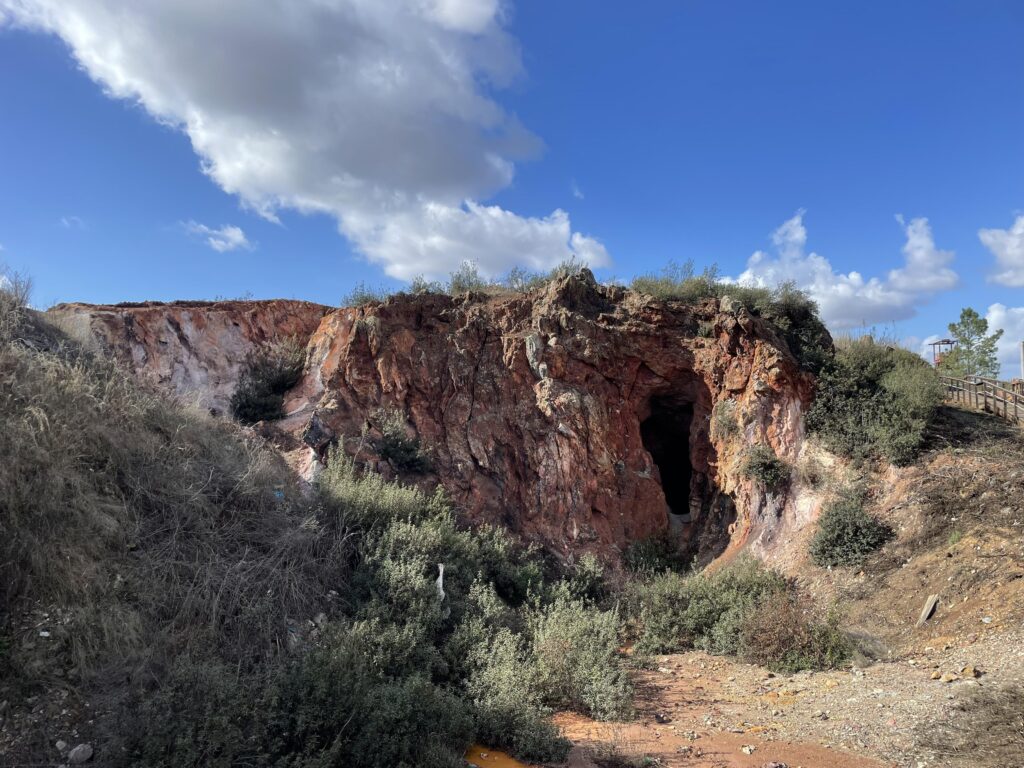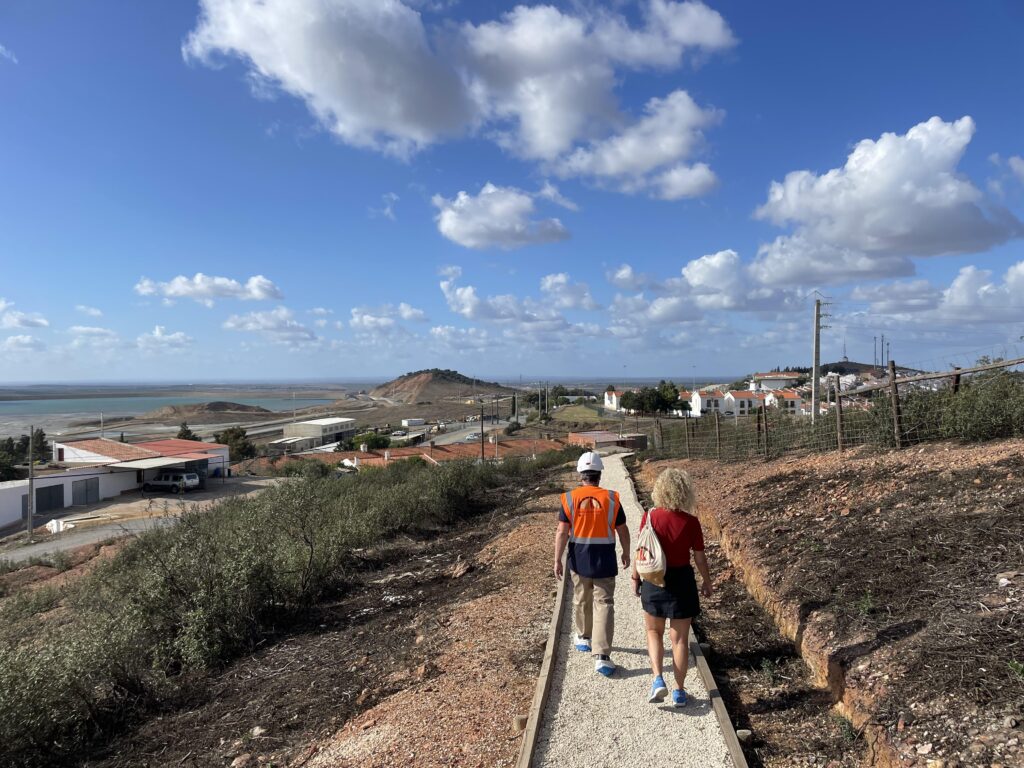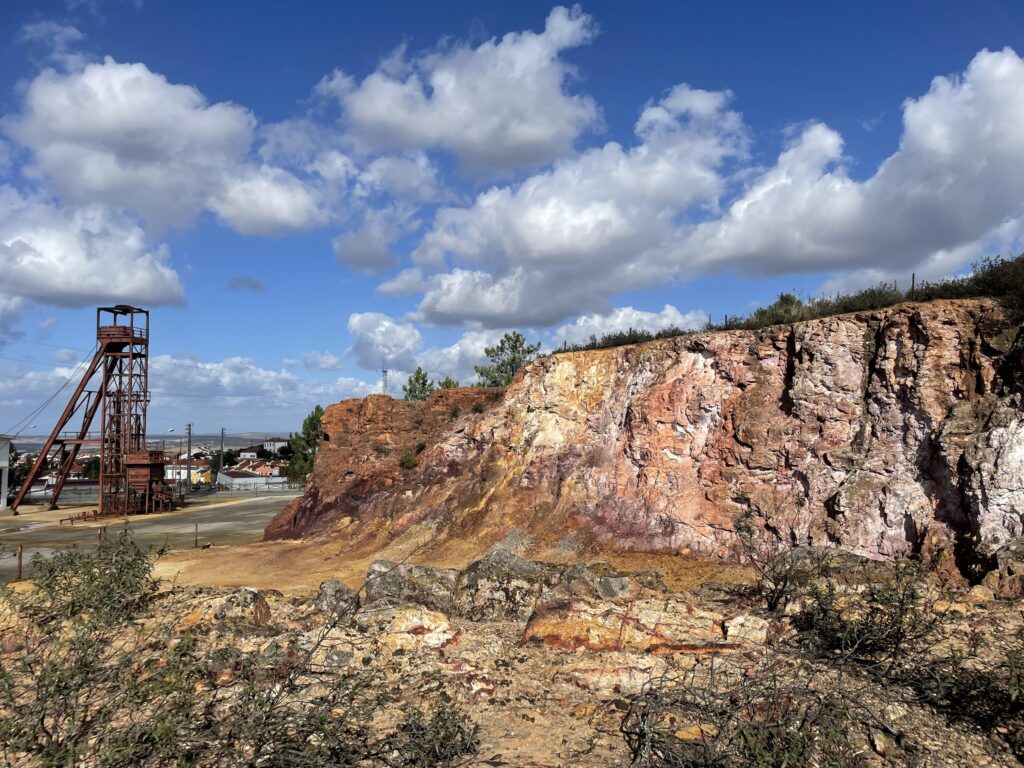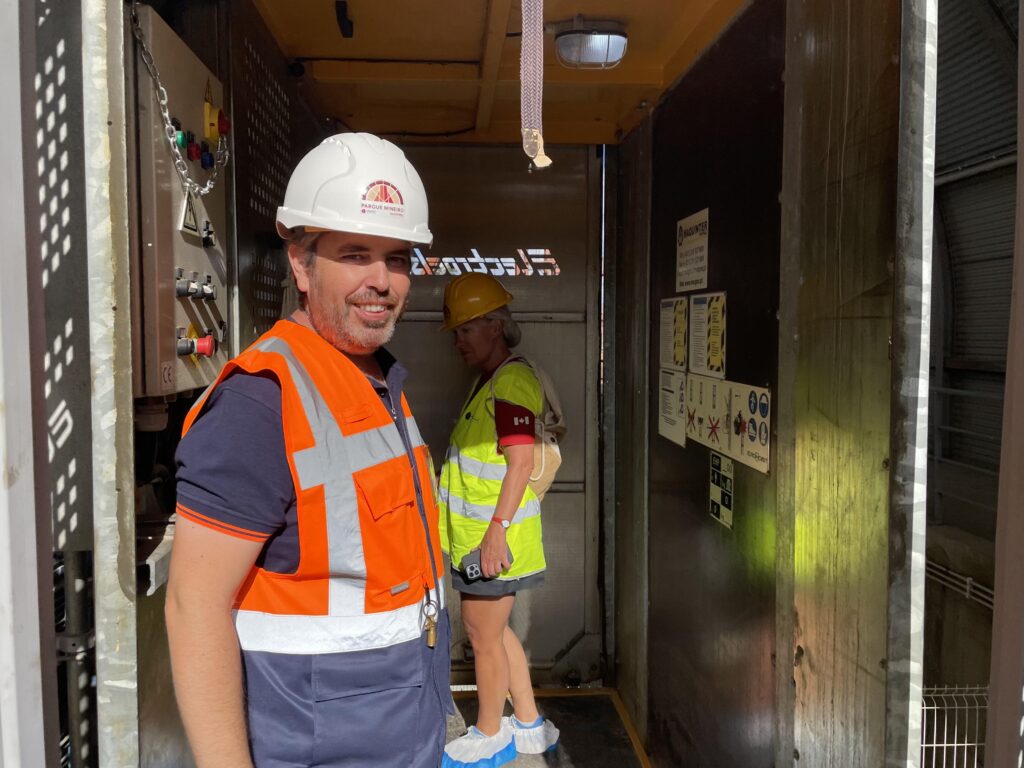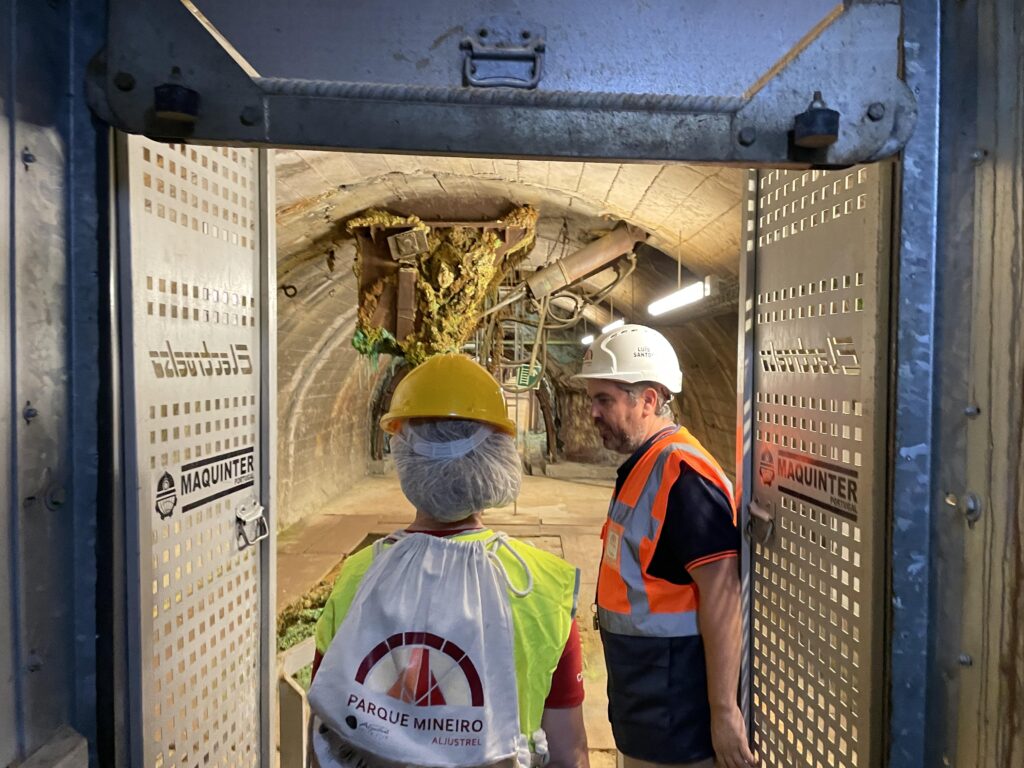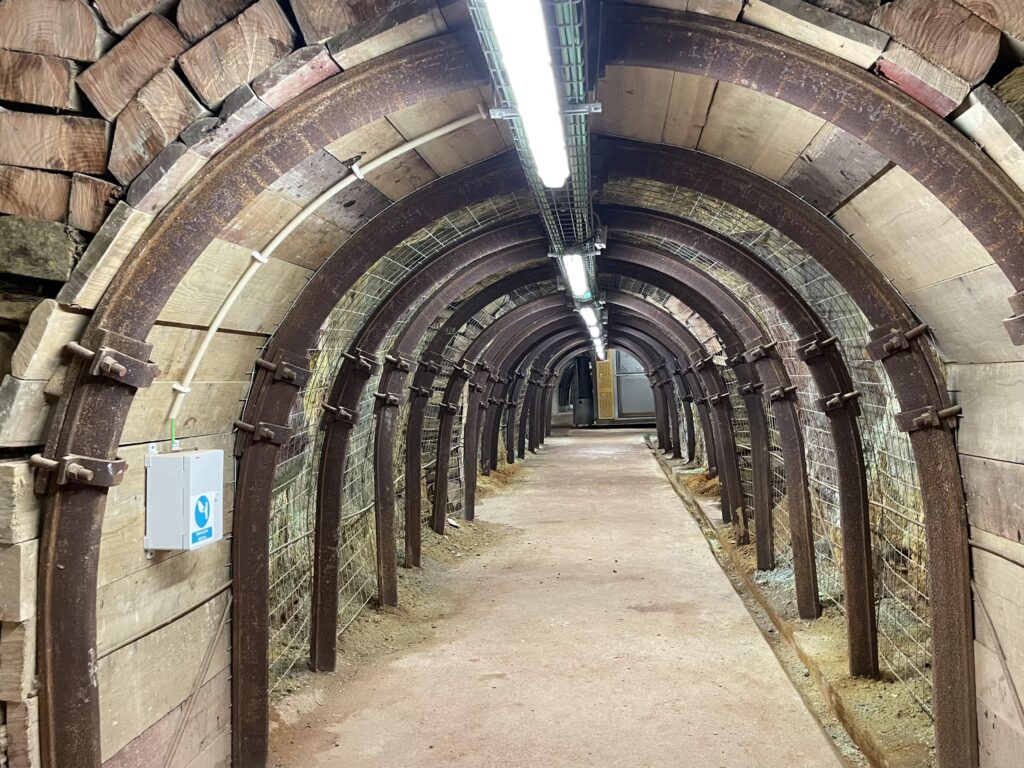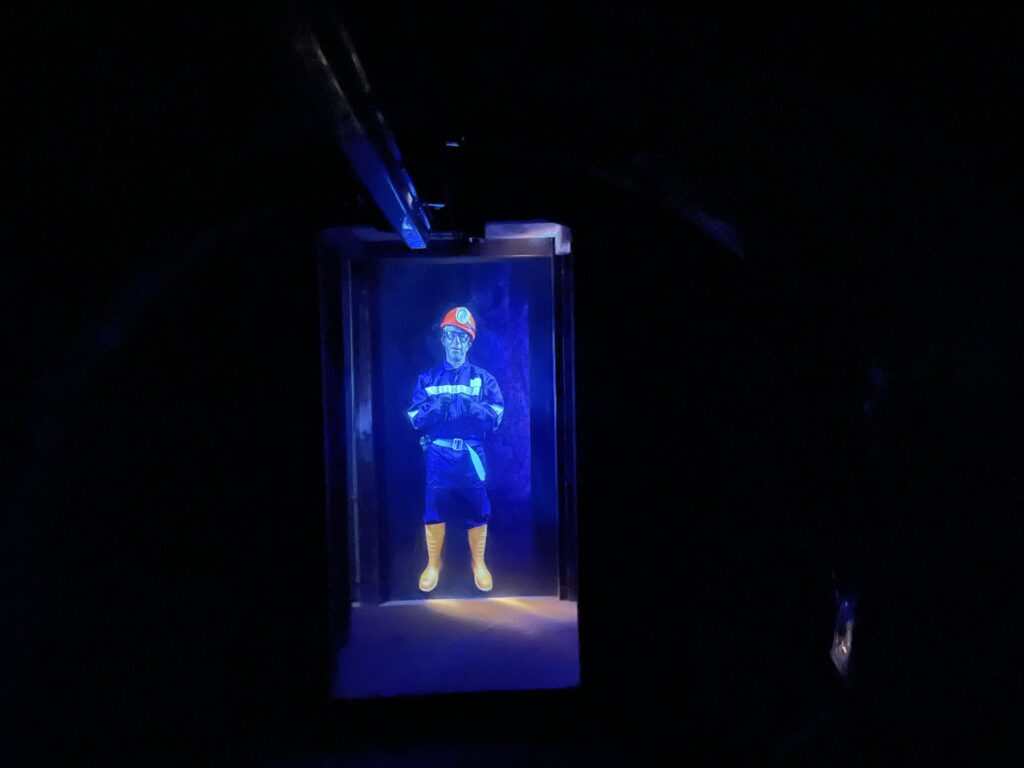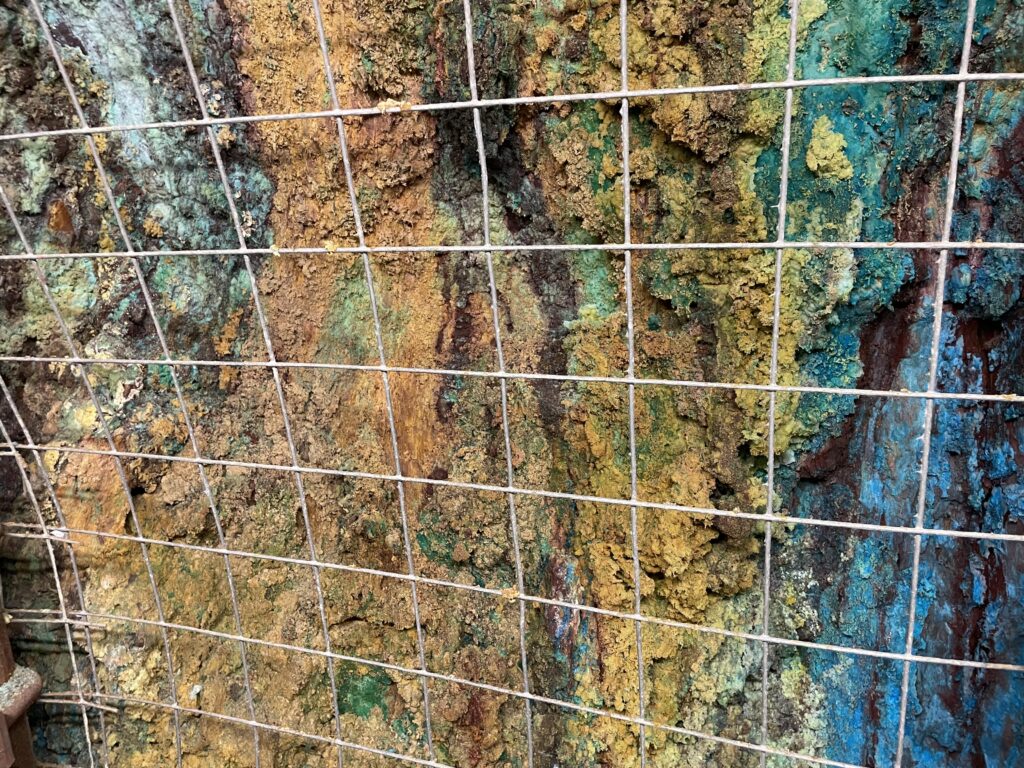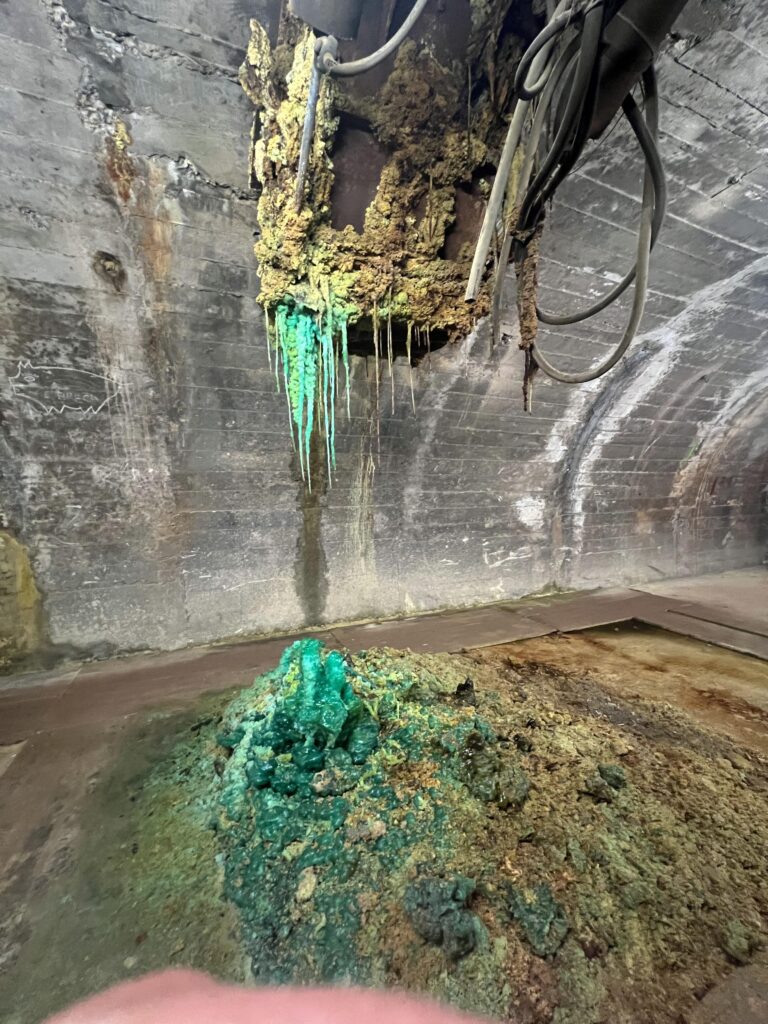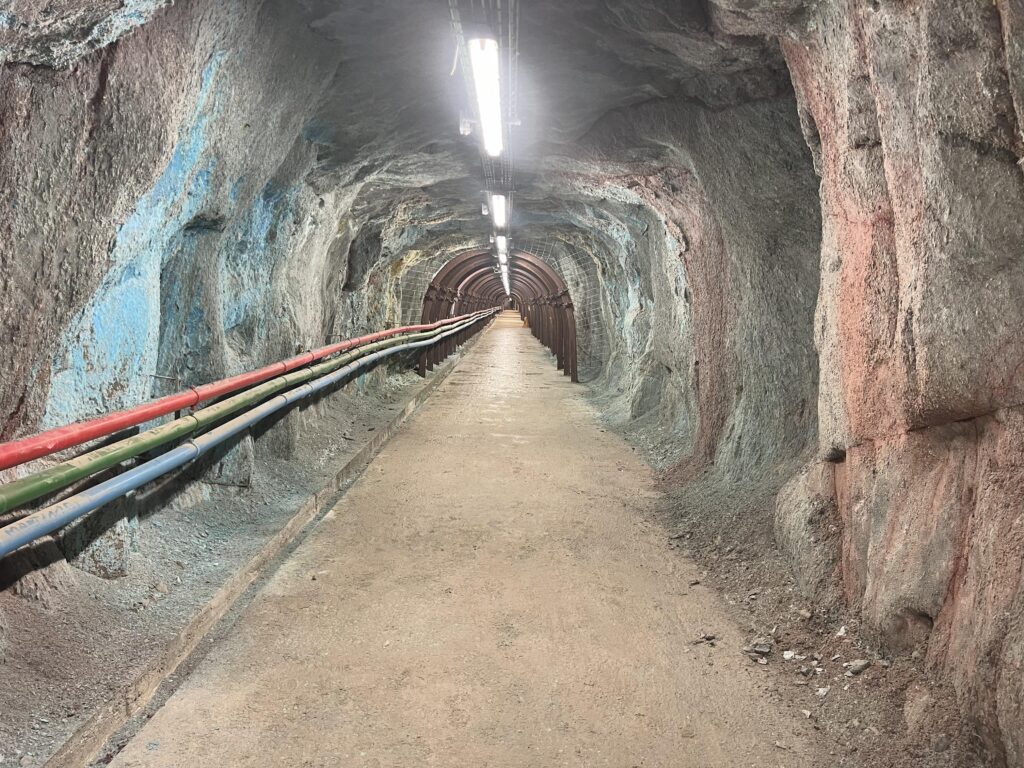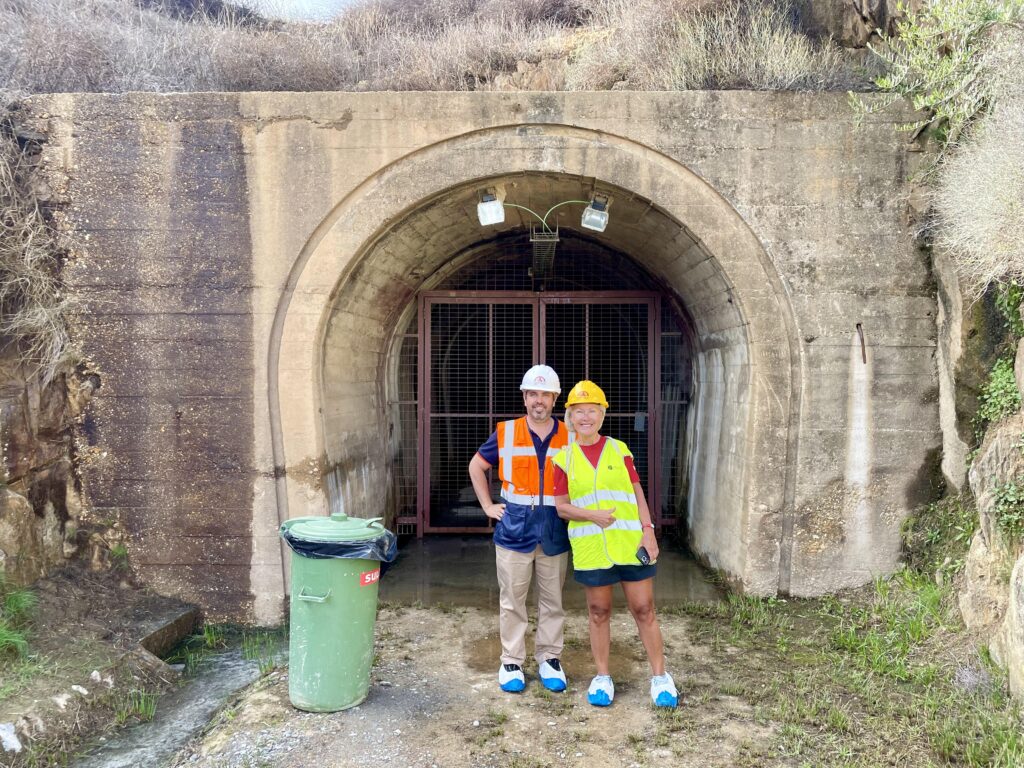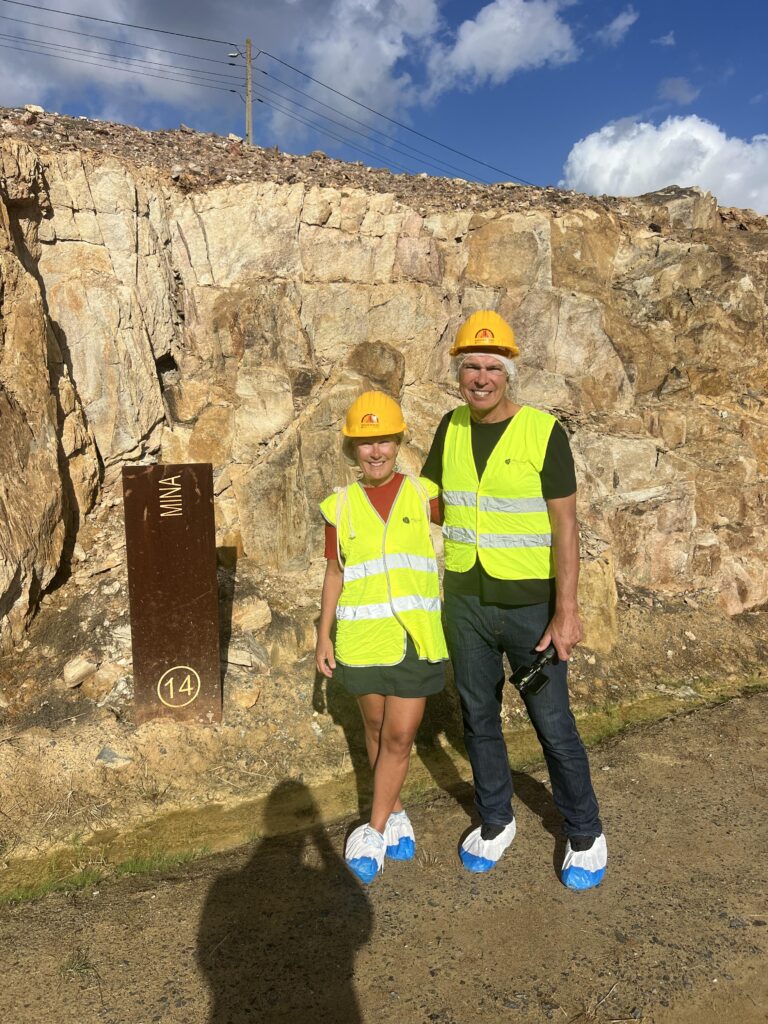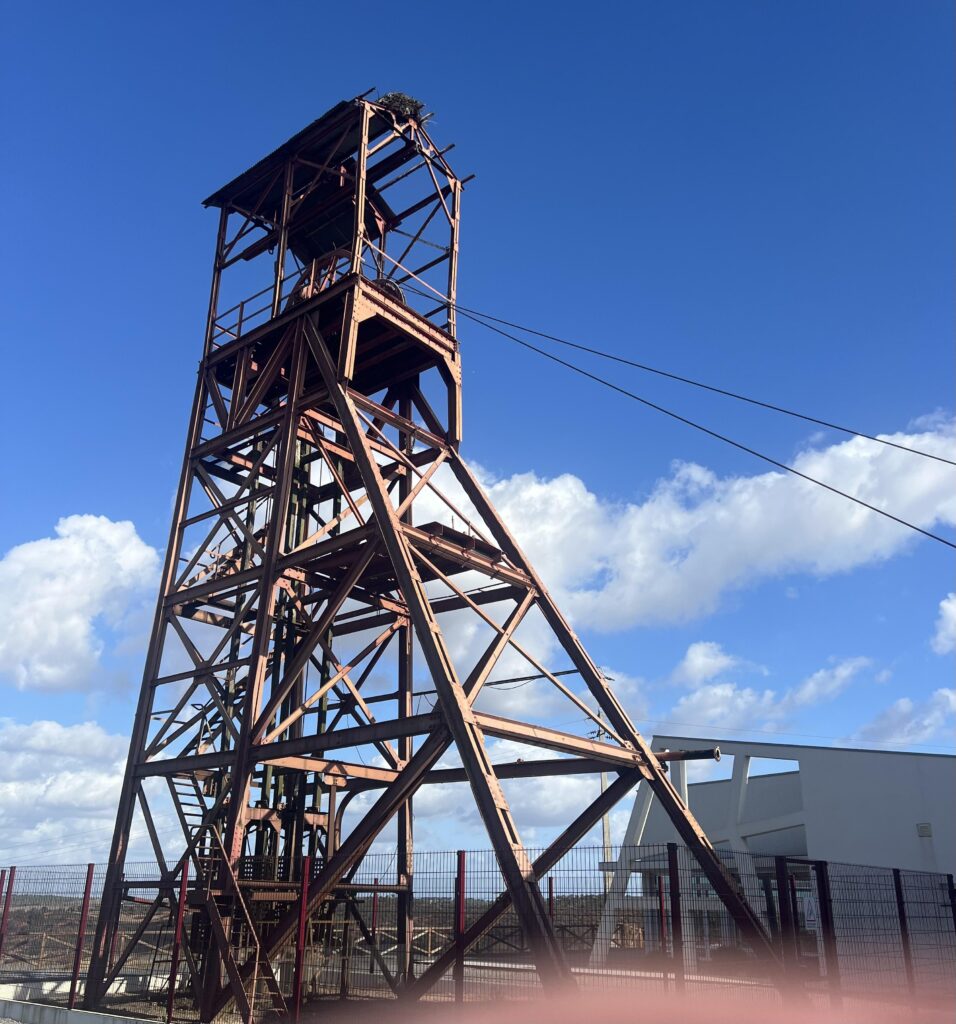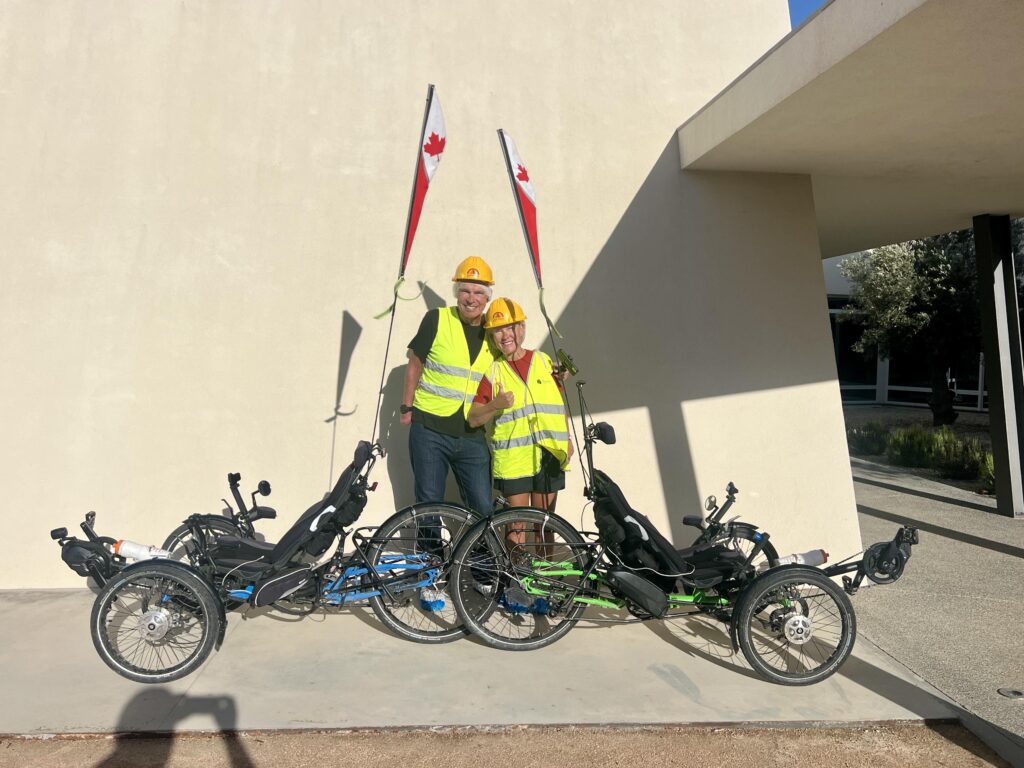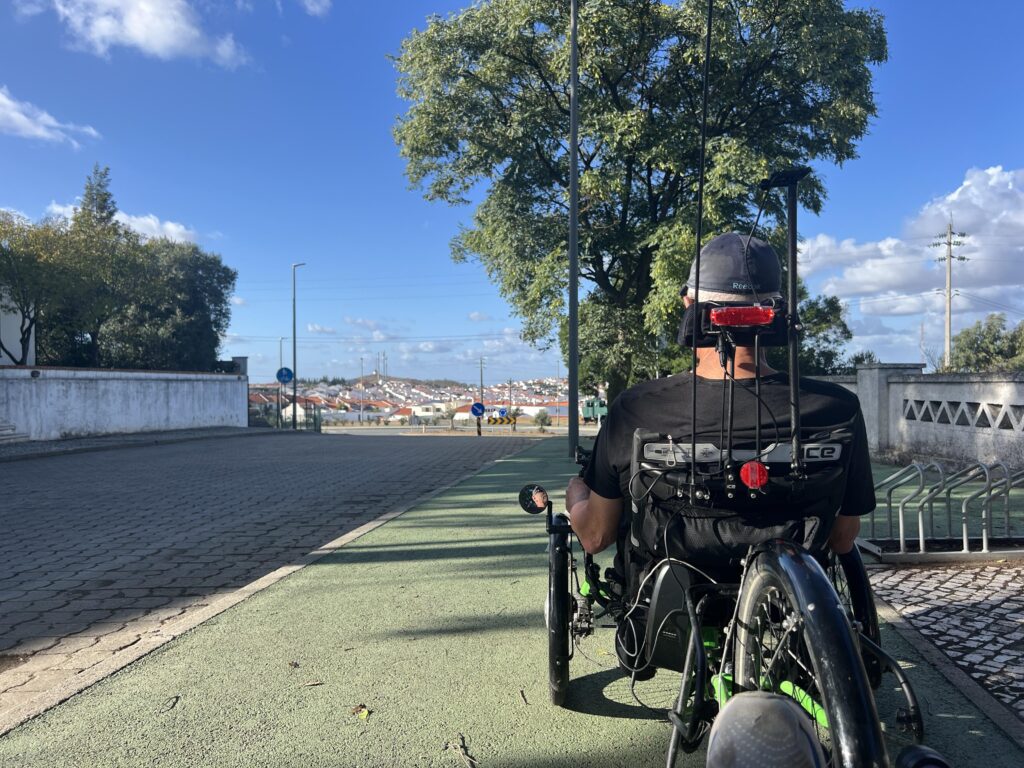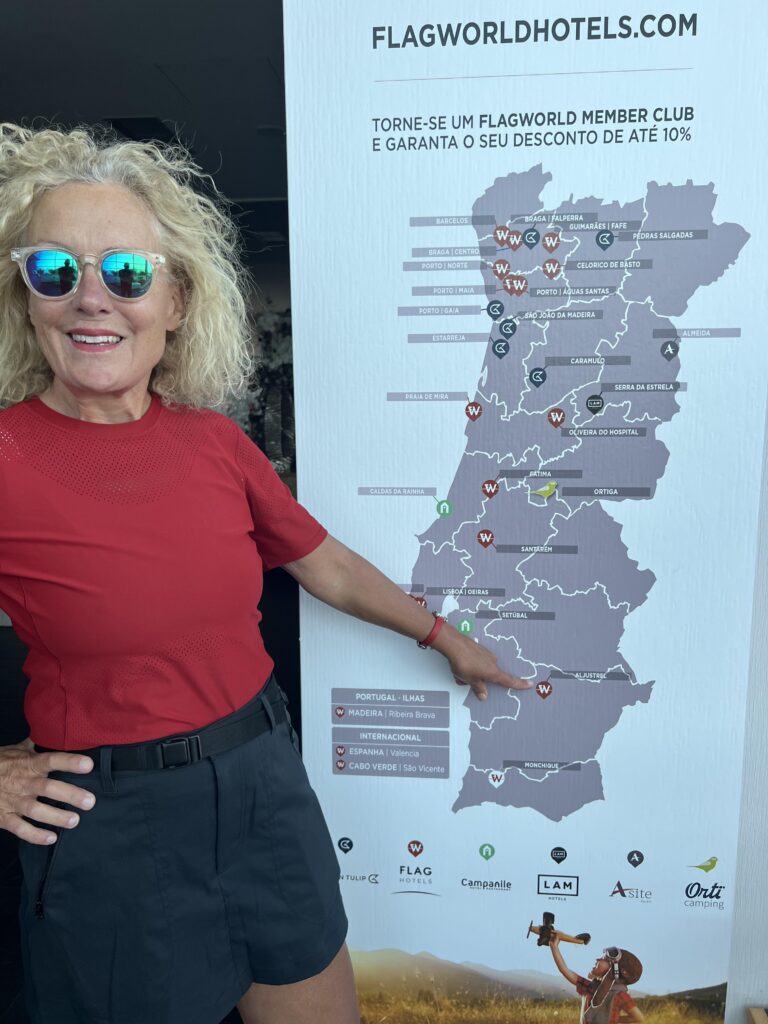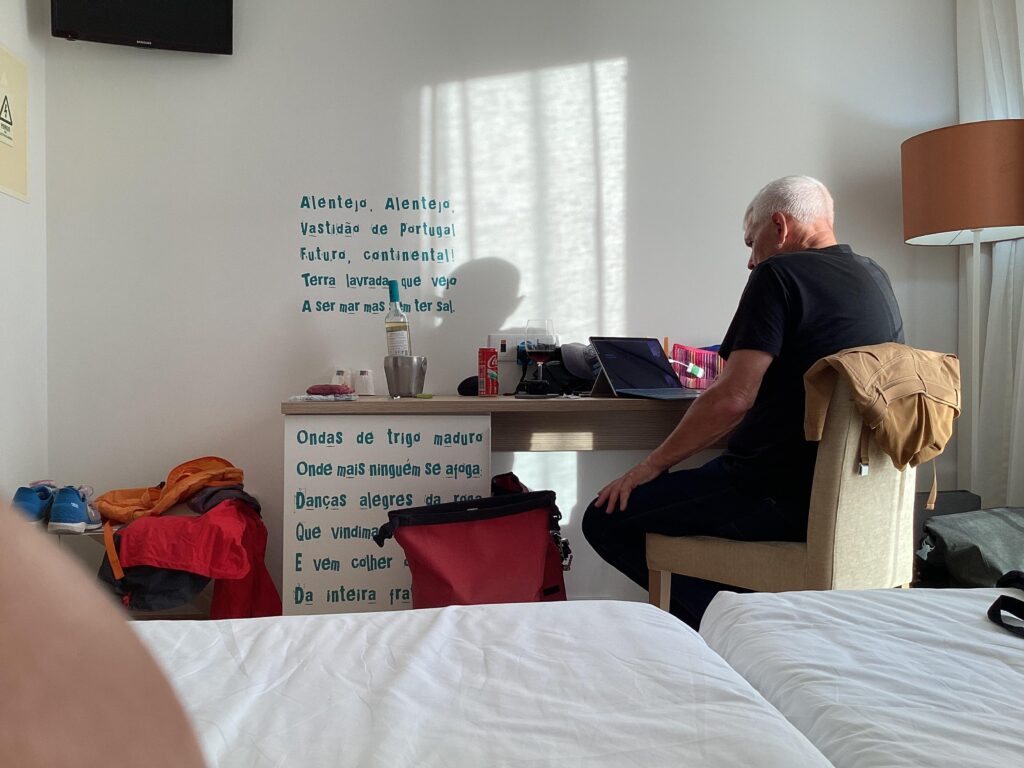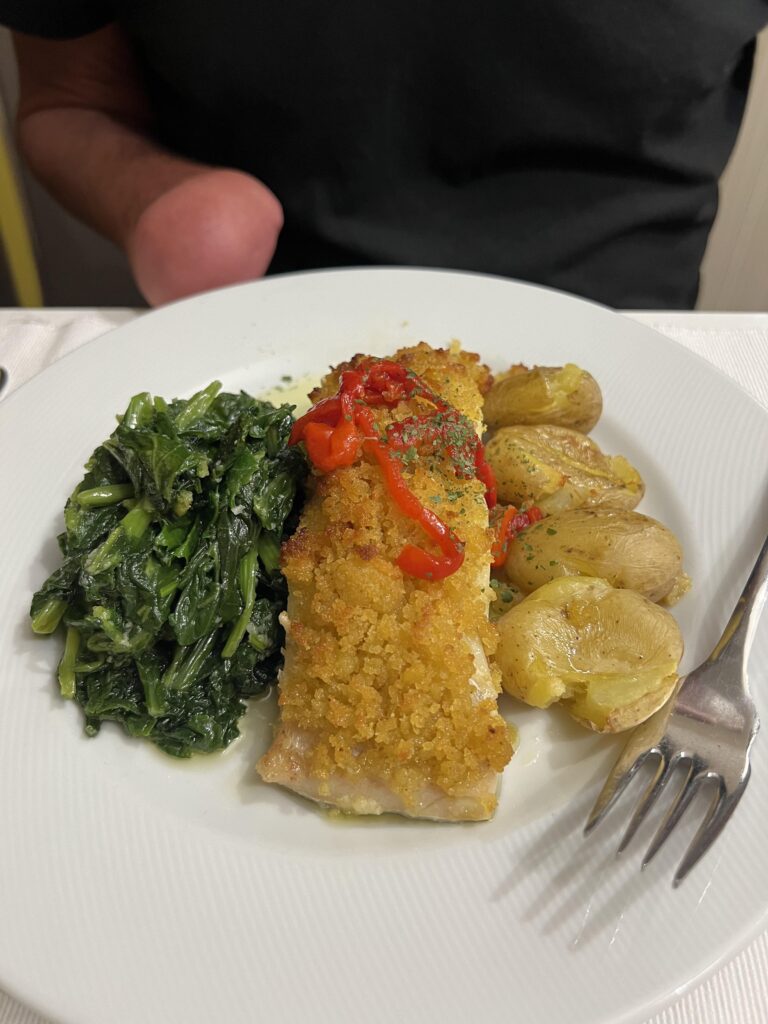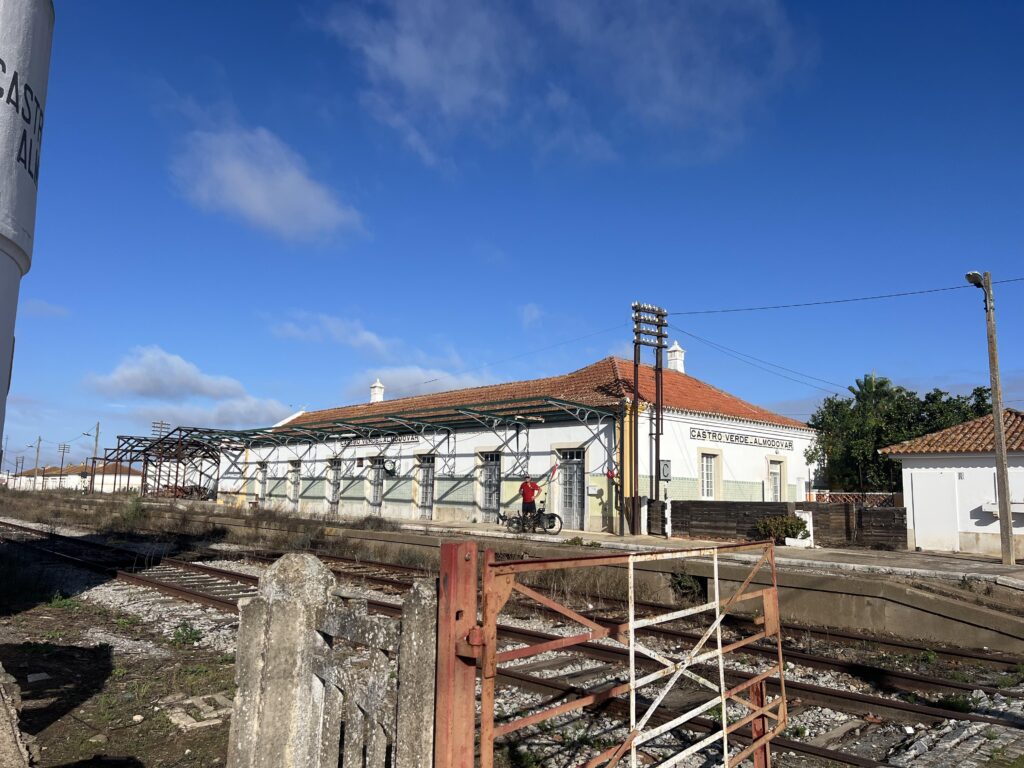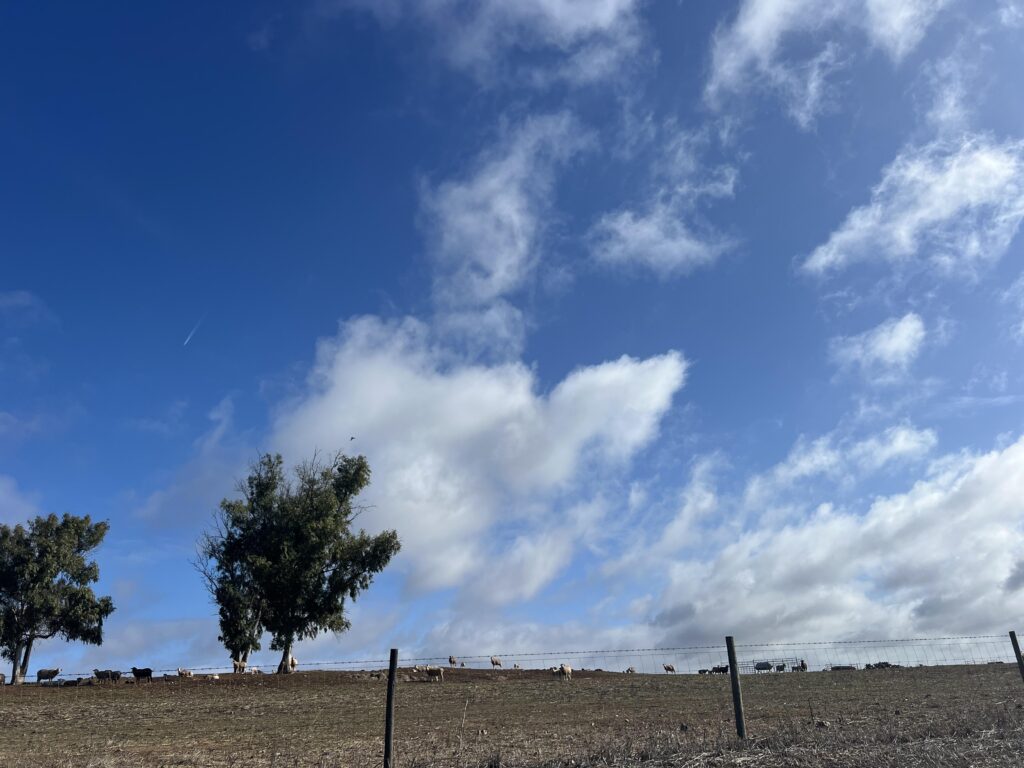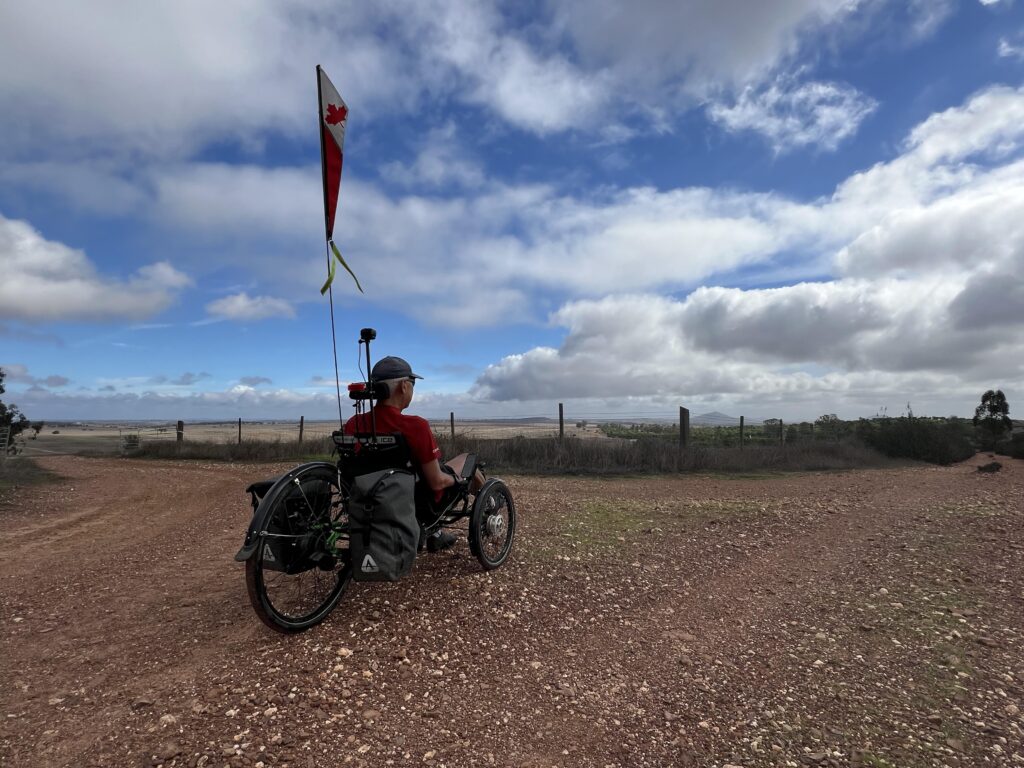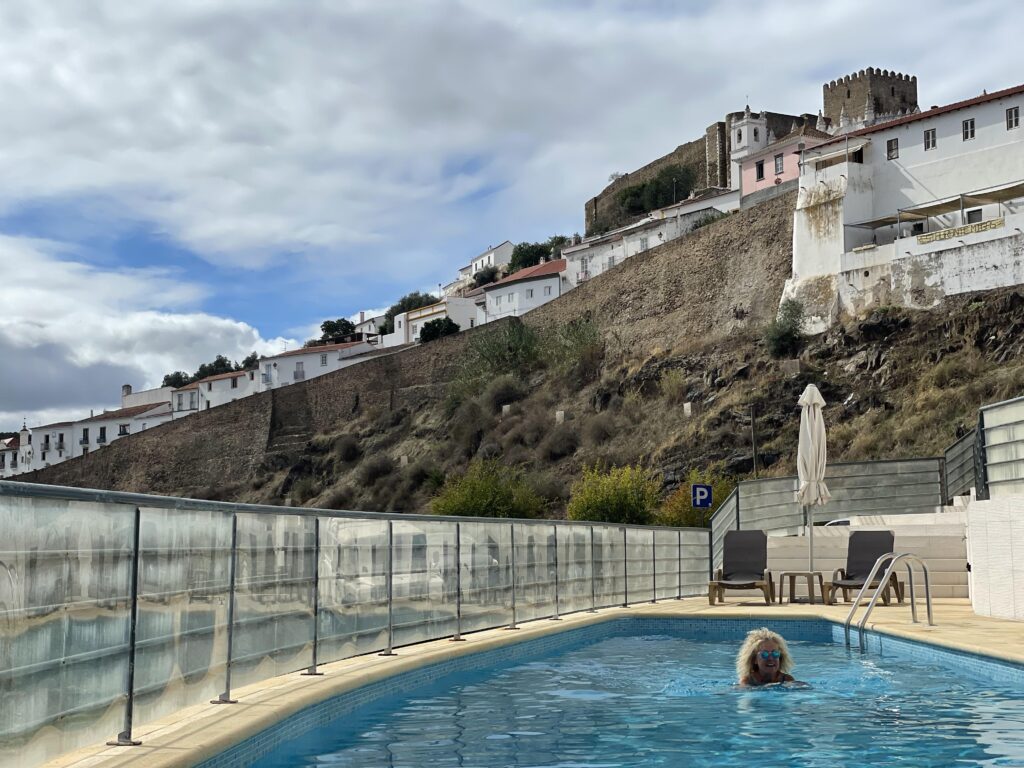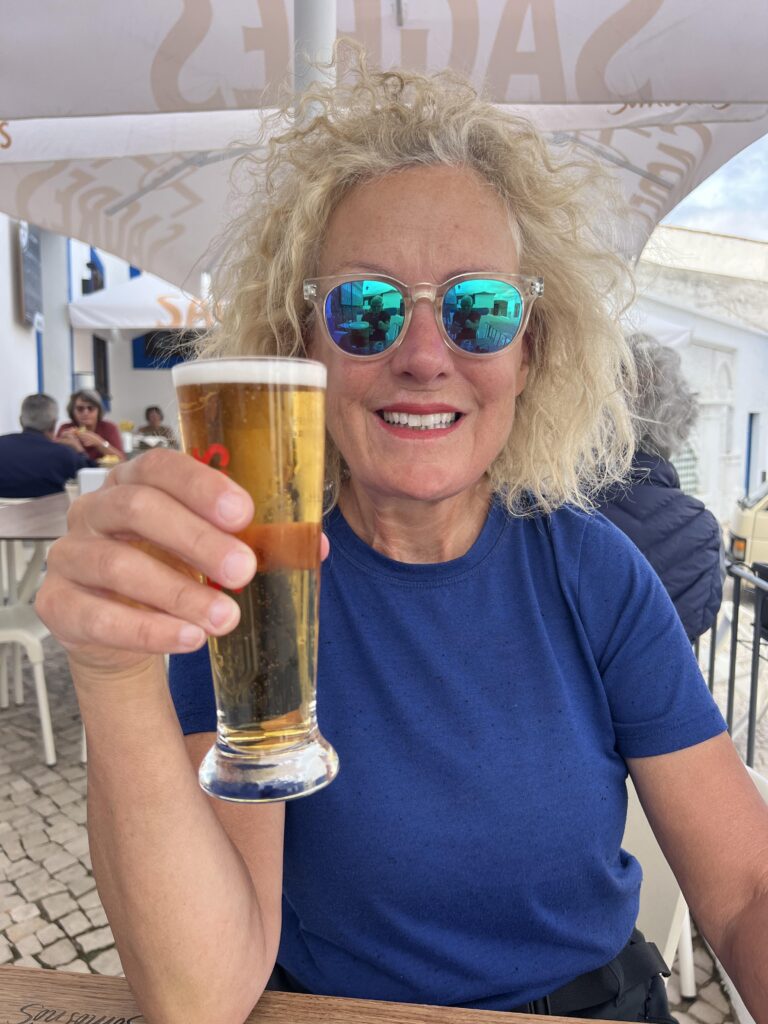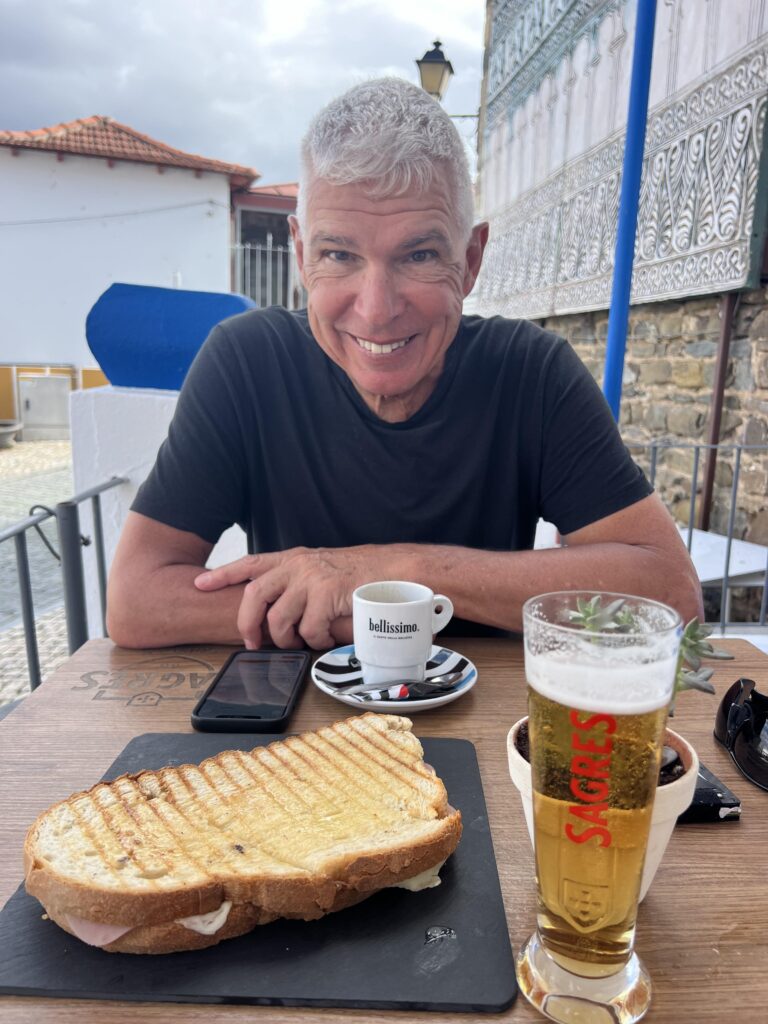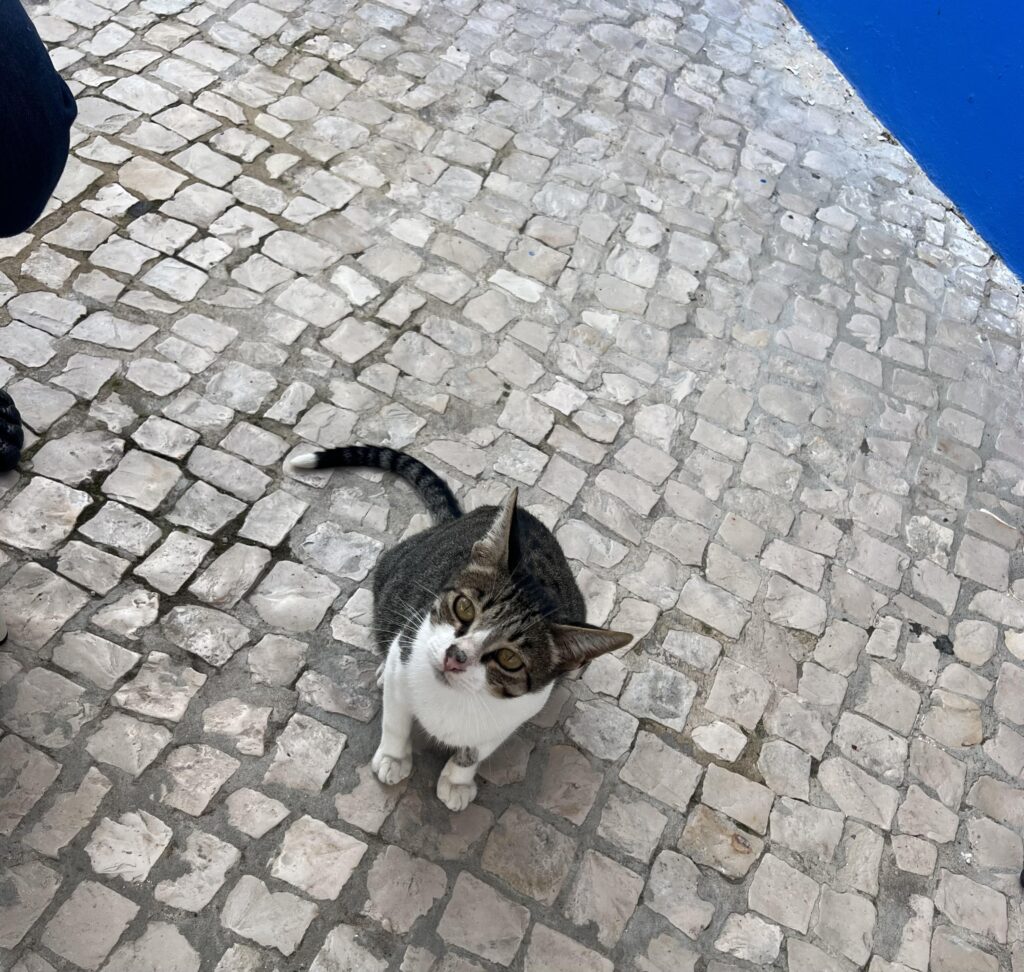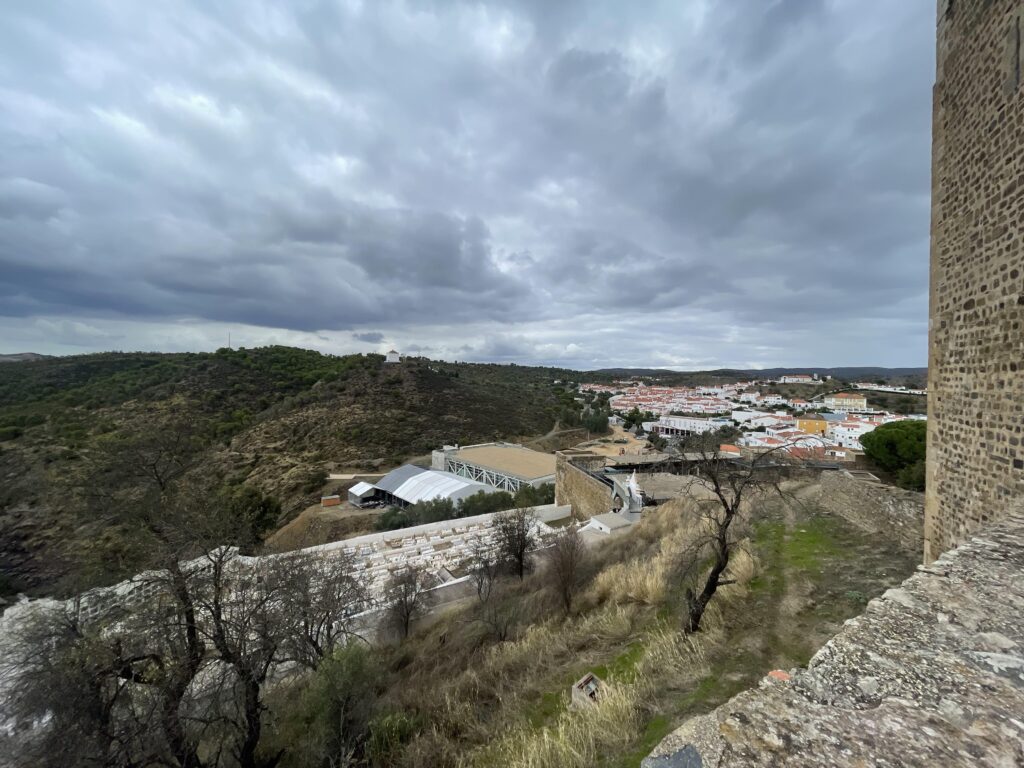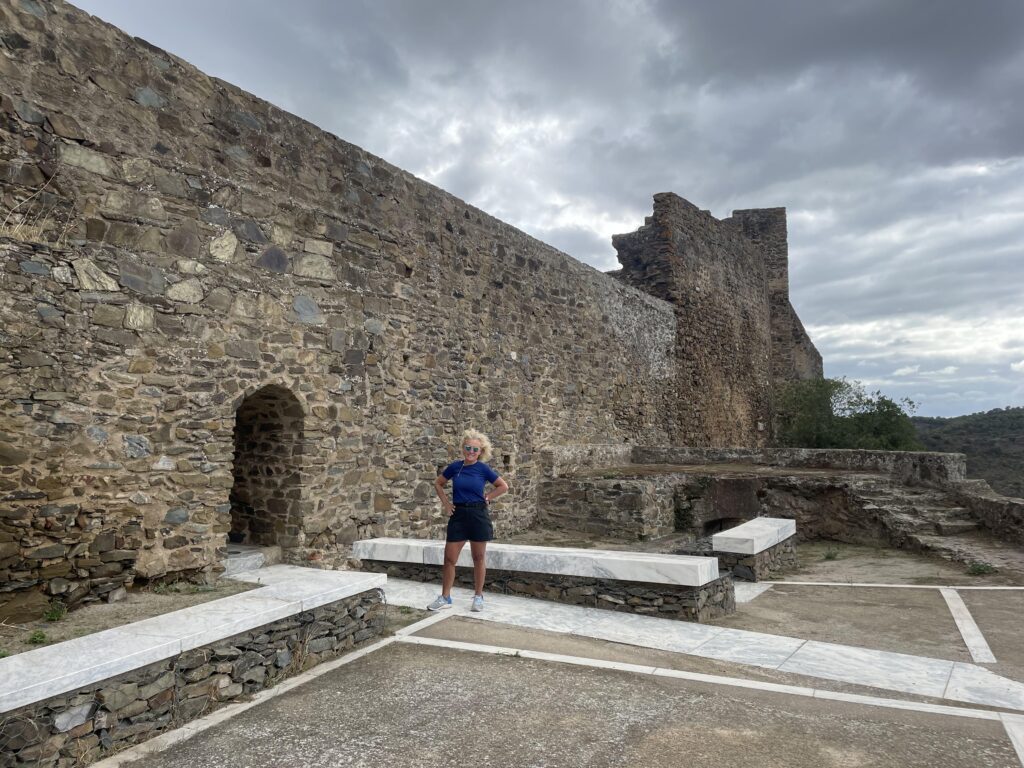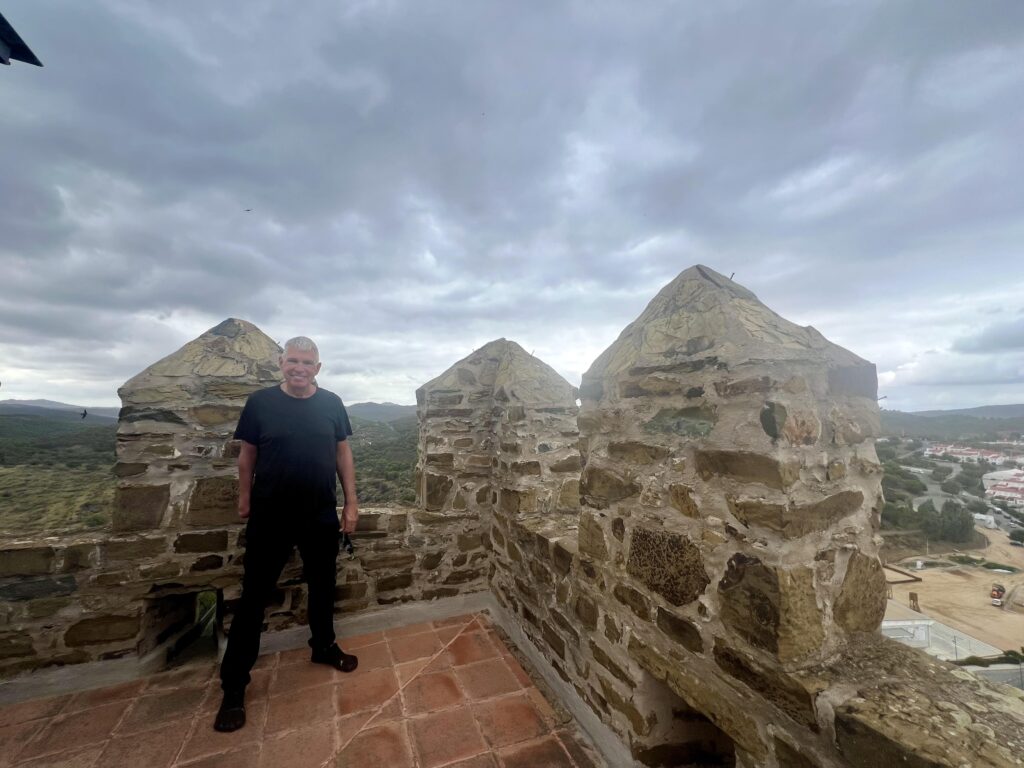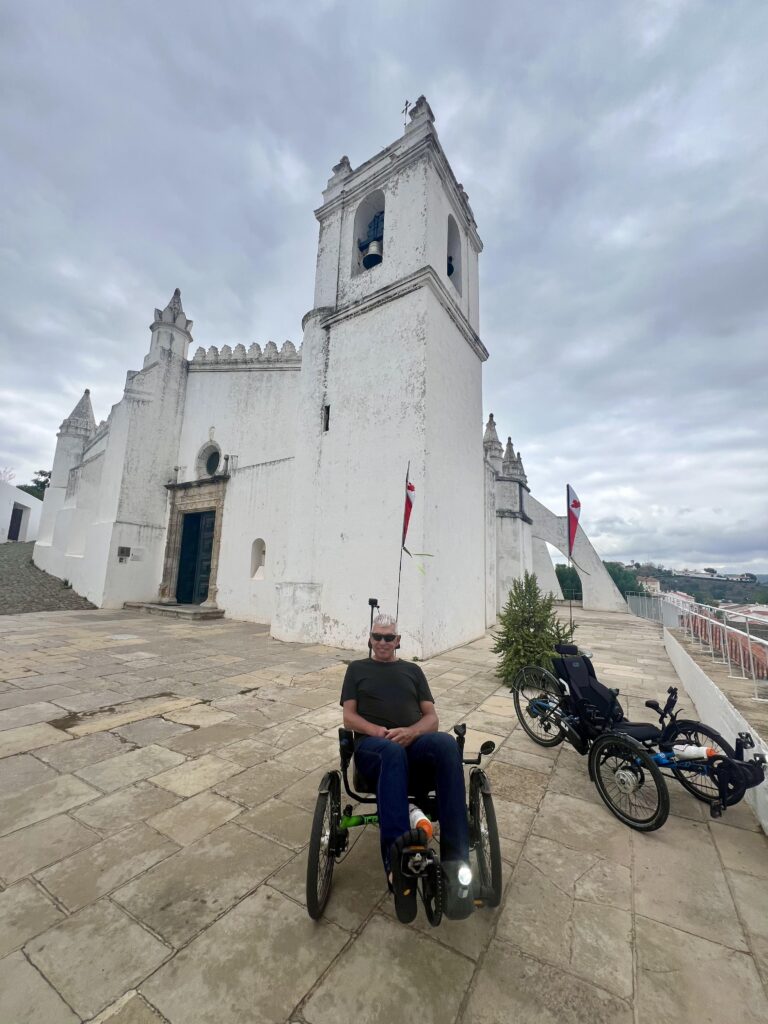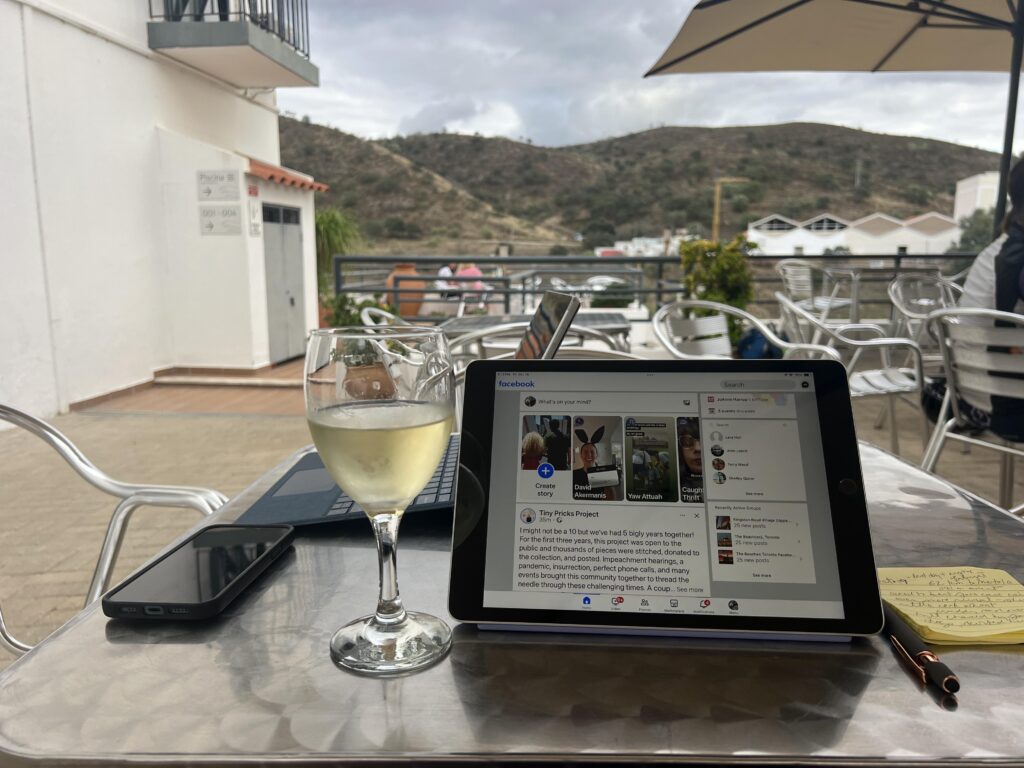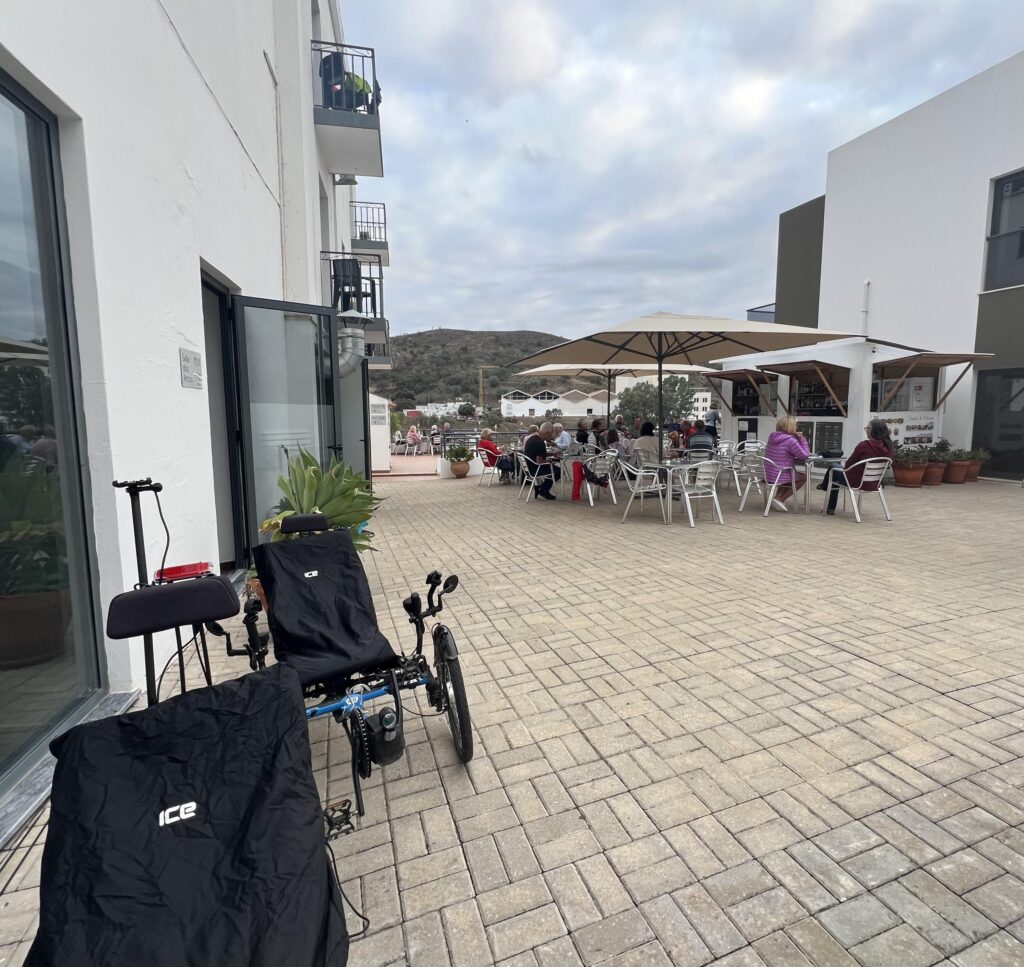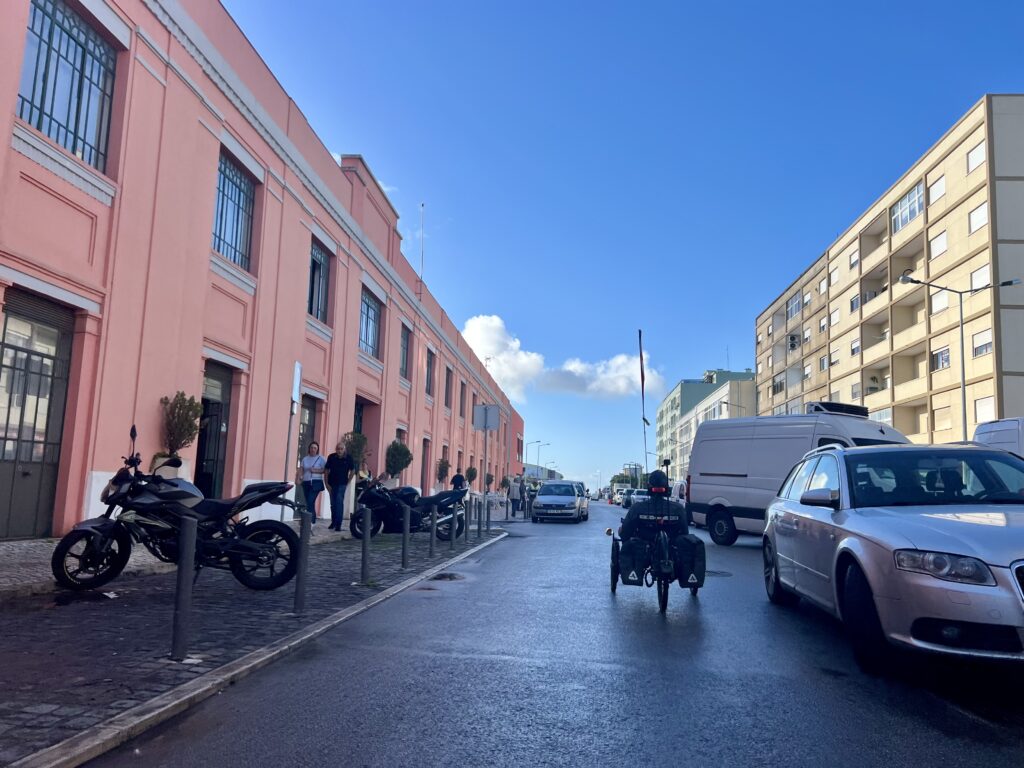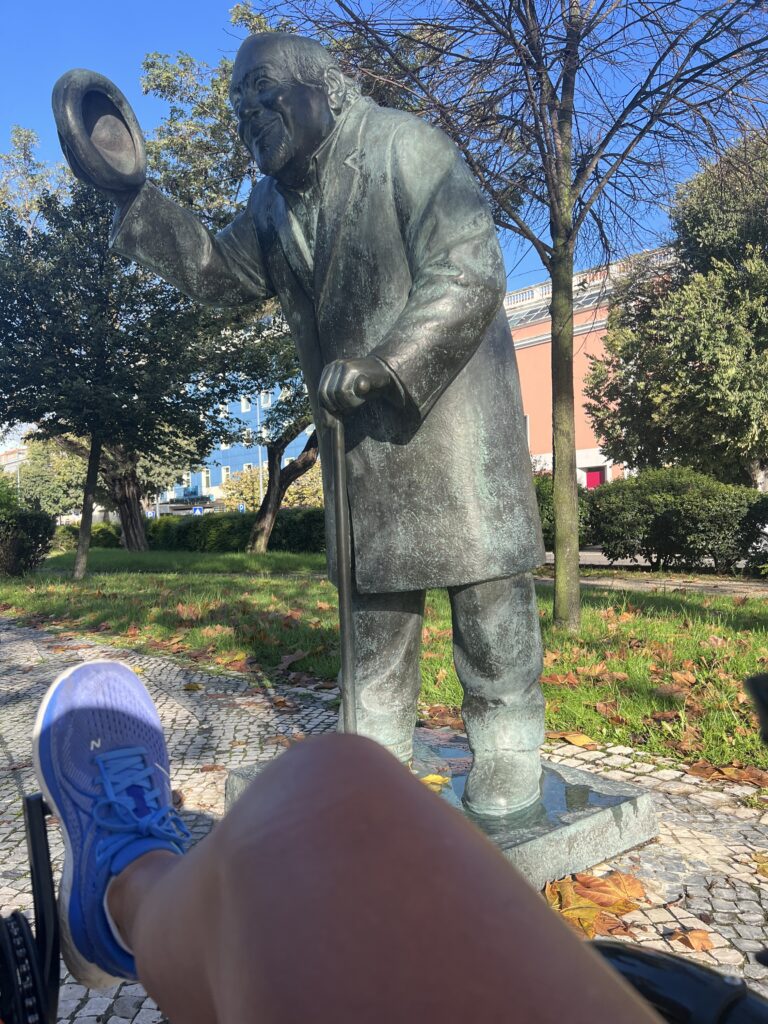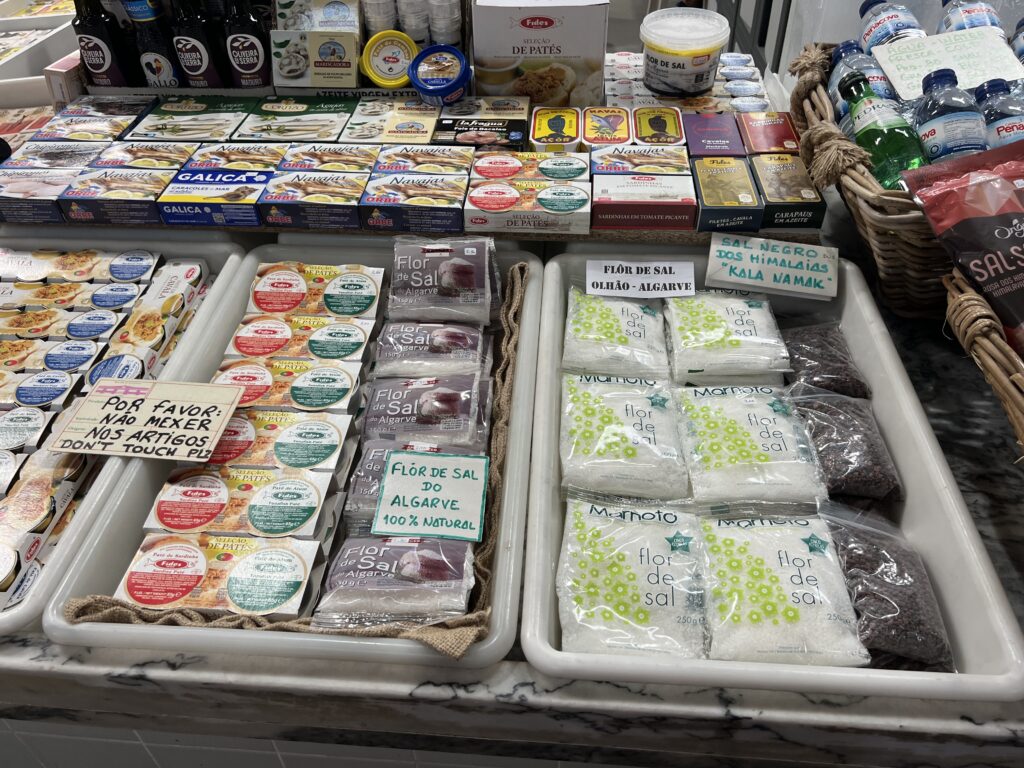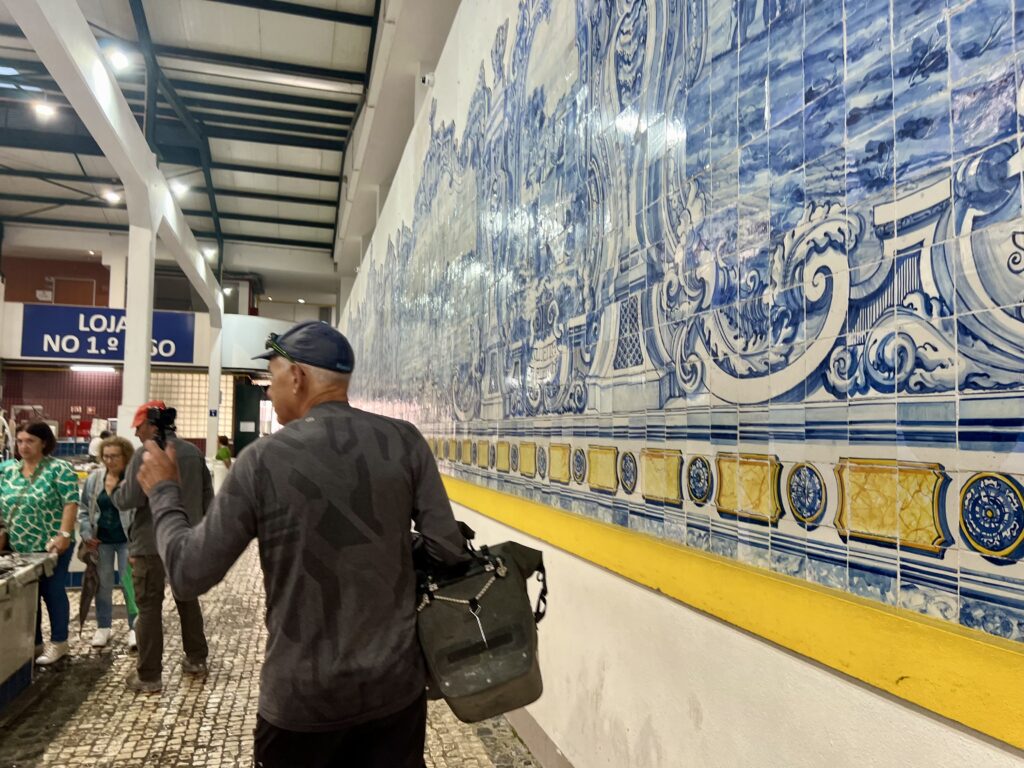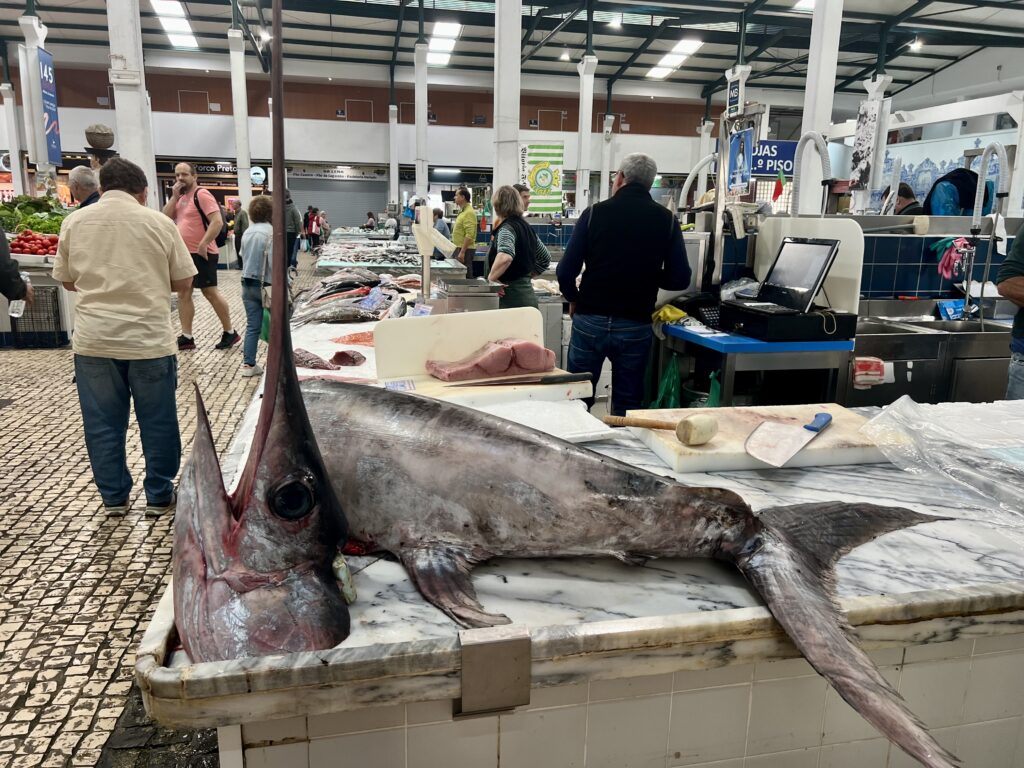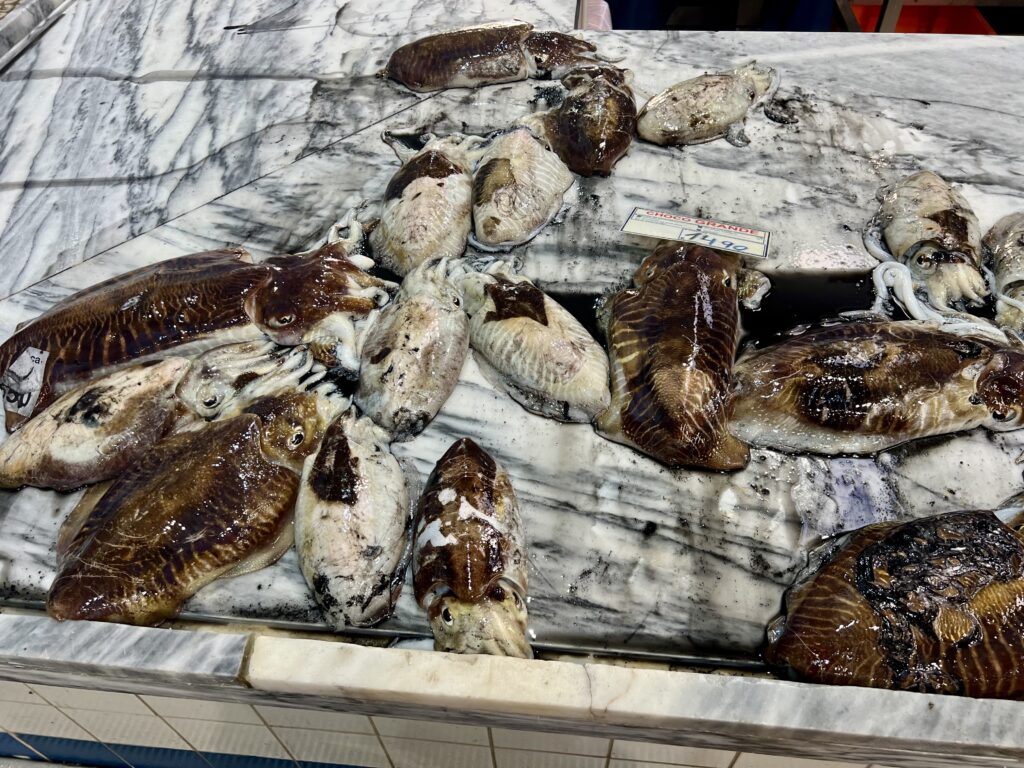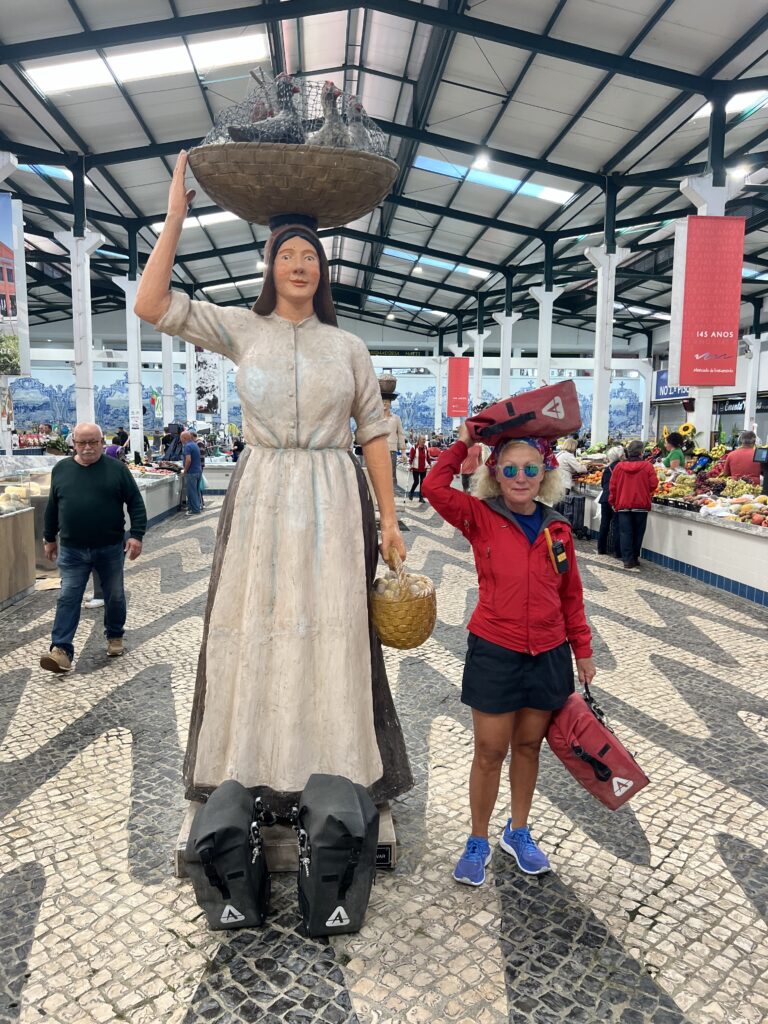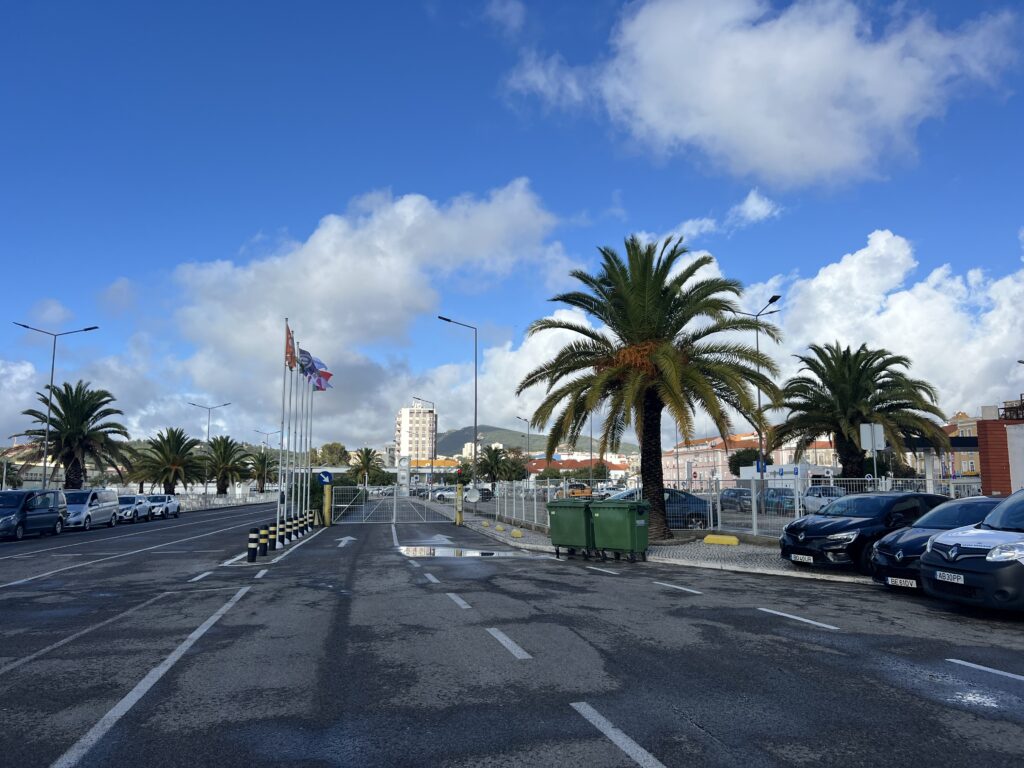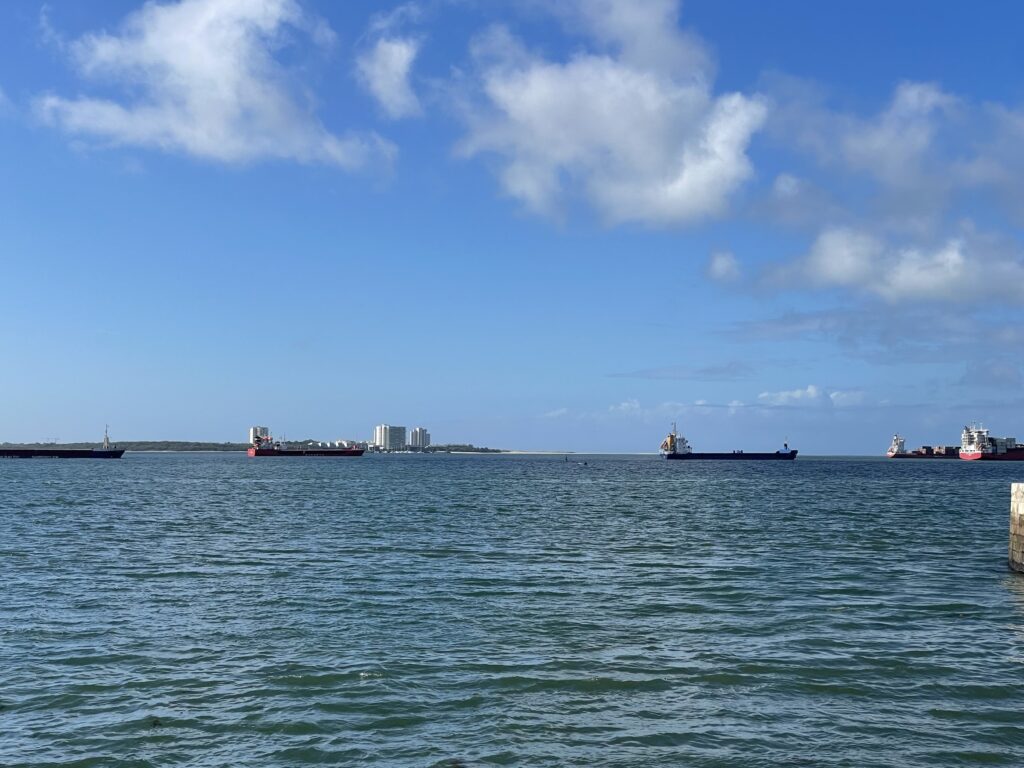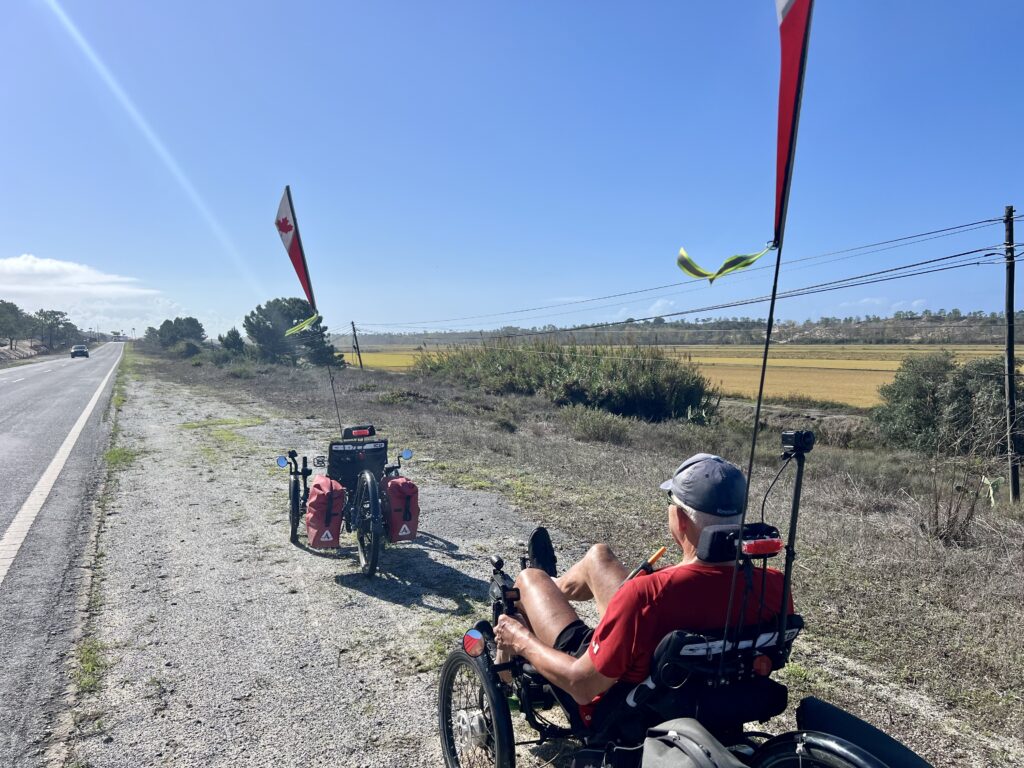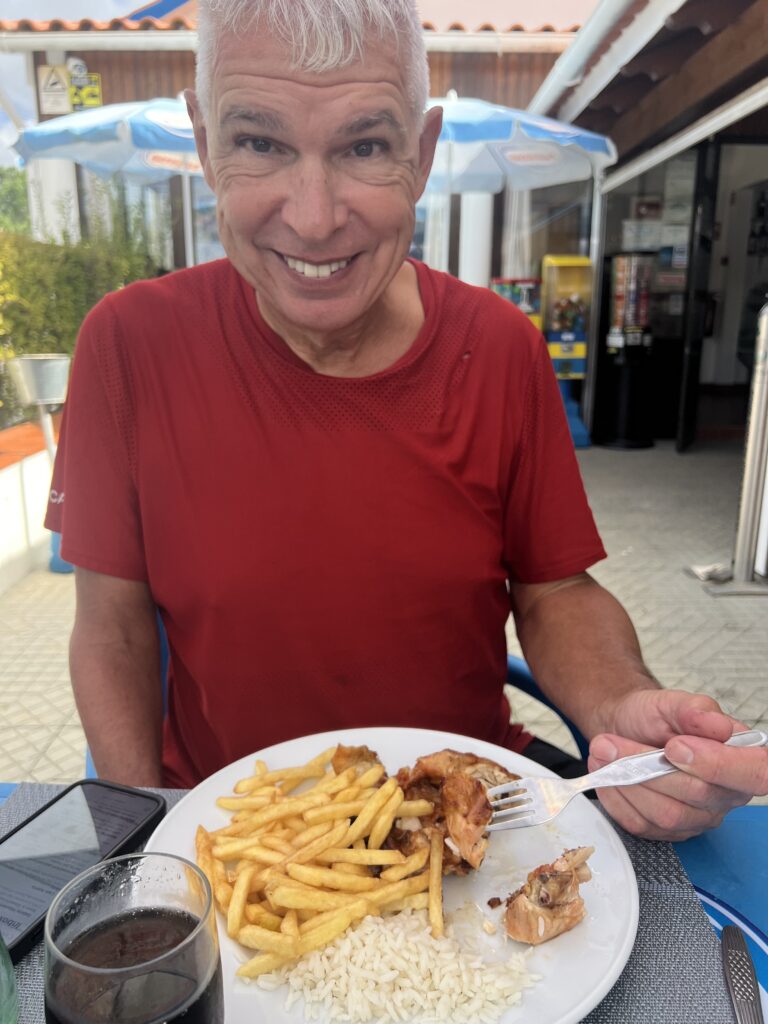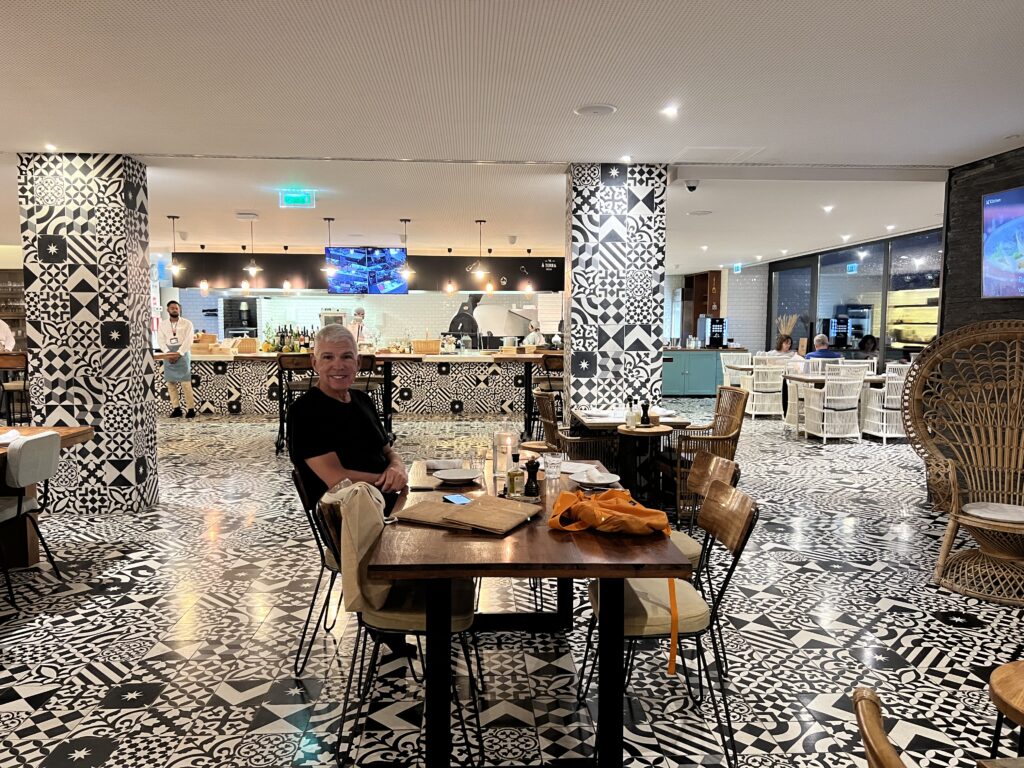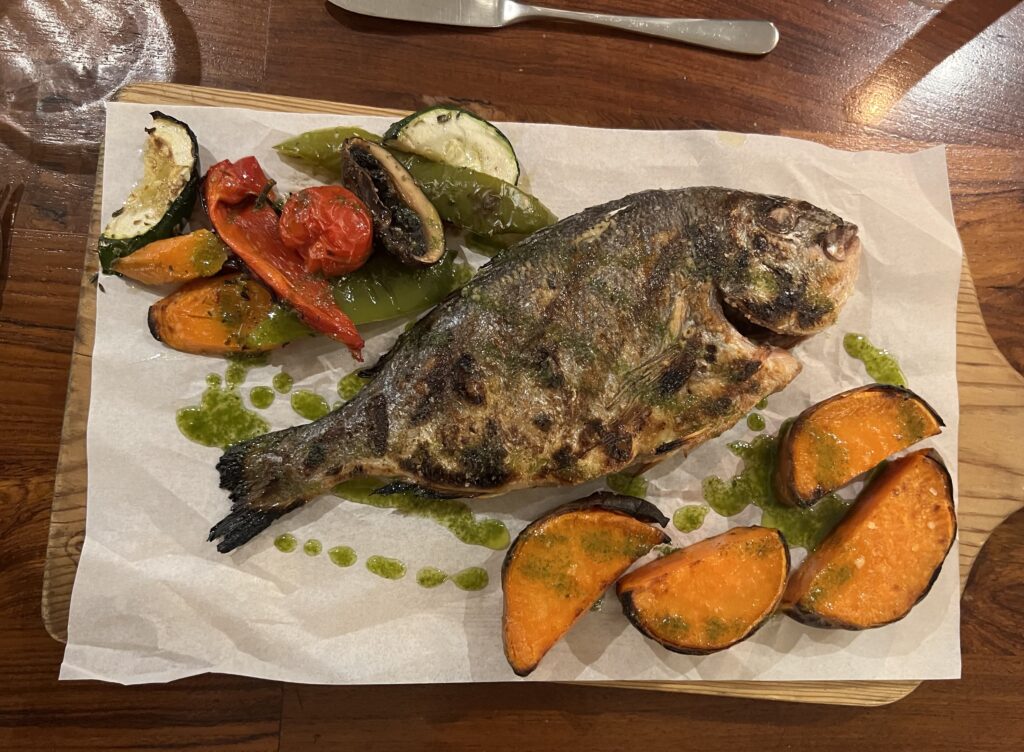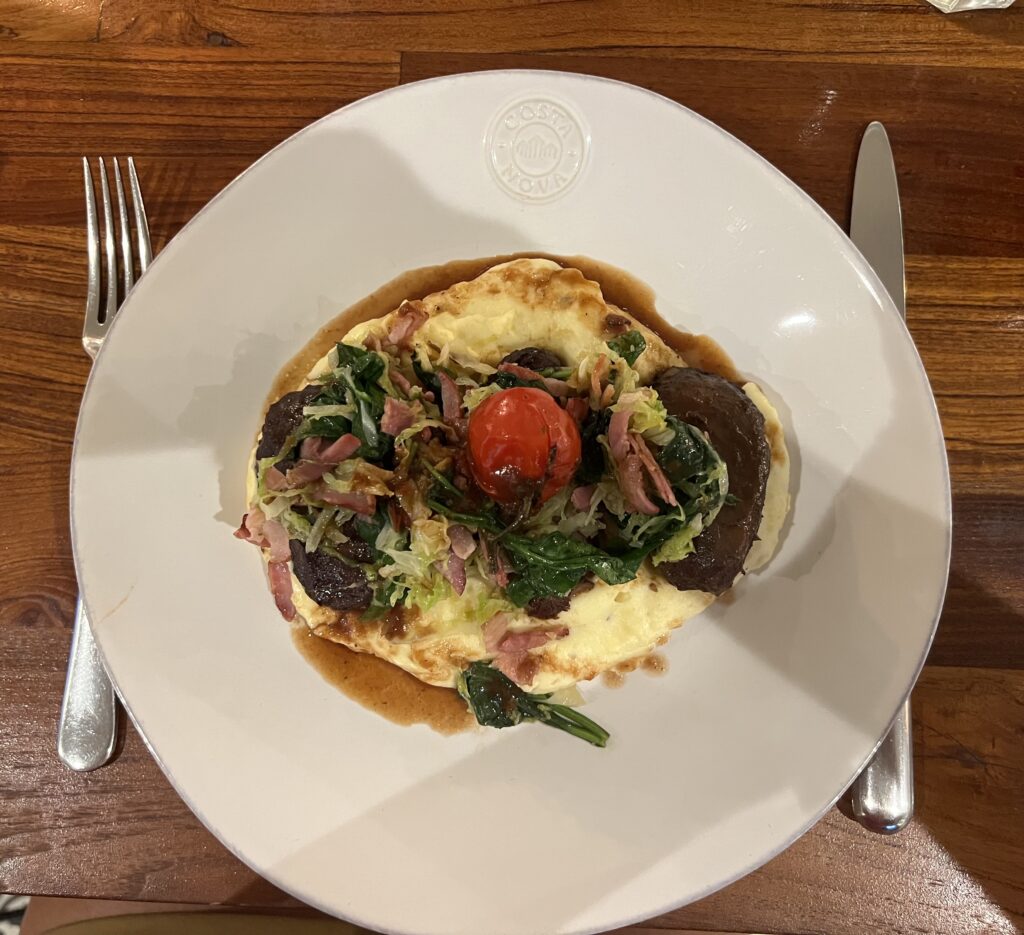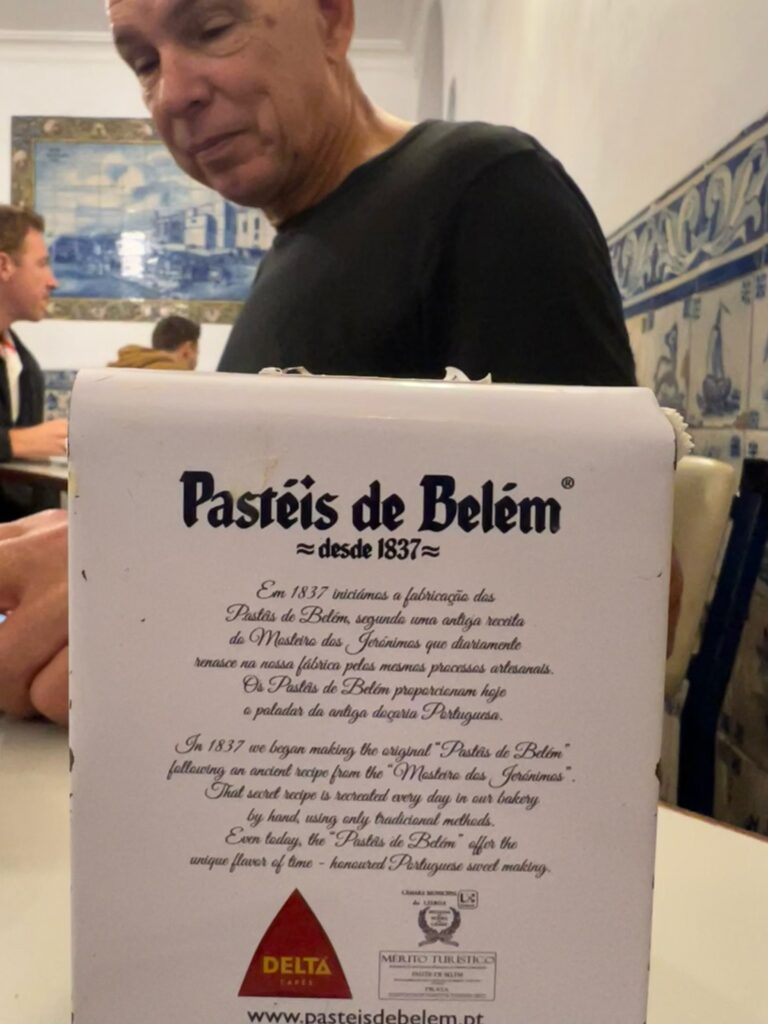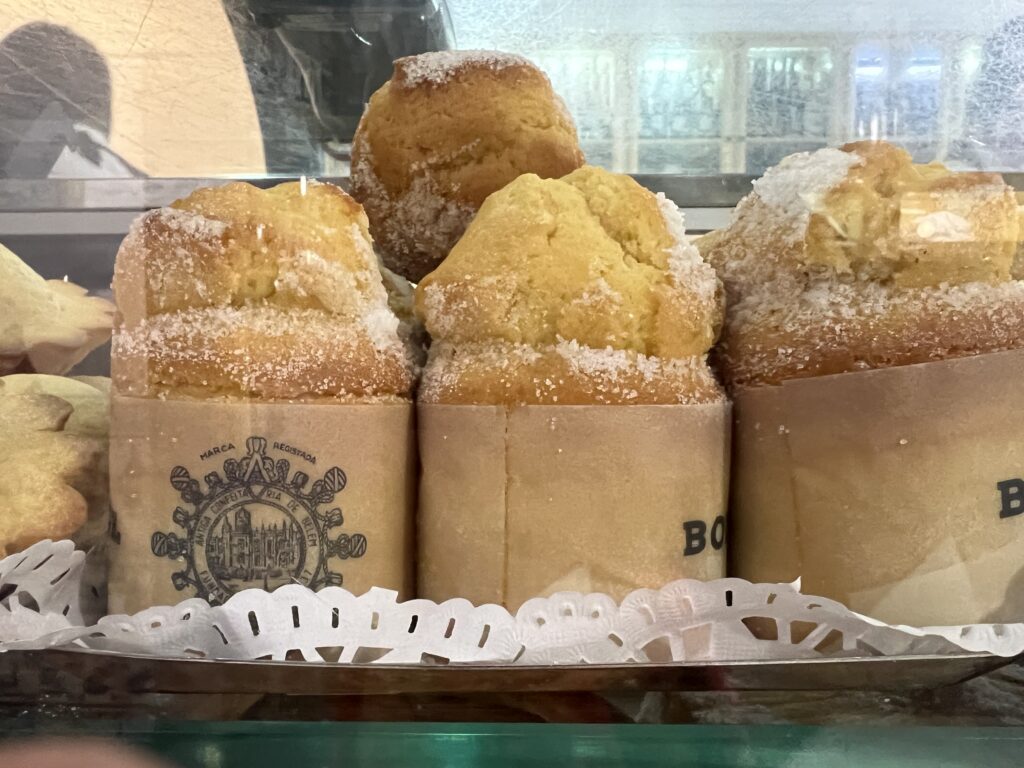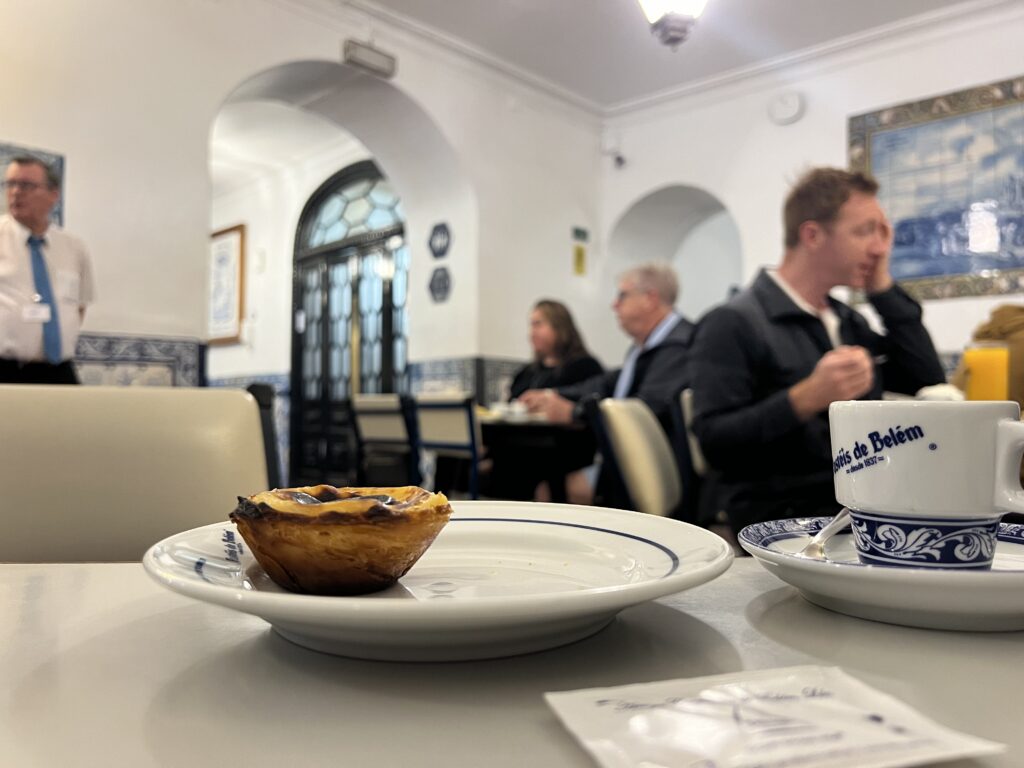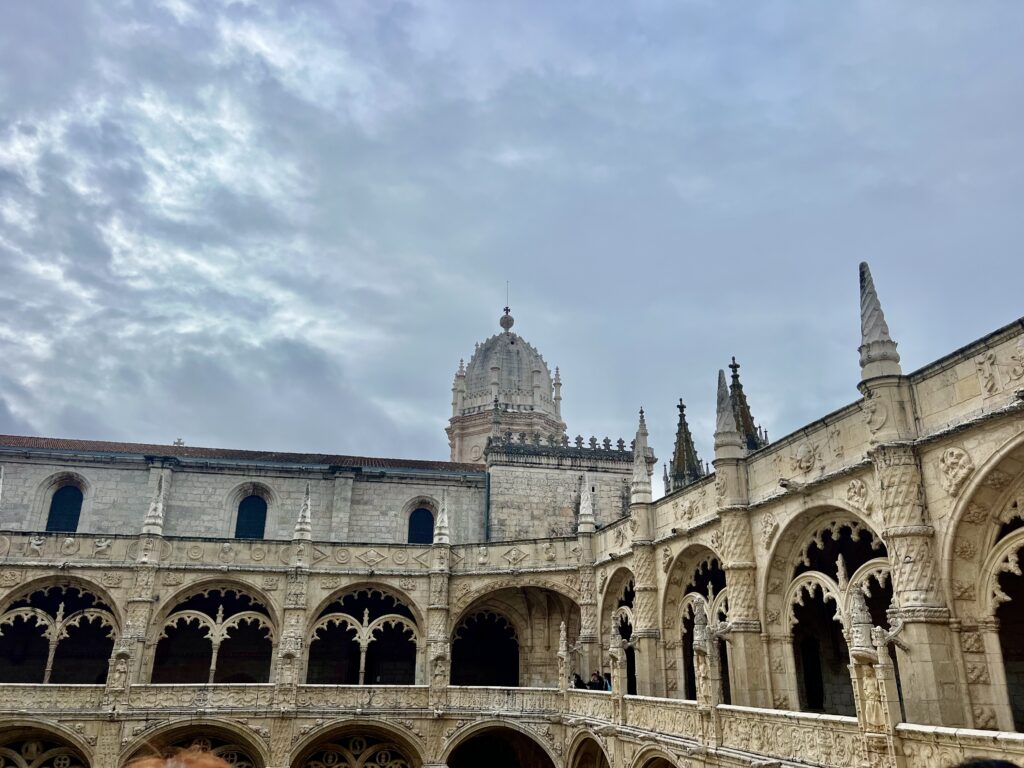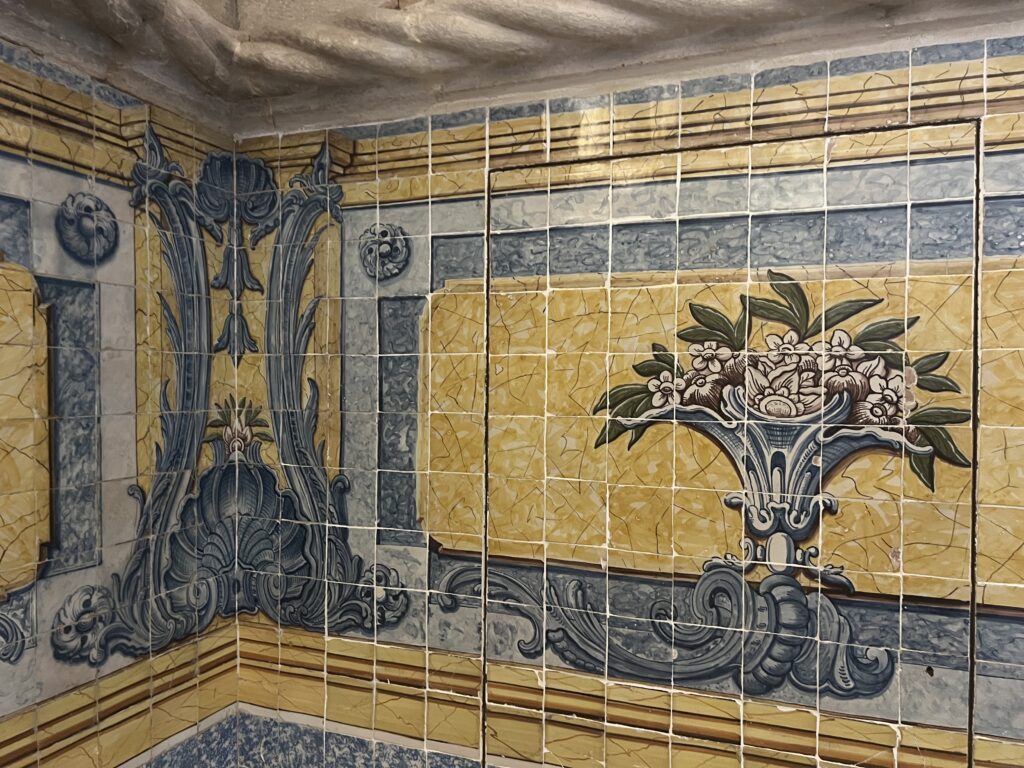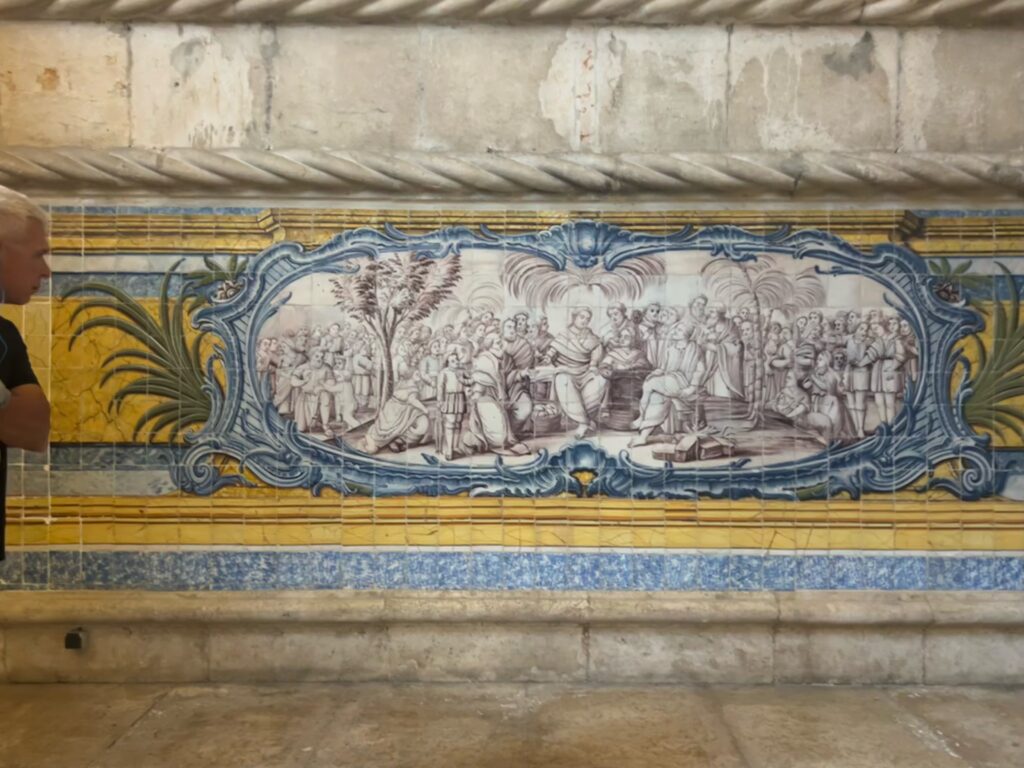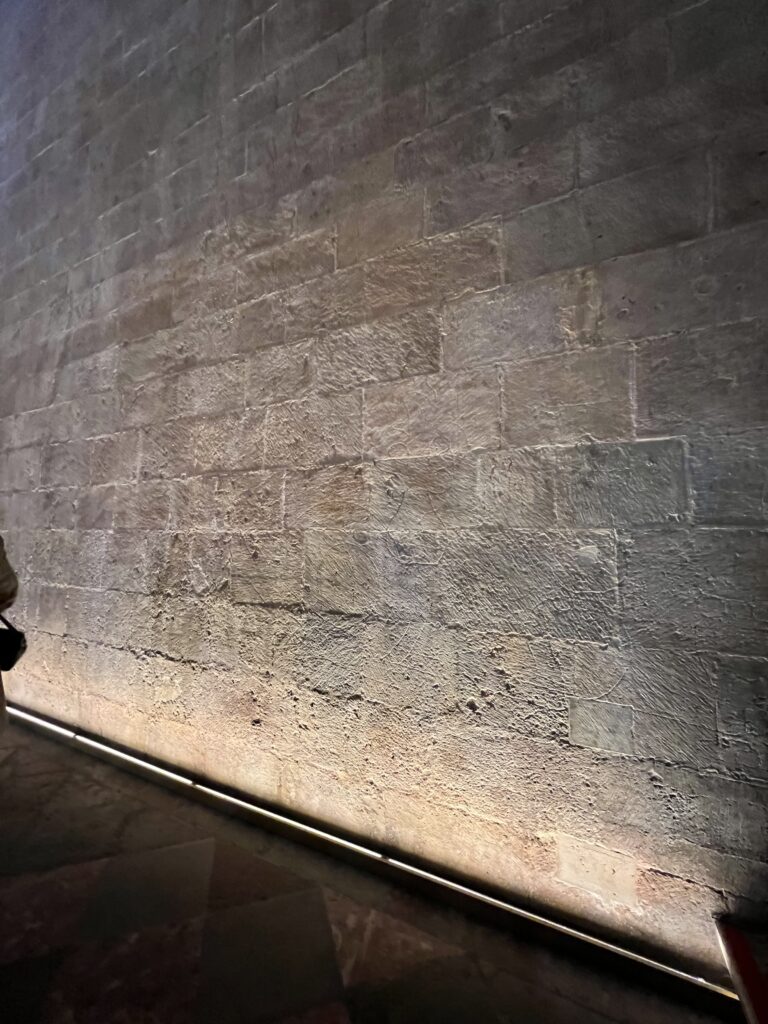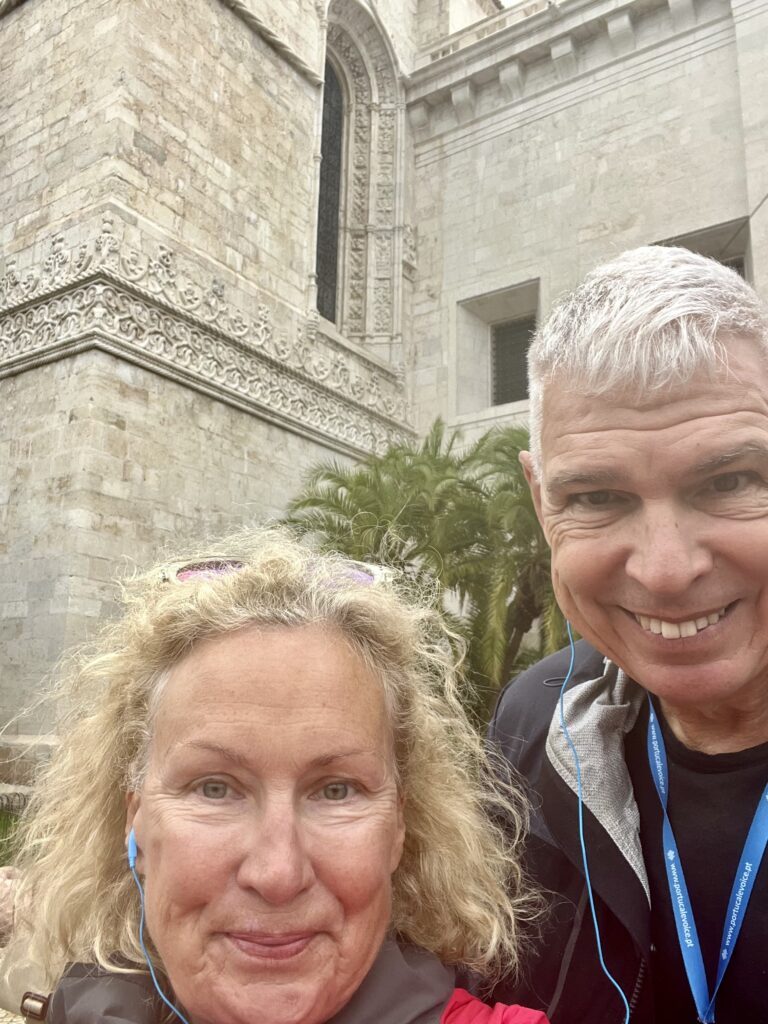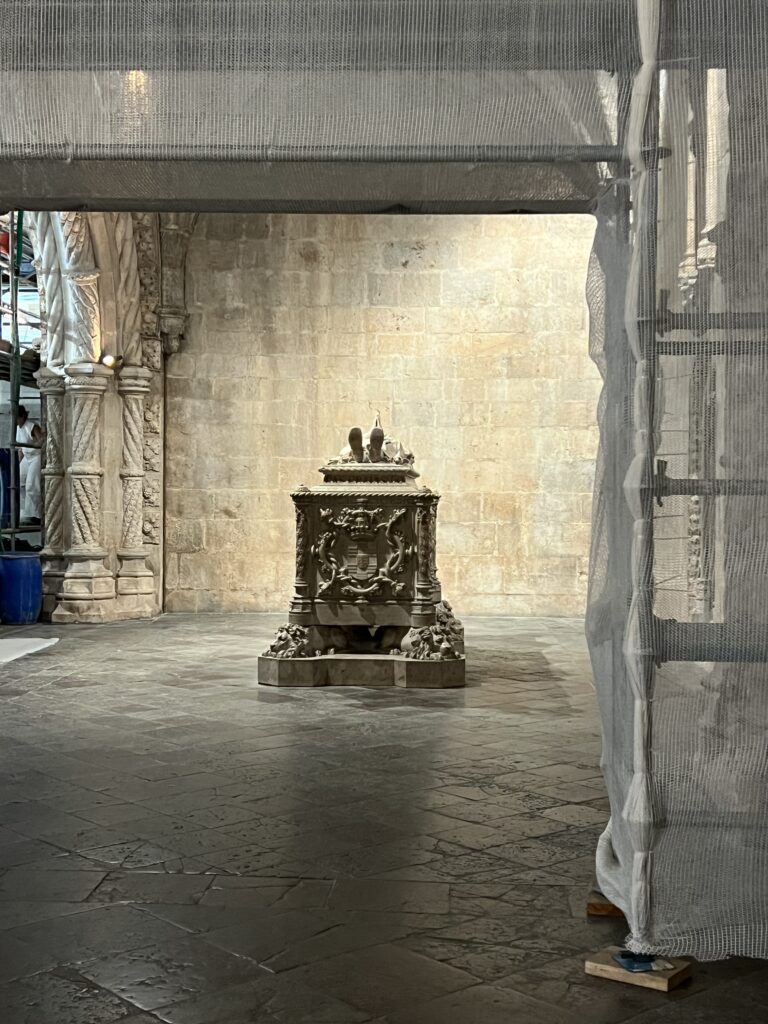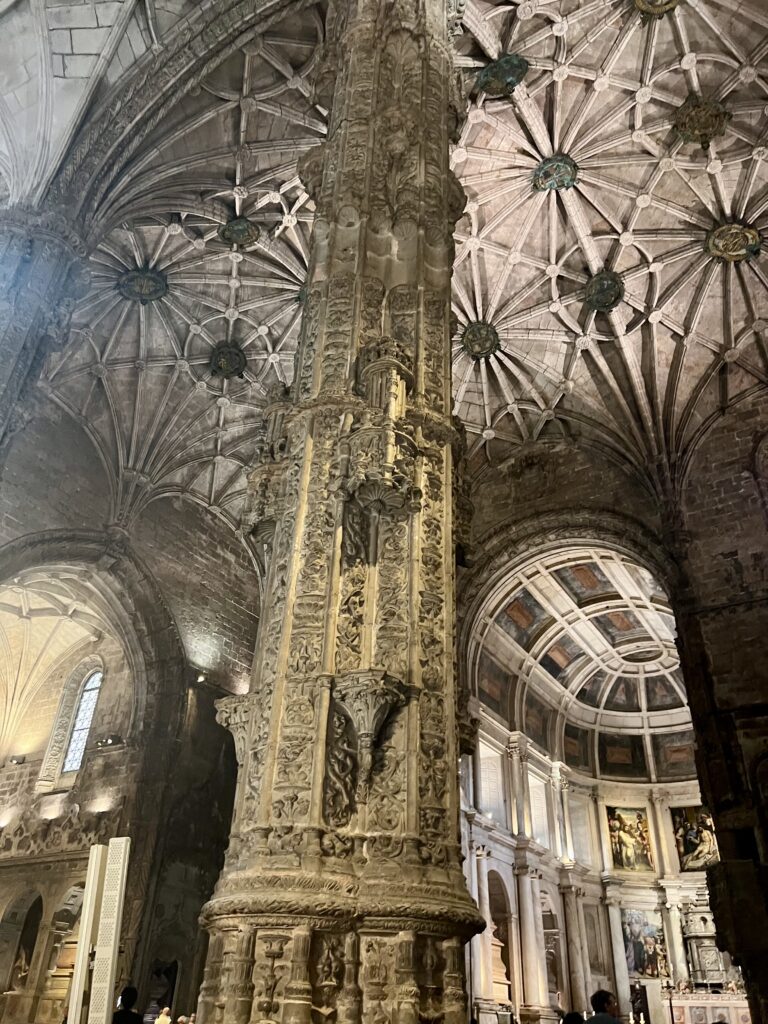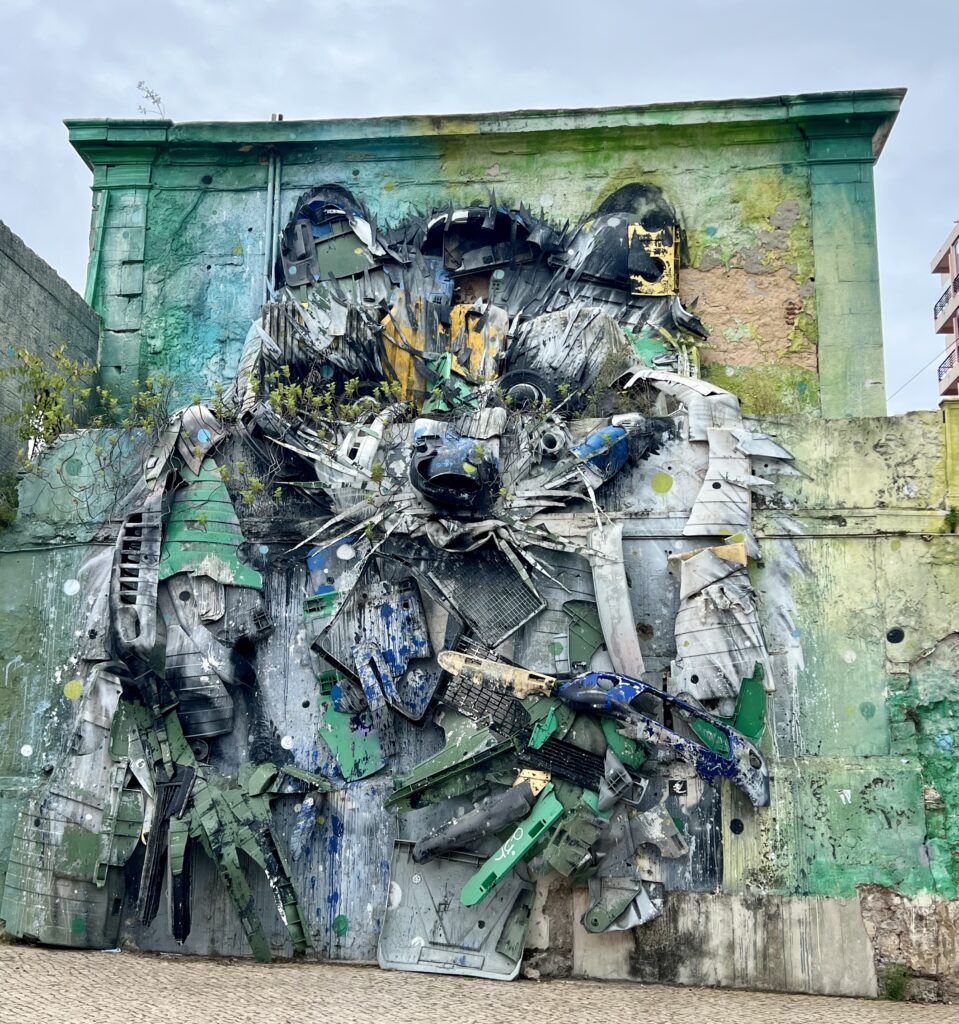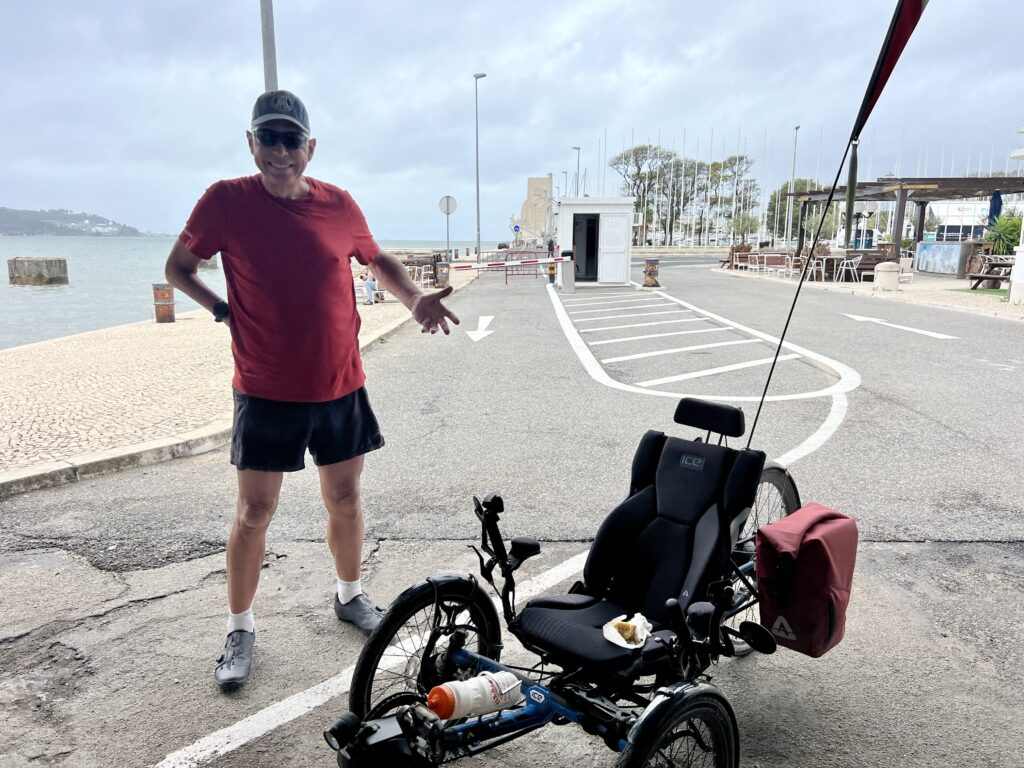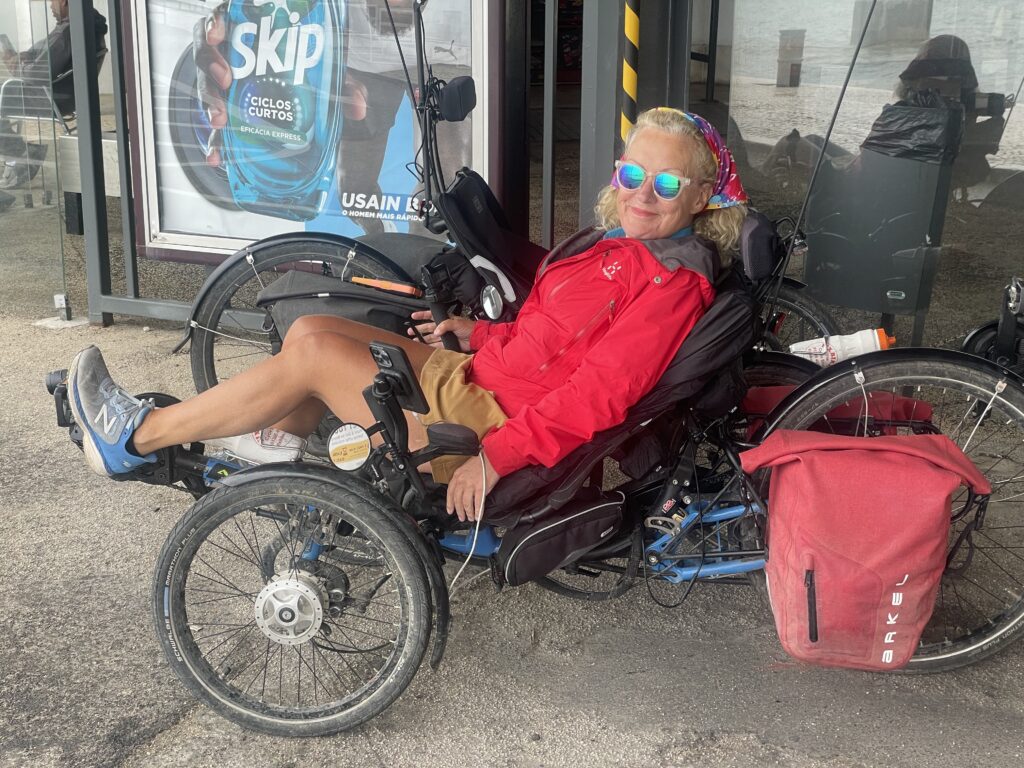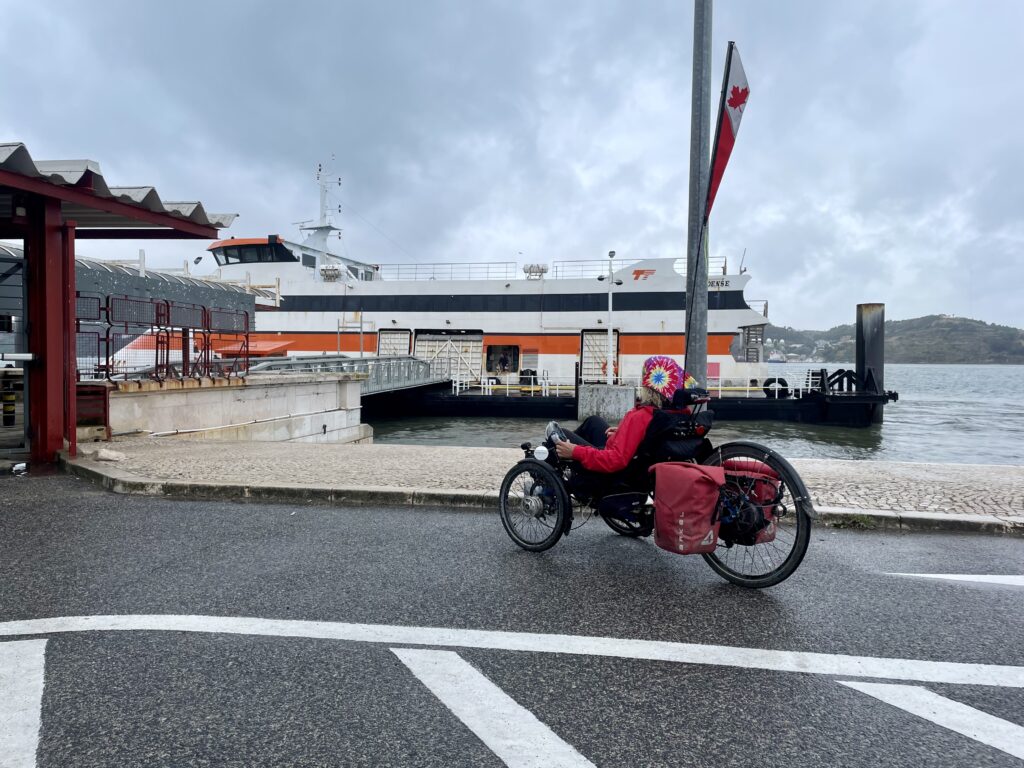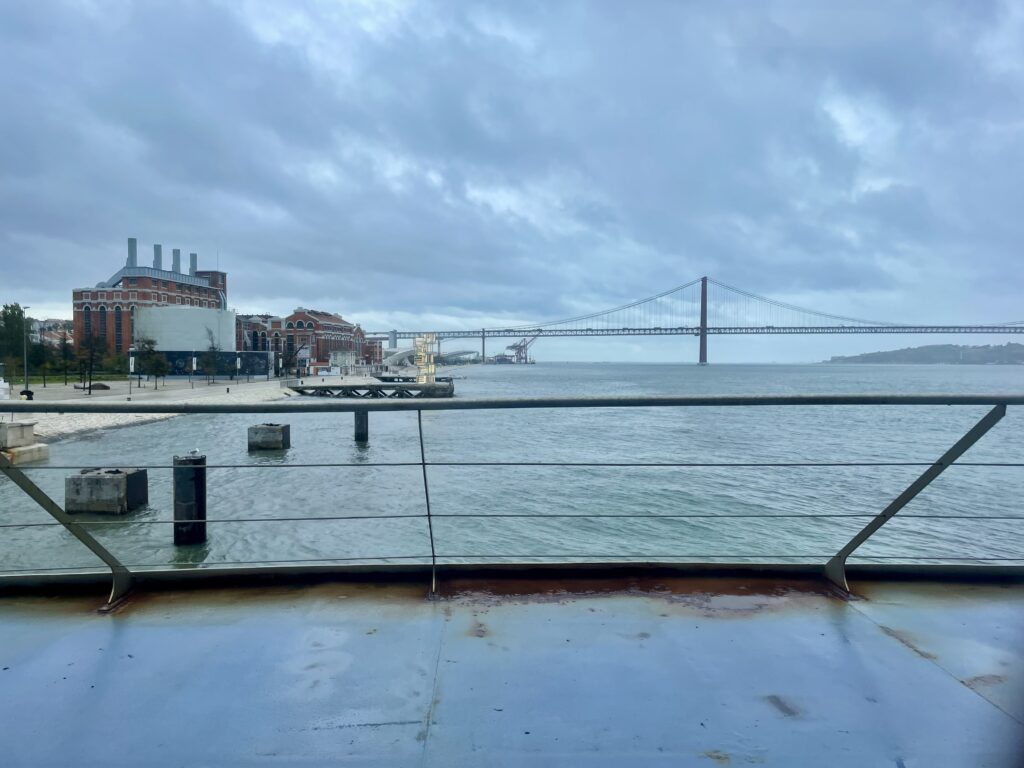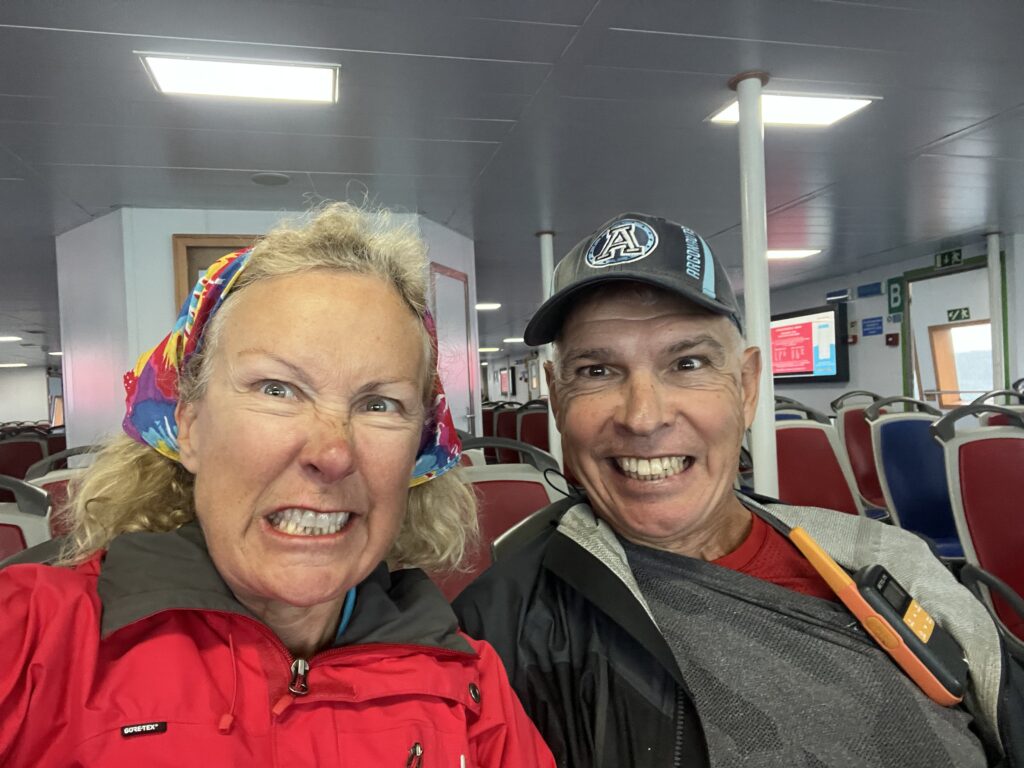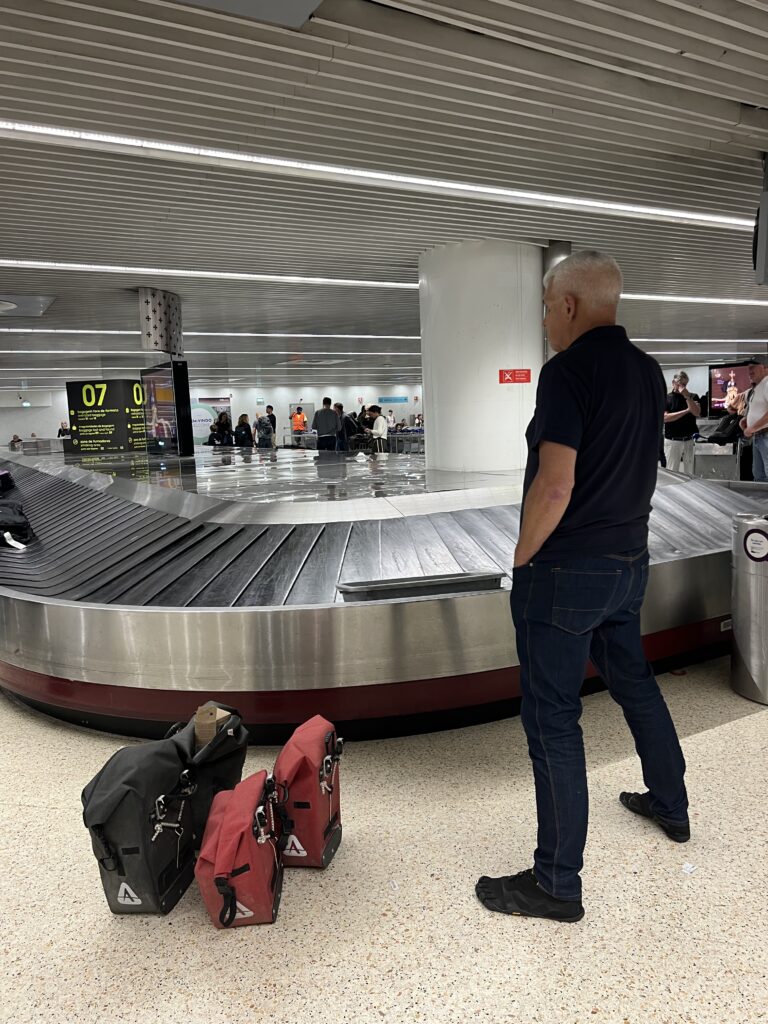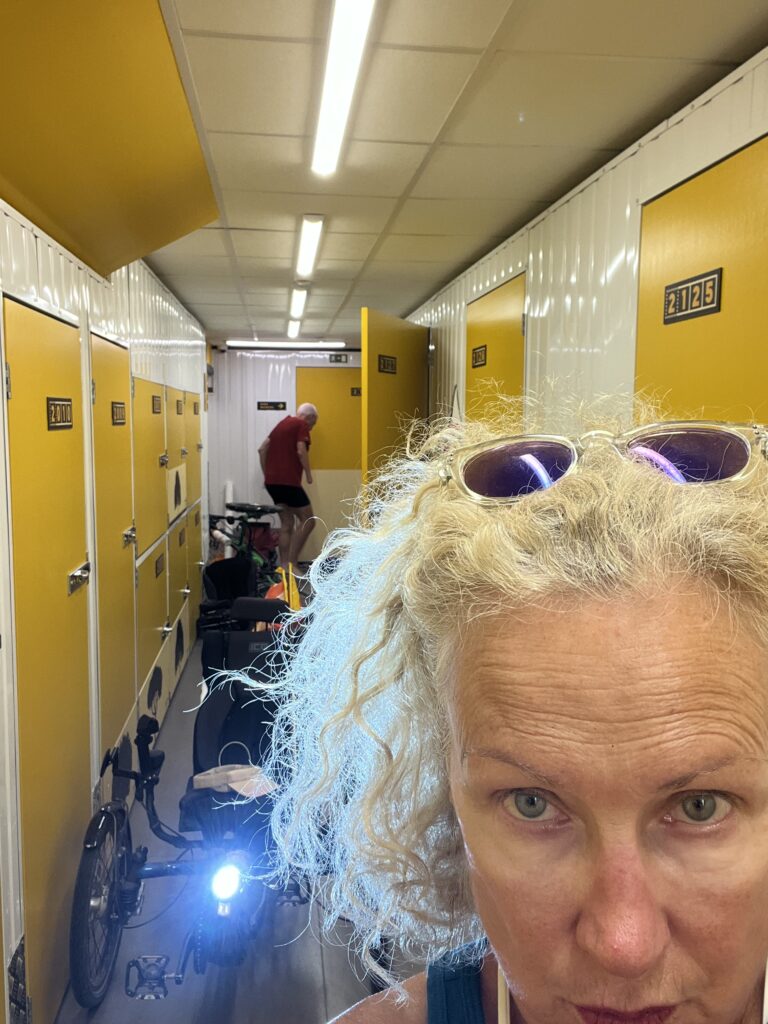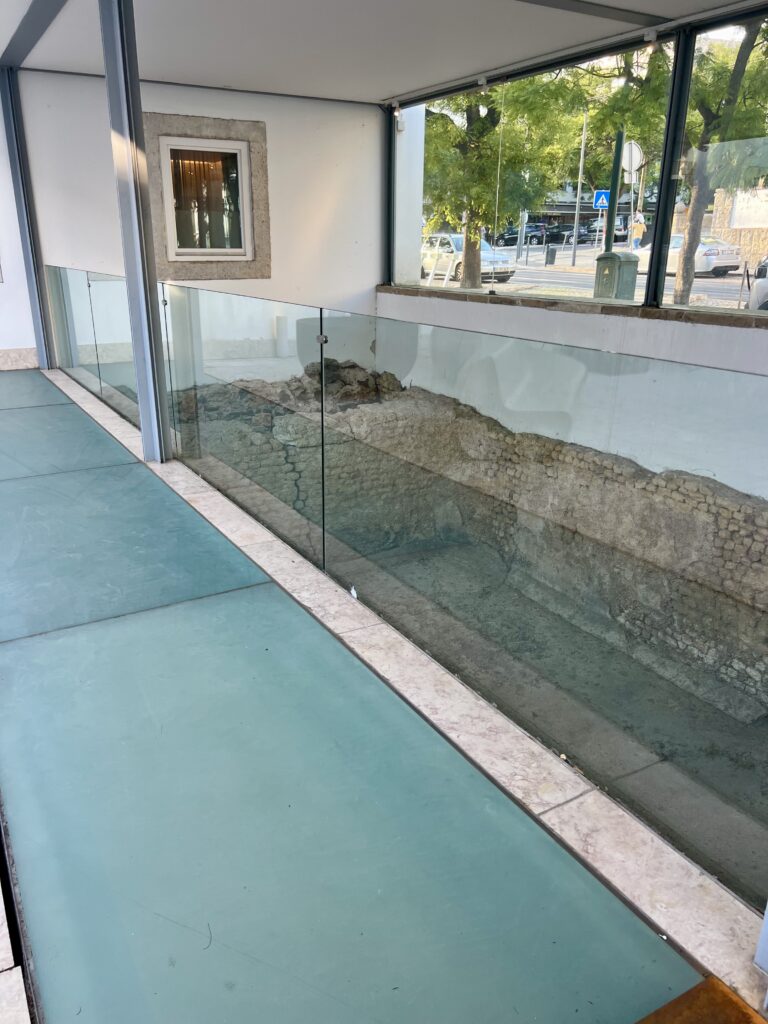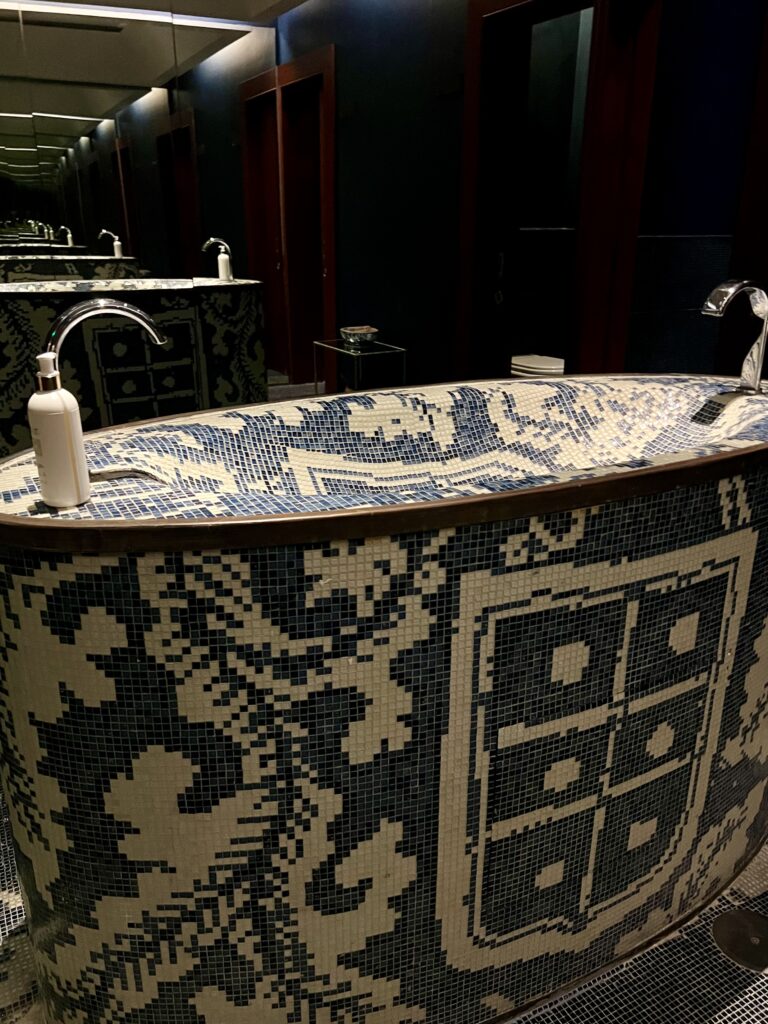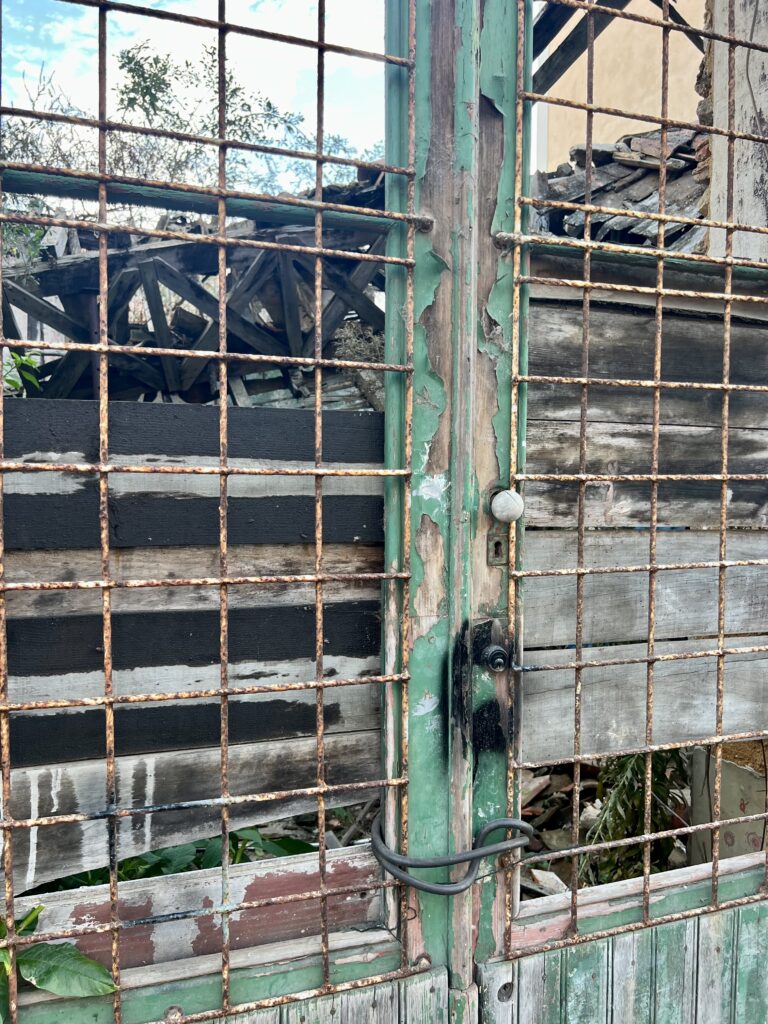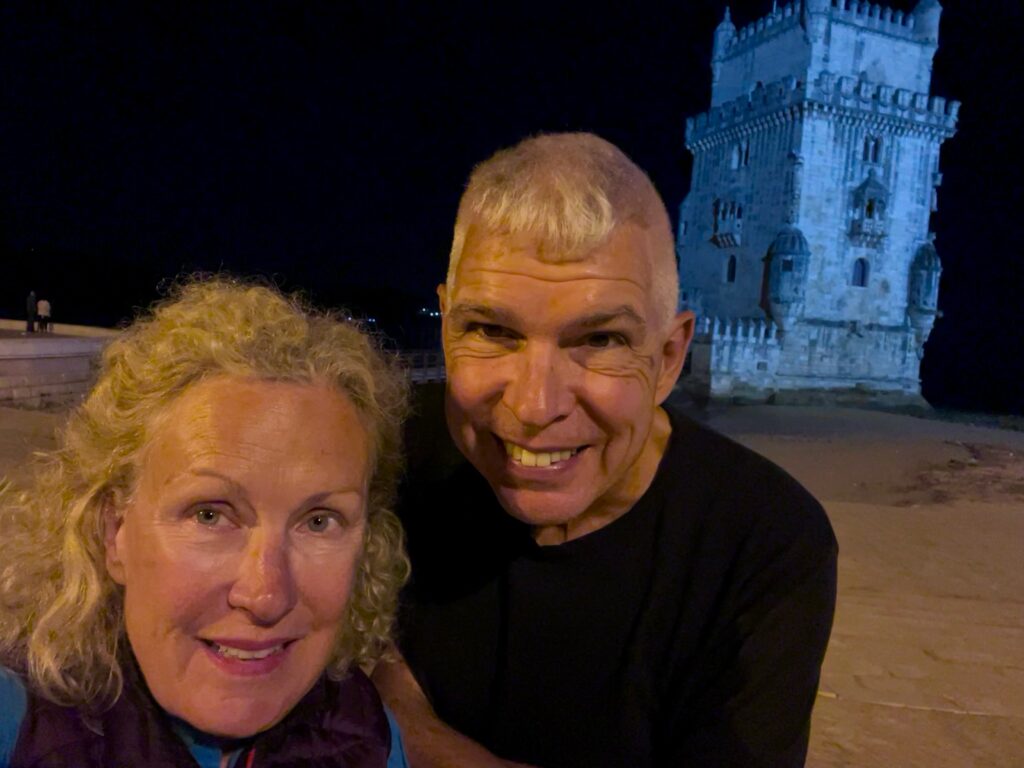Days 11, 12 & 13 – Sevilla, Palma del Rio, Almodovar del Rio & Cordoba(Oct 23, 24 & 25)
We retrieved our bikes from the piano studio in Hotel Amadeus, and unfolded and set them up on a tiny bit of space on the side of the walkway outside the front door of the hotel. There’s always something to fix or adjust, especially when the trikes have been folded, so it took some time, and elicited stares and comments from the international set of passersby.
John had a wish list of small fixes that required tools at a bike repair shop which we luckily happened to spy on the way out of town. (Sevilla is bike-friendly.) Observation: bike mechanics are cool, friendly, helpful gearheads no matter where in the world you are. I like them!
We rode the 88 very very very hot kilometres to Palma del Rio and were relieved and awestruck when we checked into the simply beautiful monastery where we were to spend the night. Stowed the bikes in a large secure shed in the garden, dumped our gear in our room and headed immediately to the huge, unheated pool. It was heaven. Our meals in a very special dining room were gourmet-quality (Duck Confit? Si!). By coincidence we were sharing the monastery with a group of cyclists with VBT, a cycling company that we’ve done tours with in the past, and found out that they were also to be in the hotel that we had booked for Cordoba when we were there. (Sidebar: VBT is an excellent company. Highly recommended if you don’t have a John Loach to do all of the planning and heavy lifting. I believe that this is the route that those cyclists are on. Looks fabulous. https://www.vbt.com/tours/spain-andalusia-guided-bike-tour)
The next morning, since we only had 33 km to ride to our next port of call, we had some wiggle room with available sightseeing time so decided to see if we could tour the privately owned and restored Palacio Portocarrero Alcázar – a palace and famous orange garden. At 9:15 a.m. we knocked on the door and … THE OWNER answered! She told us to come back at ten and she would give us a private tour in English (and promised us samples of marmalade and a “wow factor”). Well, that’s a no brainer: we grabbed an espresso around the corner to put in time and returned to the palace, locked up the bikes and the door opened. The palace has been used for numerous events and it was the set for the movie Kingdom of Heaven with Orlando Bloom and Liam Neeson.
How to describe Cristina Ybarra? An elegant, erudite beautiful Spanish woman of nobility. I couldn’t even begin to guess her age although she has adult children and young grandchildren whom she is proud of. (She shared a video of a four year old grandson singing a multi-verse pirate song complete with actions that she had taught him. Coolest abuela ever.) Along with her husband, twenty five years ago they started restoration of the decayed palace, lovingly rebuilding with authentic materials and design, including the Alcázar which is a living museum of orange trees of hundreds of varieties. Cristina knows all of their names because she procured them. Obviously we loved the whole Palacio, as well as Cristina’s art studio on the top floor. Think of Senora Ybarra as a “Spanish Jackie Kennedy” and you’ll get the picture.
I would say that Palma del Rio was a completely unexpected and beautiful surprise in the trip’s route; John had only put us there as a way point on our route to Cordoba, but it will remain as one of my favourite places ever specifically because of the monastery and the palace.
We cycled the 33 km to our next stop – Almodovar del Rio – staring at a huge hill in the distance the whole time. It turned out that the castle on top of that hill was our destination. Ack!!! We made our way up the impossibly steep hill only to discover – of course – that they were closing their doors at 2 and would reopen at 4:30. We coasted nicely back down that hill and then down another massive hill into town where we grabbed a beer (Coke for John, yay John) and calamari in the plaza outside our hotel and waited for it to open. After much head scratching, the owners helped us stow the bikes in their back garden, we checked into our room, and then walked 25 minutes BACK UP THOSE TWO HILLS to visit Castillo Almodovar which had been used extensively in the filming of Game of Thrones. Don’t mock us: we’ve never actually seen GoT although John insists he read some of the books. We poured ourselves back down those two hills, had a glass of wine (and a Coke for John, yay John!) and went to bed because…
The next morning we had an early-ish start. Our mostly flat route to Cordoba was only 26 km. But, we needed to get there, find the hotel (sometimes a challenge!) strip the bikes, check into the hotel and find our meeting point at 11:30 for a tour of the Jewish Quarter and the famous Mosque-Cathedral. The hotel – Hotel Casas de la Juderia – highly recommended – allowed us to stow the bikes in the maintenance garage, the mechanic there shared his extension cord with us so we didn’t have to carry the batteries and equipment up to the room (LUXURY) – and we made it to the tour on time. “Maria” from artencordoba.com gave us a rich, fact-filled, rapid-fire tour of the mire of streets in the Jewish Quarter and then we hit the Mosque-Cathedral.
Wowzer. Google it. Highly recommended. Our photos don’t do it justice.
We made our way back through the throngs of people outside the mosque and into an Uruguayan restaurant for oxtail tacos and empanadas, back to the hotel for a nap and to warm up (the temperature has dropped 10 degrees and it’s rainy!) and then… at 8:00 we saw a very impressive horse show with flamenco dancers at the Royal Stables of Cordoba. Spanish horses are, of course, very respected and we are in Andalusian horse country. It’s a rich tradition. I love dressage. It was a perfect end to a perfect week.
Our Ride With GPS Collection, so far. Open to see where we’ve been and the routes for each day.
And don’t forget that most of the movies are 360 views so you can swipe left and right on them to see more!!!
